Our Farms
Sulivara
Doddabele
Hunnigere
Maddur
Gundlupete
Maloor
Muthanga
Sulivara
Sulivara Farm (Karnataka)
Farm area : 04 acres
India is the largest producer of rice in the world, after China. Historically known for growing more than a lakh varieties of rice, today India is left with nearly 50 varieties, with many on the verge of extinction. To this day rice continues to be the staple food for more than 50 percent of the population in India.
Thus, in a bid to revive the traditional varieties of paddy, and thereby rejuvenate the soil in the process, we transplanted two varieties of paddy in two of the four acres in Sulivara, near Doddaladamara, Bangalore rural.
We cultivated Kakisala (black rice) and Mallikuruva, both indigenous varieties, in one acre each in August 2022. In four months we harvested paddy, in December, oblivious to the heavy rains that lashed and tried to play a spoilsport. We have also grown sugarcane.
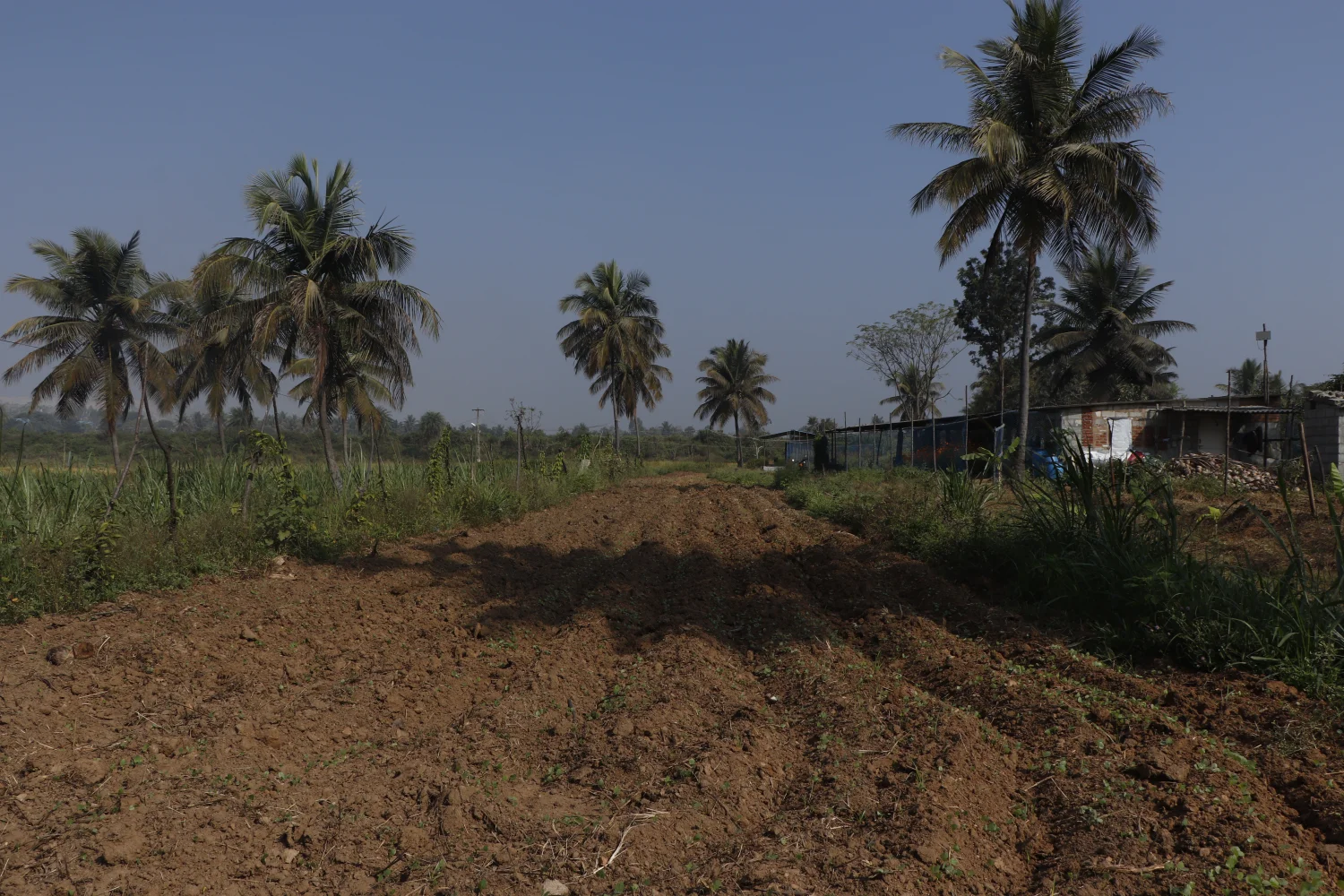
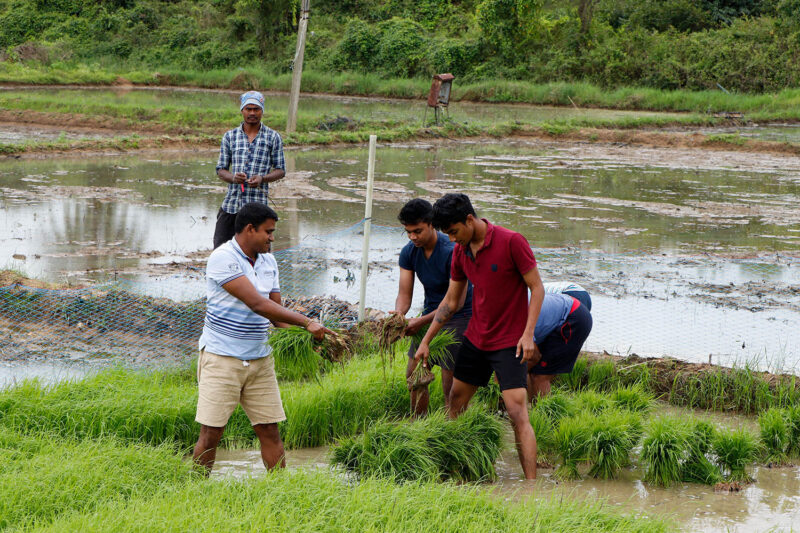

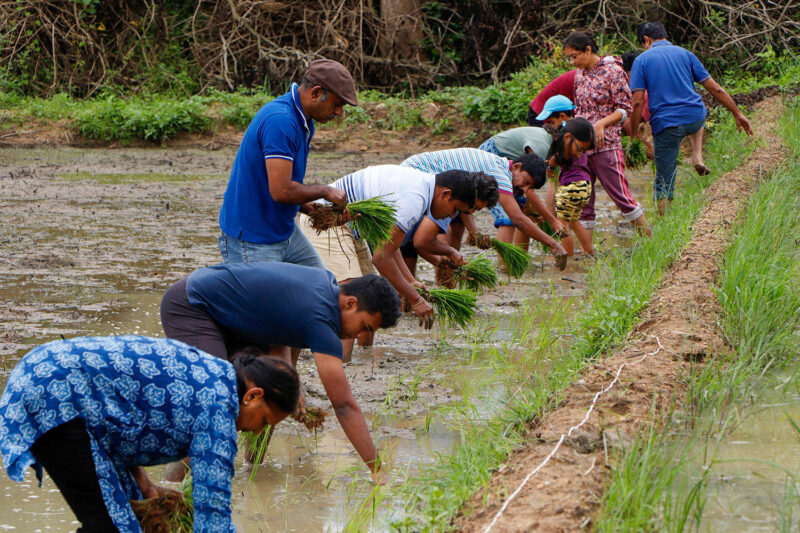
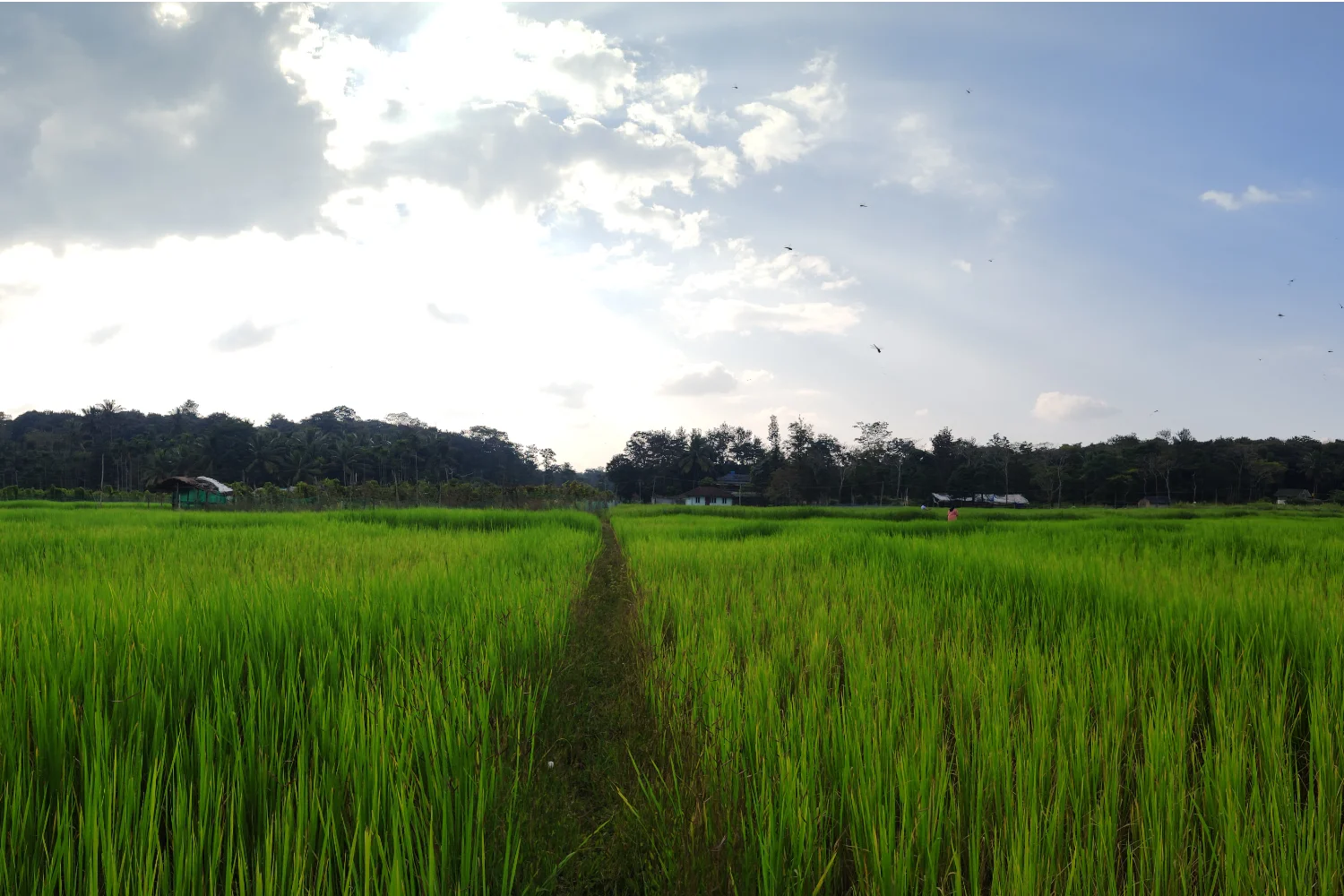
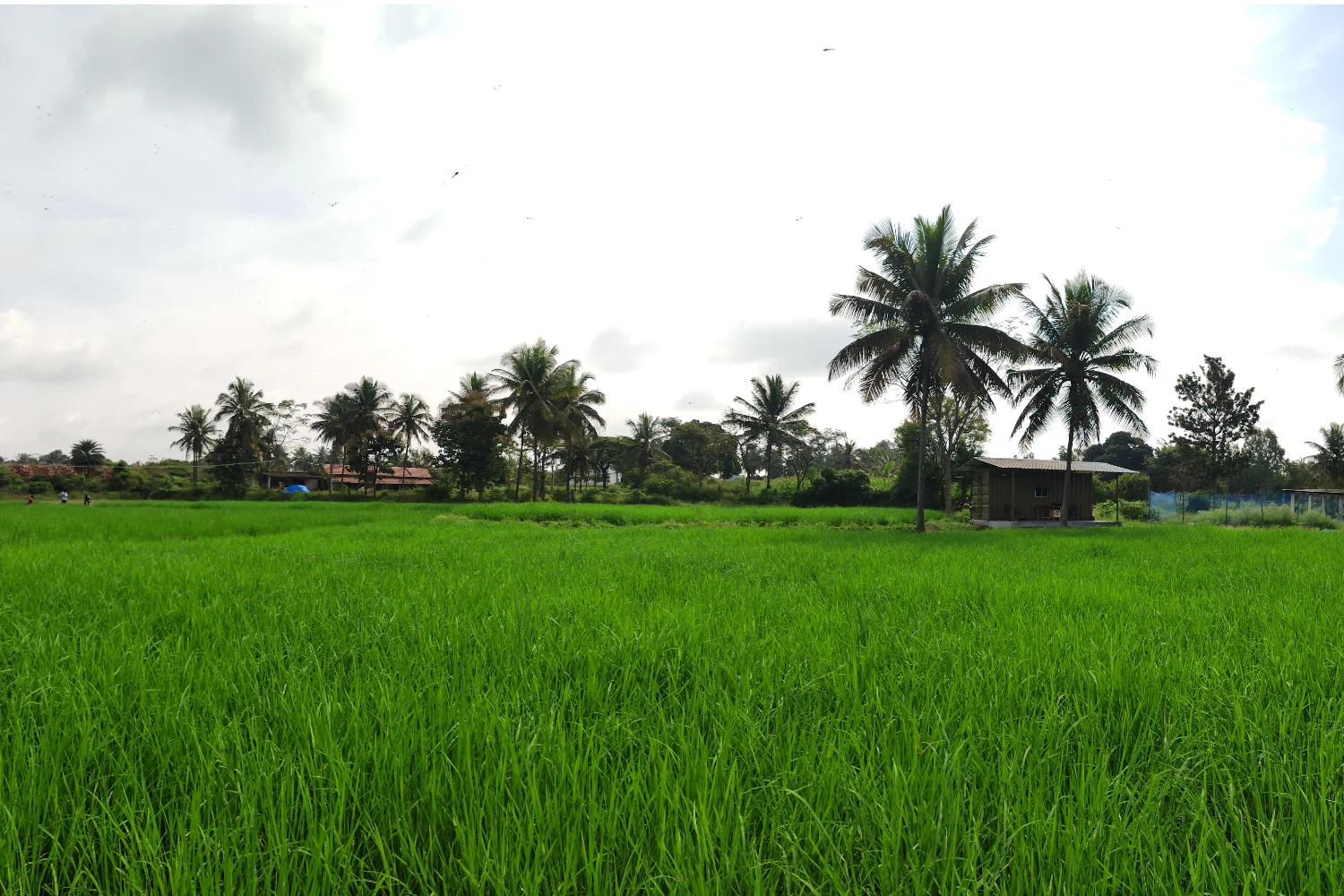
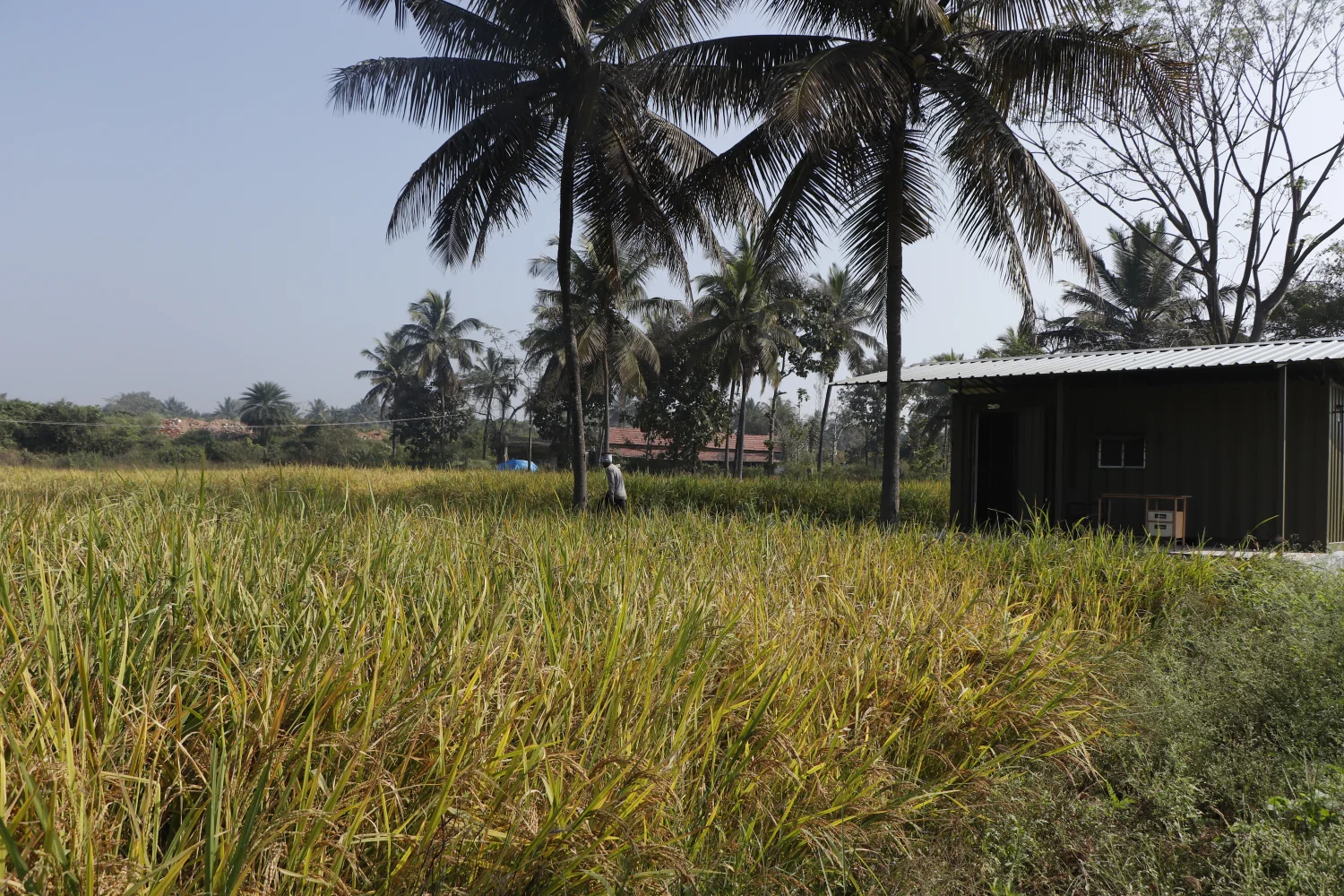
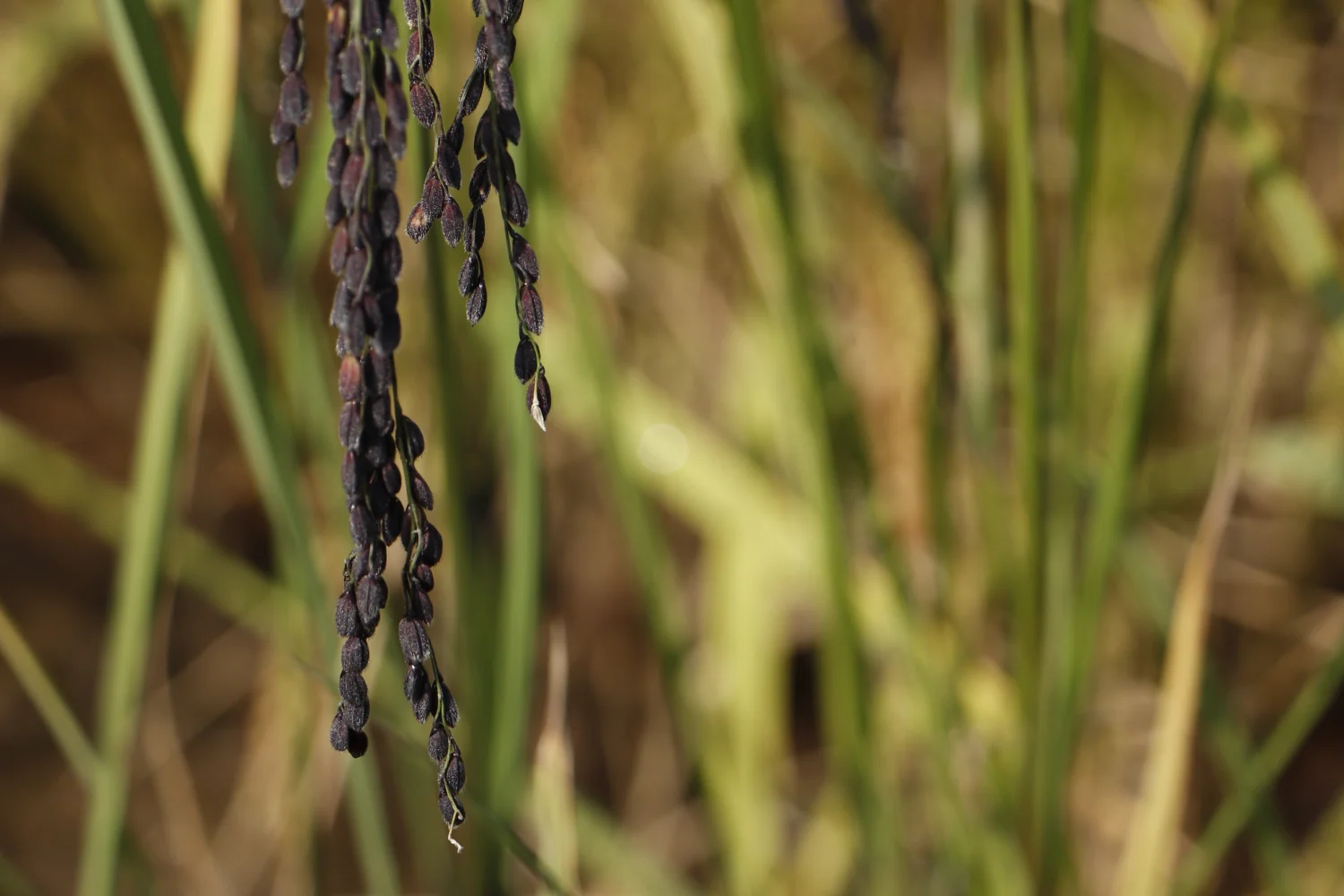
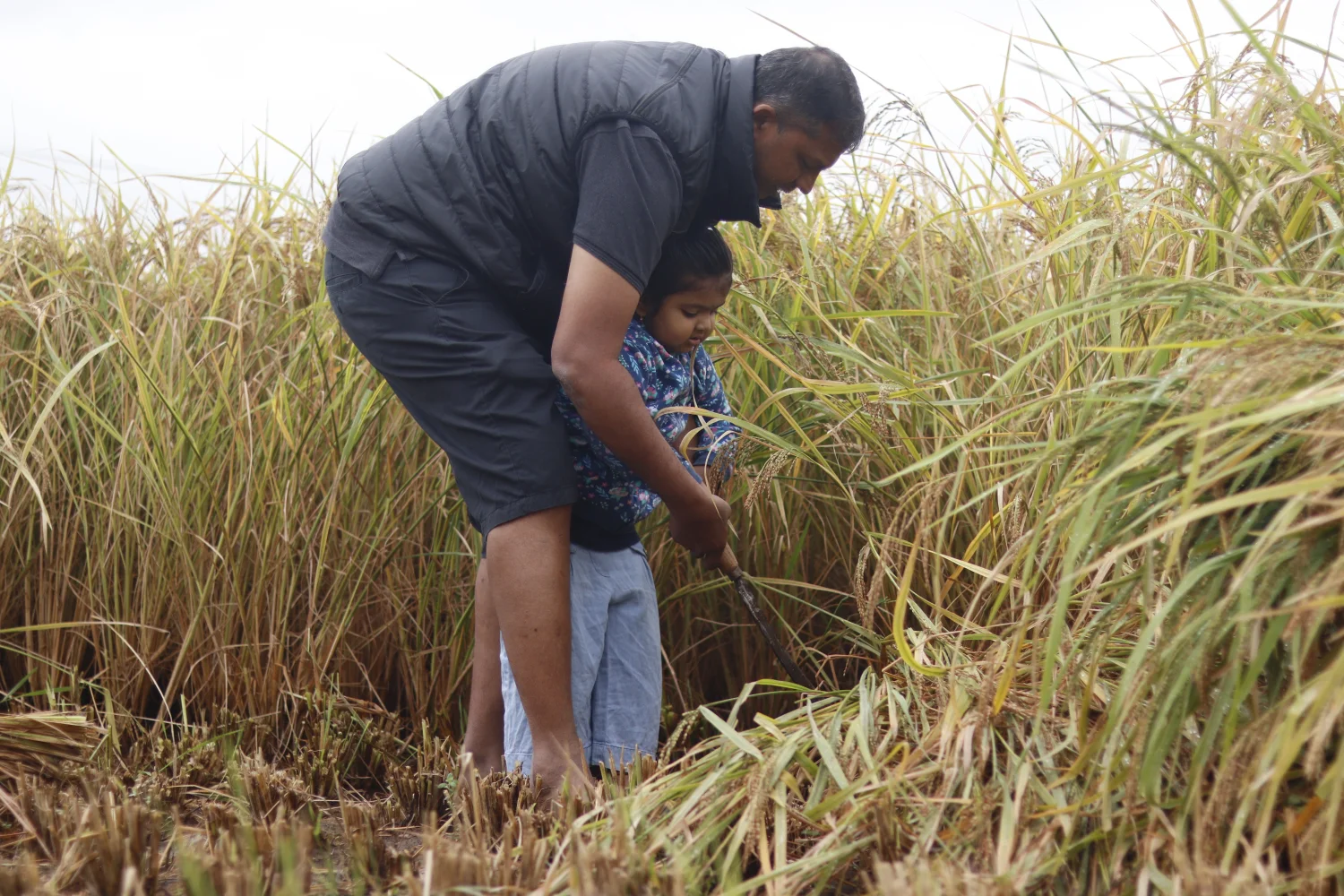
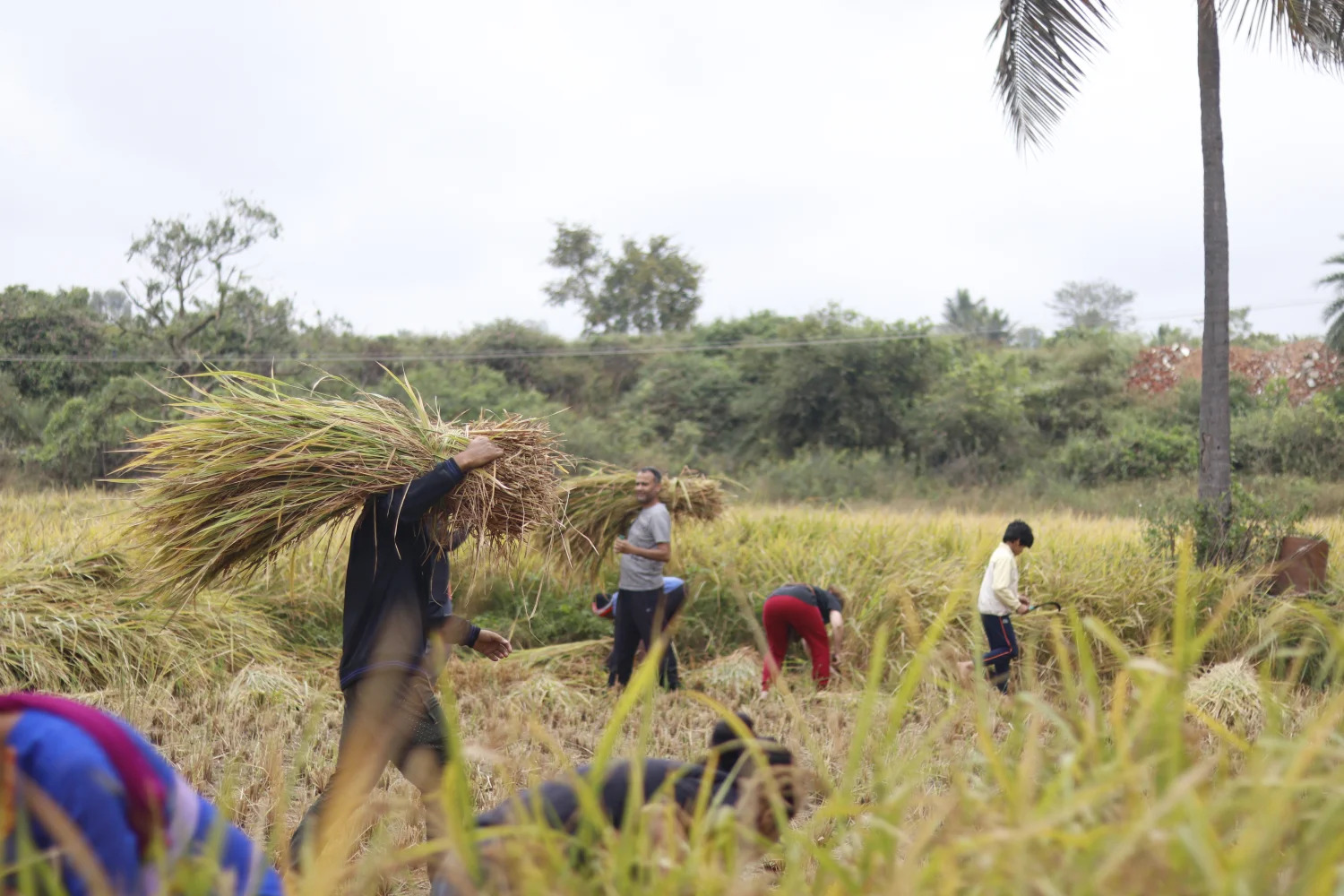
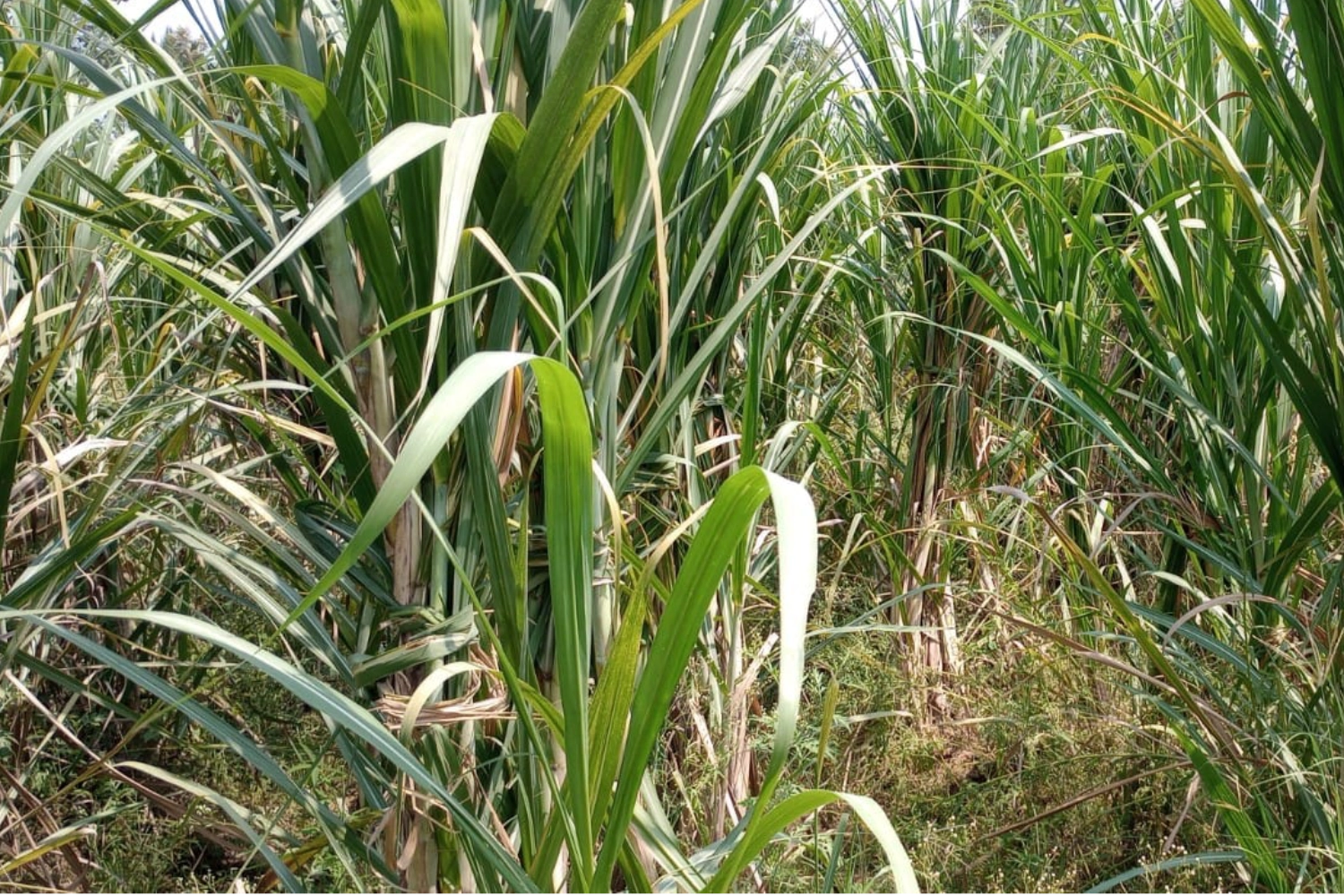
Previous image
Next image
Doddabele
Doddabele Farm (Karnataka)
Farm area : 2.5 acres
A farm land that was once arid with a few coconut trees, is today a land where a variety of vegetables are grown and greens are harvested fresh every day. Liquid manure and compost prepared at the farm, scientific use of drip irrigation, mulching to cut evaporation loss from the soil have slowly transformed the once infertile soil into live and humus-rich soil. Poultry, ducks and fishes transform the land into an integrated farm. Guava, banana, drumstick, curry leaves and colocasia too are grown. We also produce our own native seeds at the farm. The white picket fence, bougainvillea with its myriad-coloured soft flowers and a host of flowering trees make Doddabele farm, a picture-perfect postcard image.


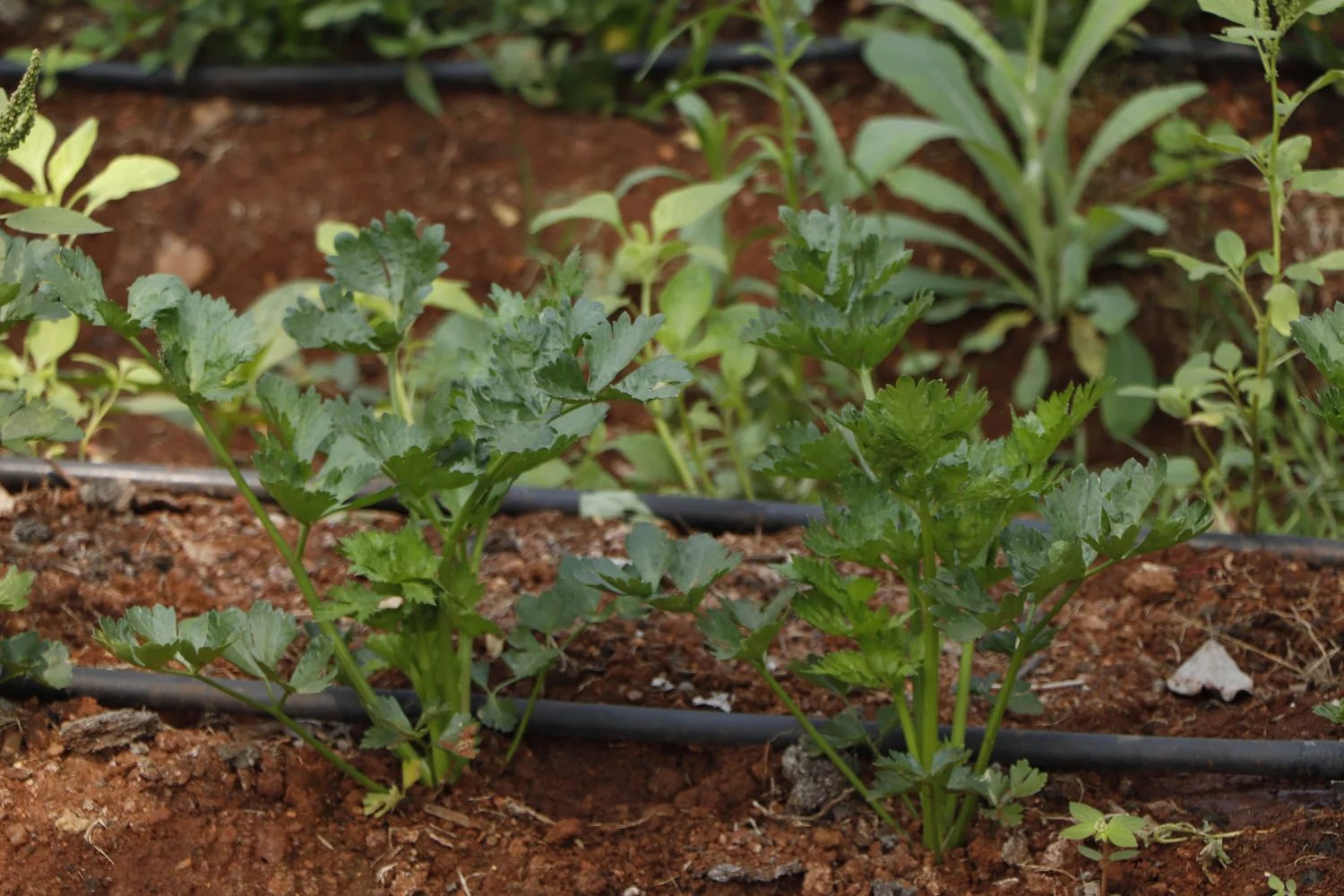
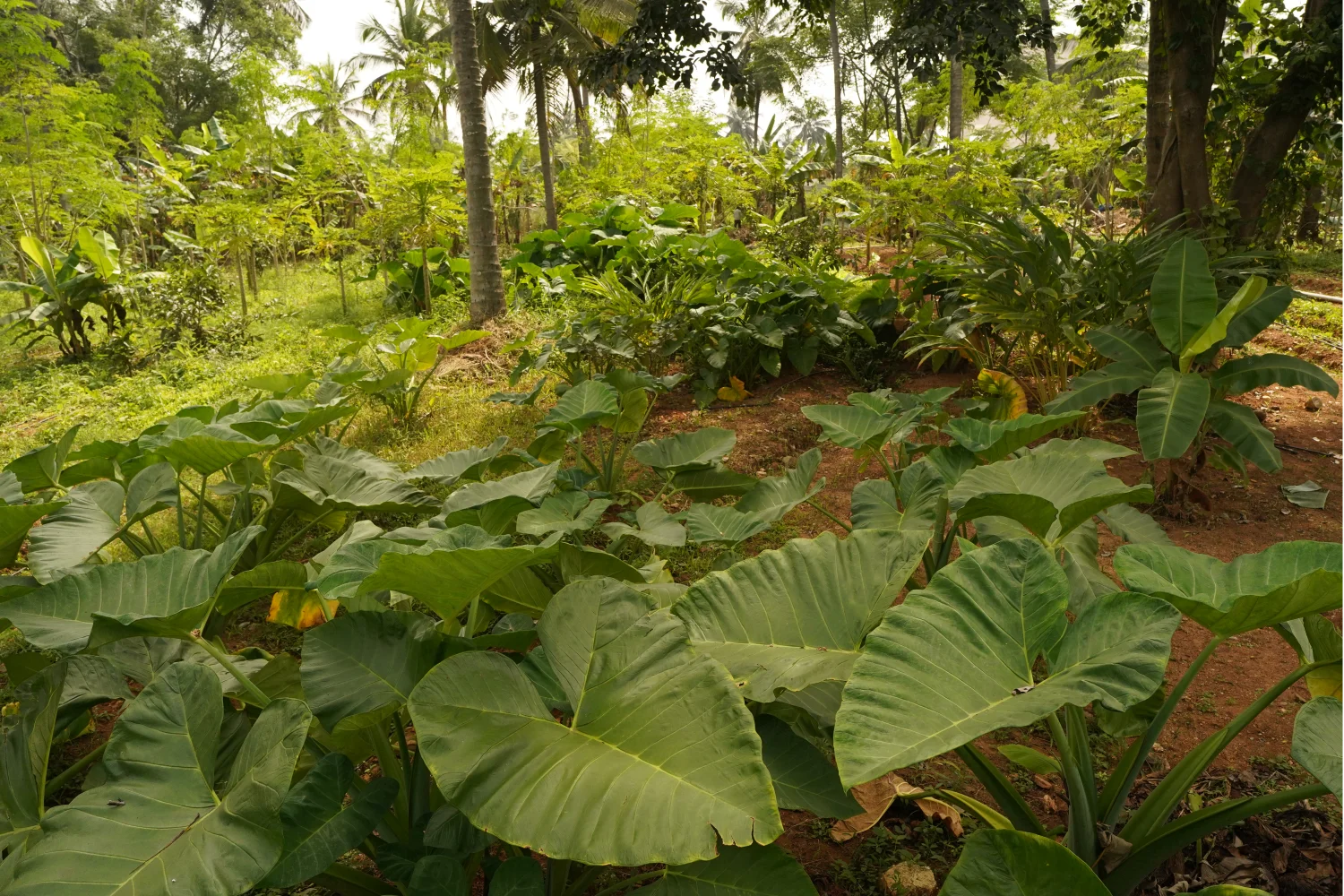

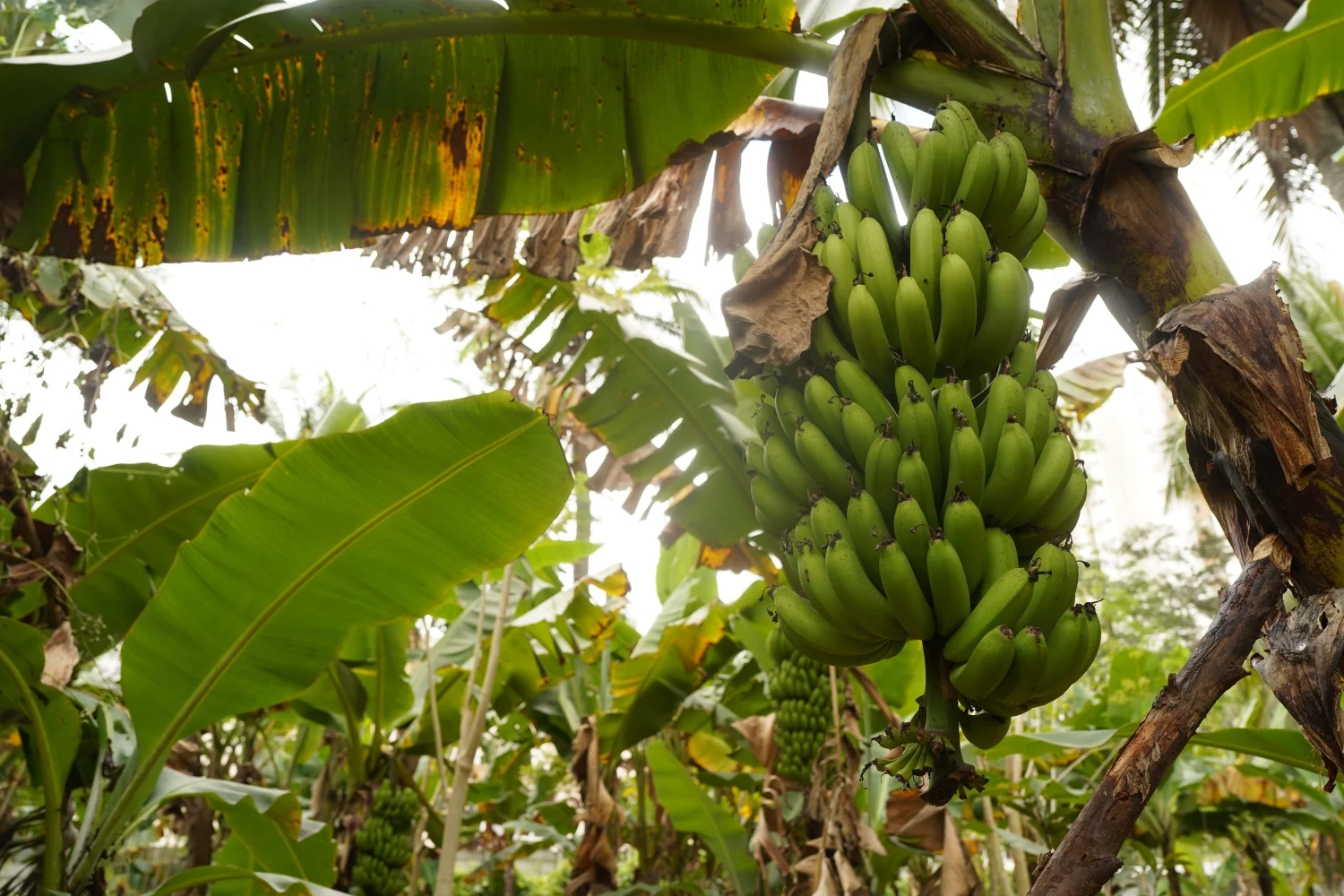
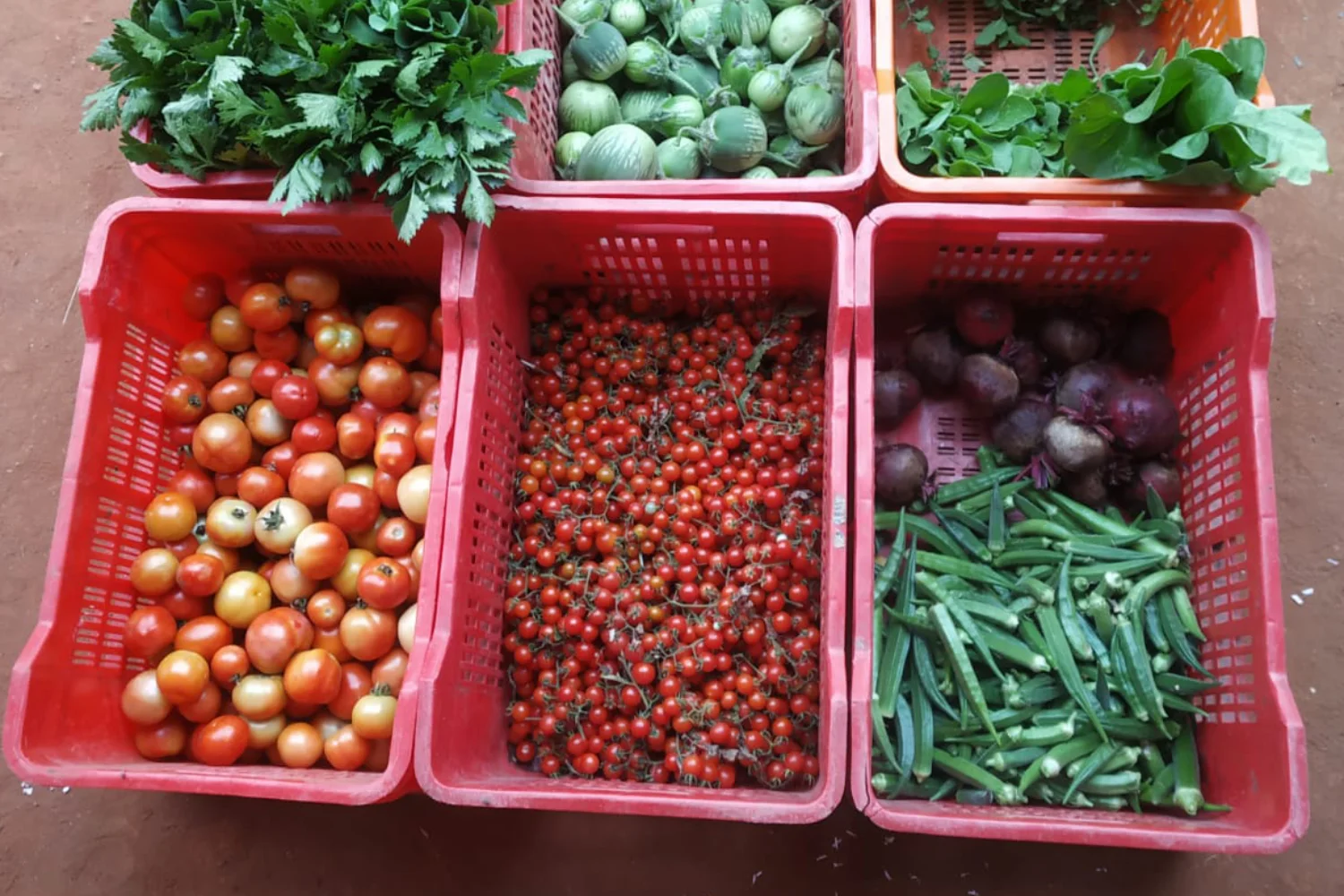
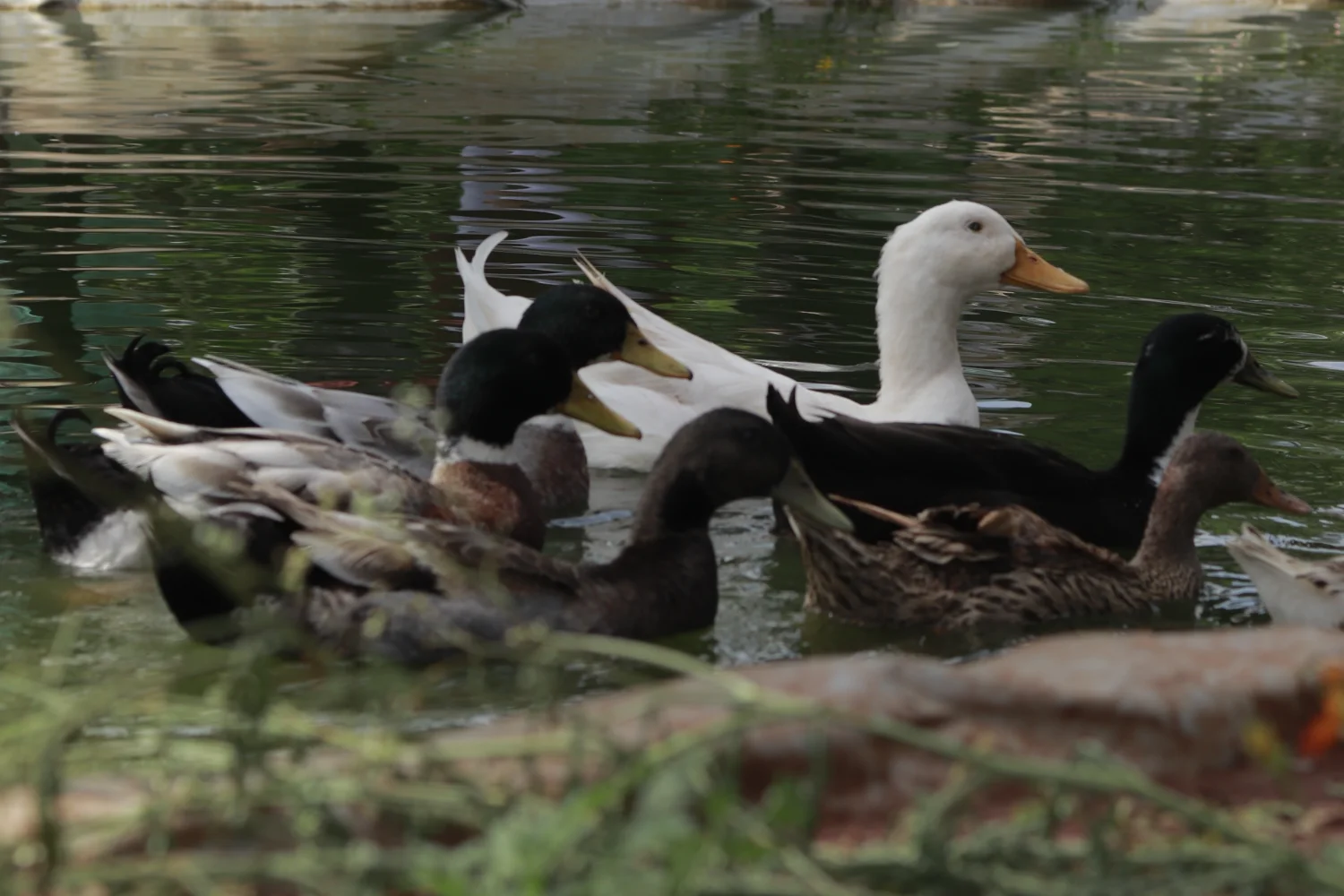
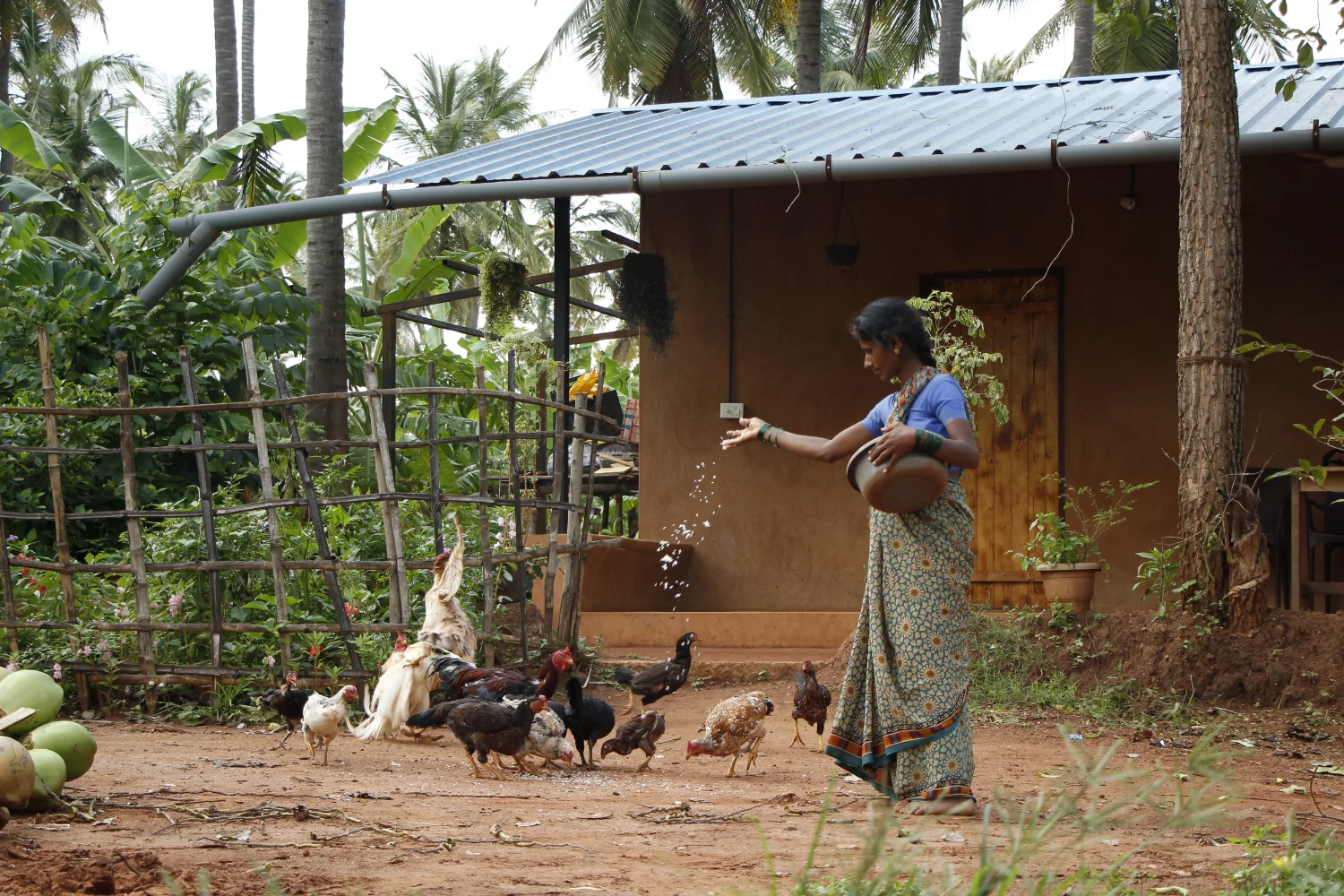
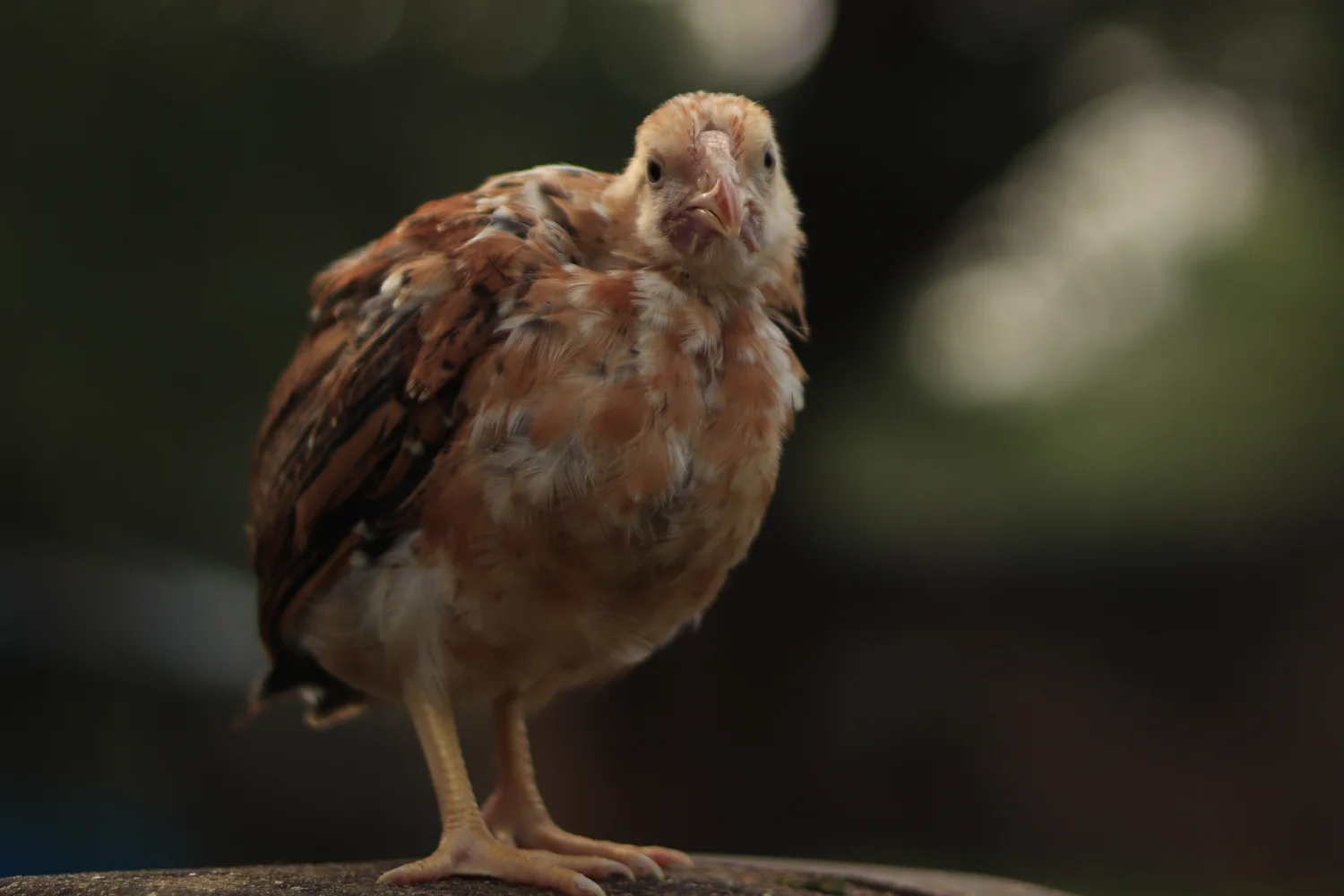
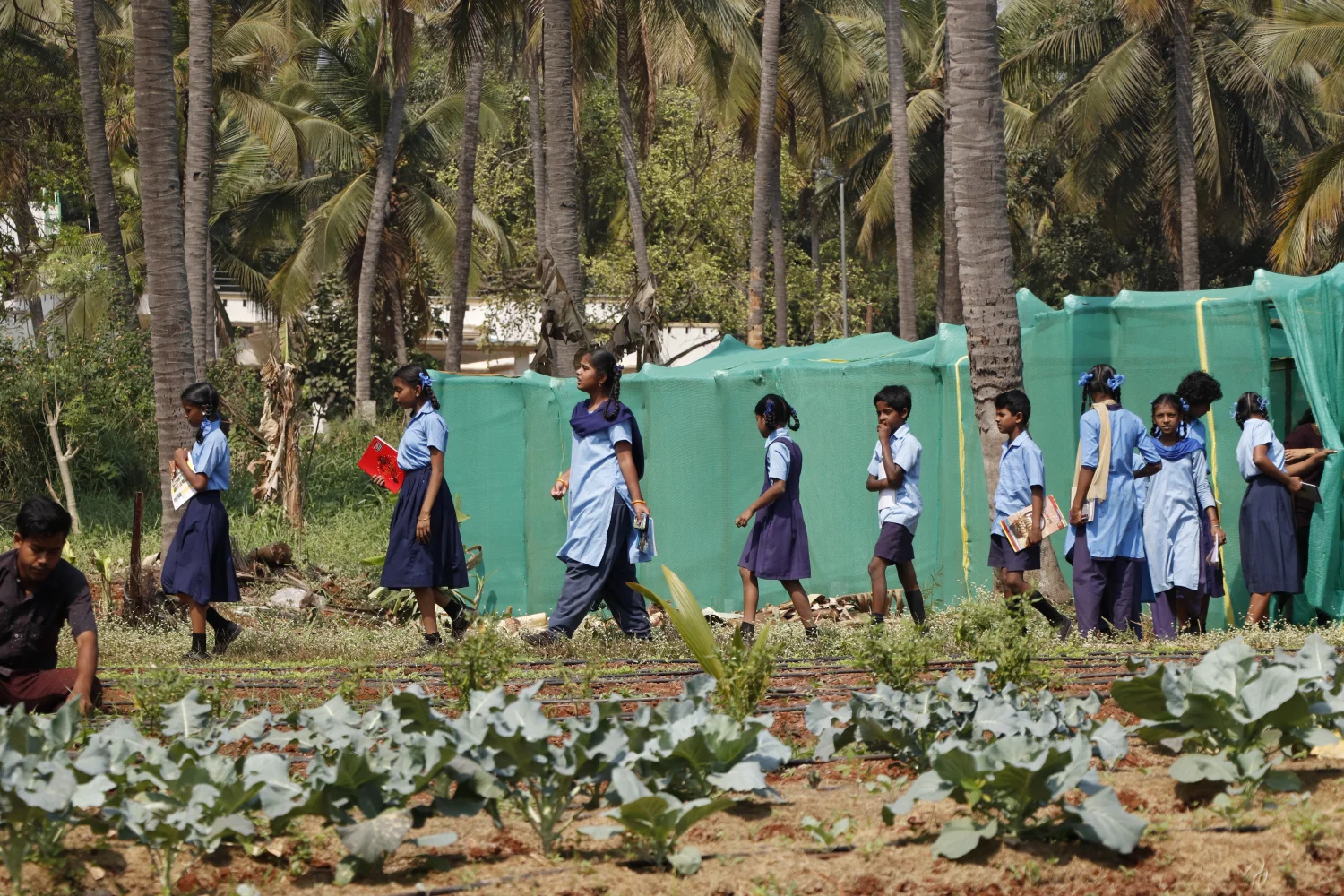
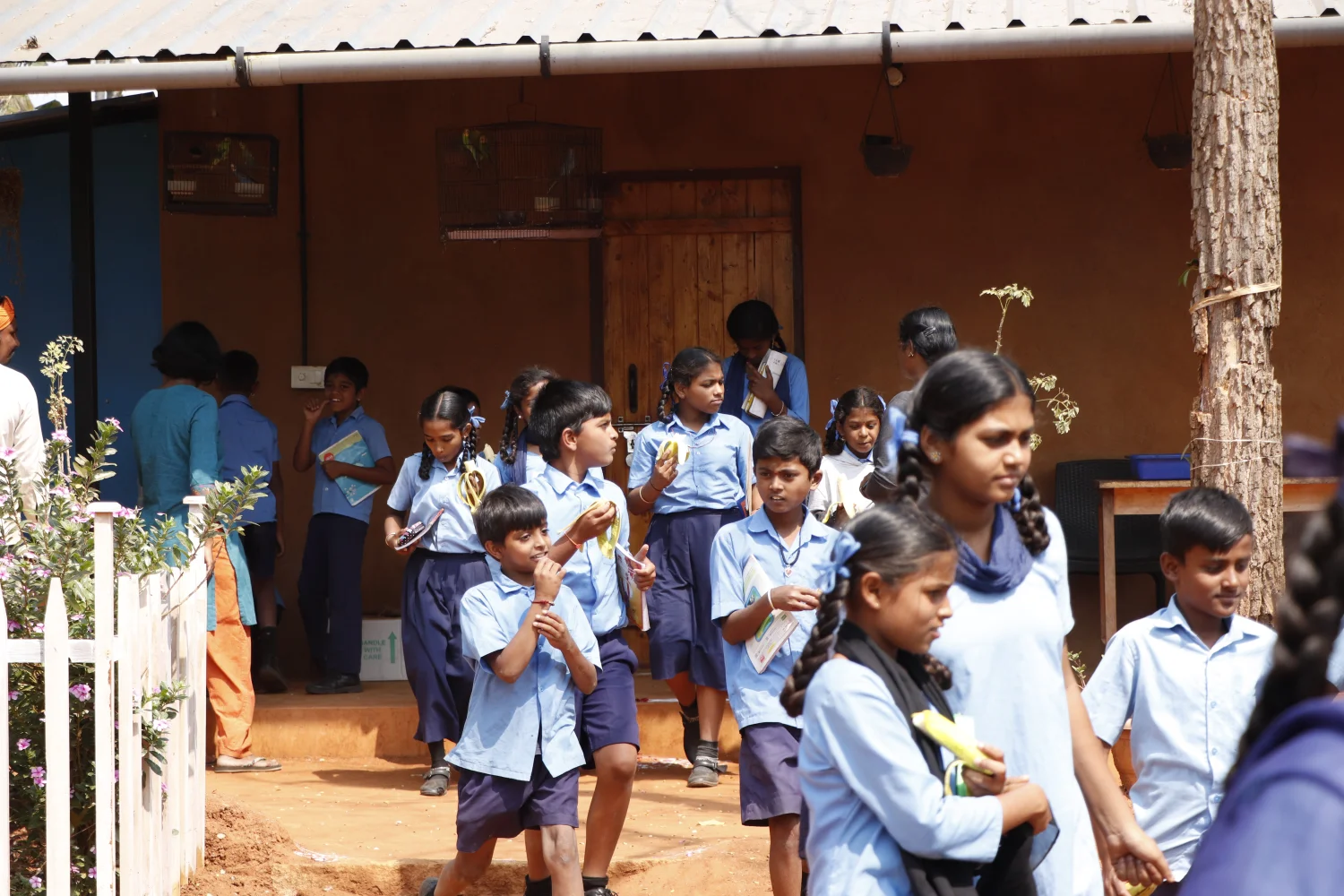
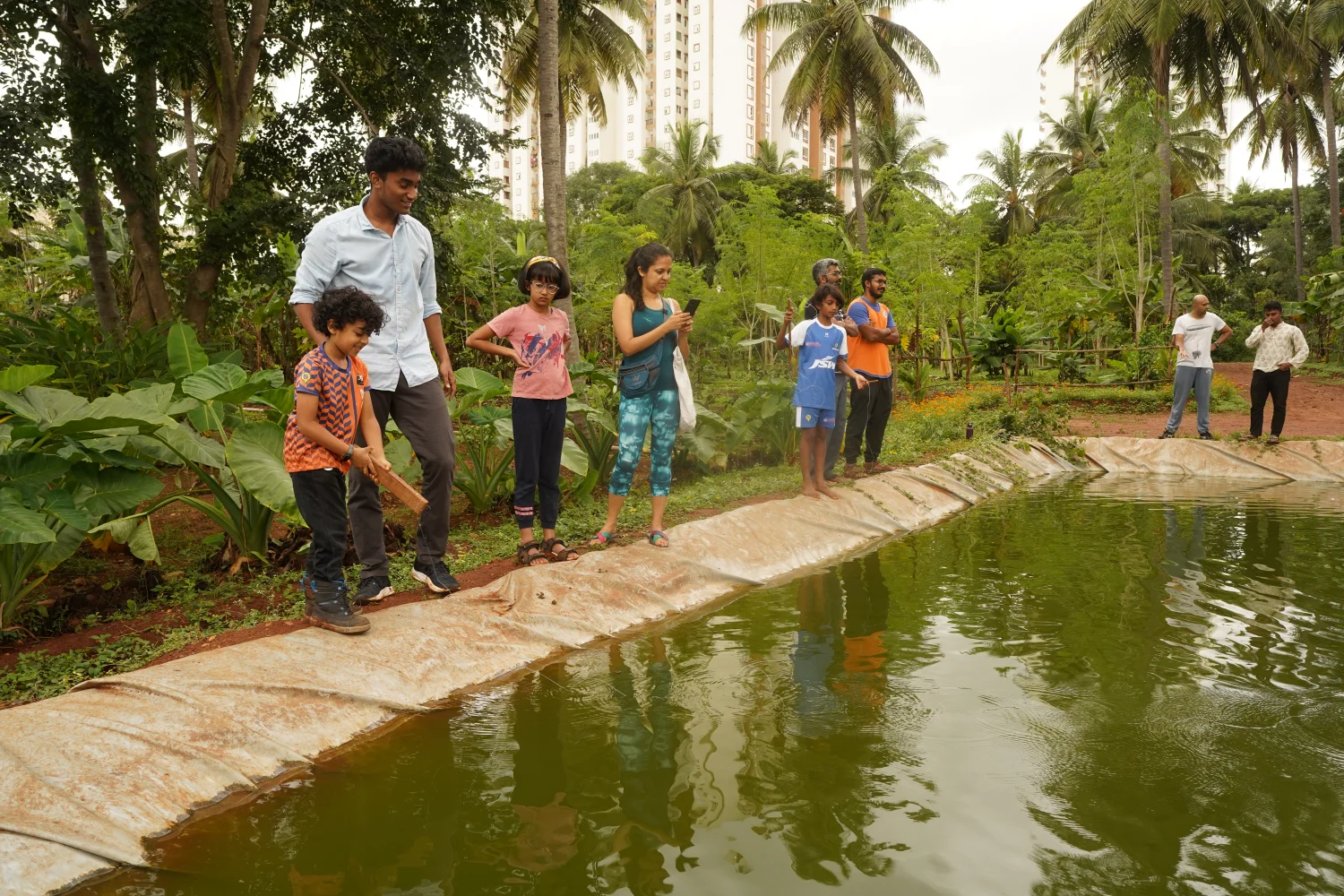
Previous image
Next image
Hunnigere
Hunnigere Farm (Karnataka)
Farm area : 04 acres
Hunnigere farm in Bangalore rural, nearer to the city, was a vegetable patch before. Intensive chemical farming had degraded the soil. To transform the soil into a live one, we are using compost enriched with beneficial microbes, and mulching to retain moisture in the soil. With the soil coming alive, we are growing as many as 13 vegetables from tomatoes, brinjal, ginger, to broccoli, chillies on three acres. On less than an acre we are engaged in seed production. While papaya and banana are grown in the border, Agase is grown for biomass.
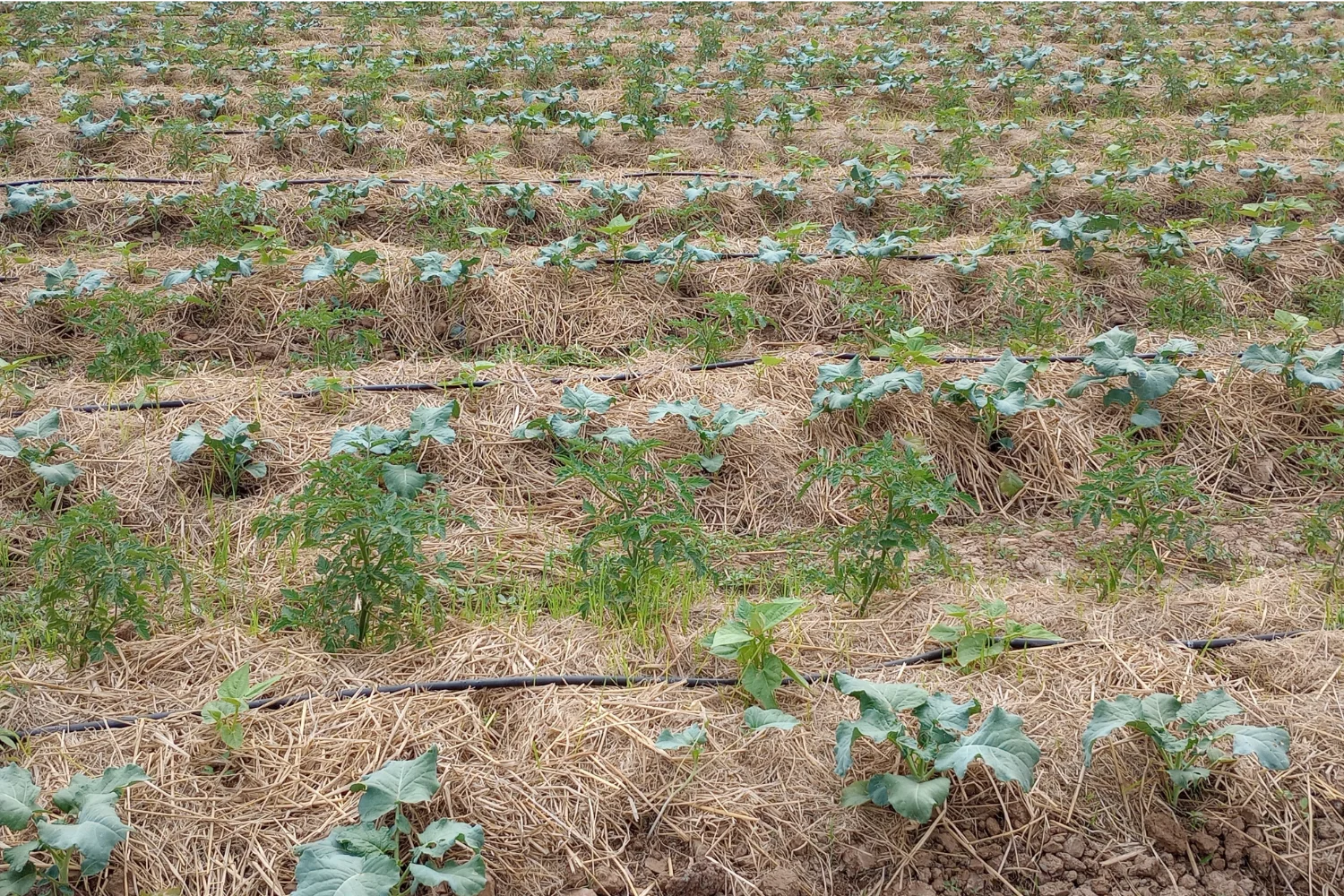
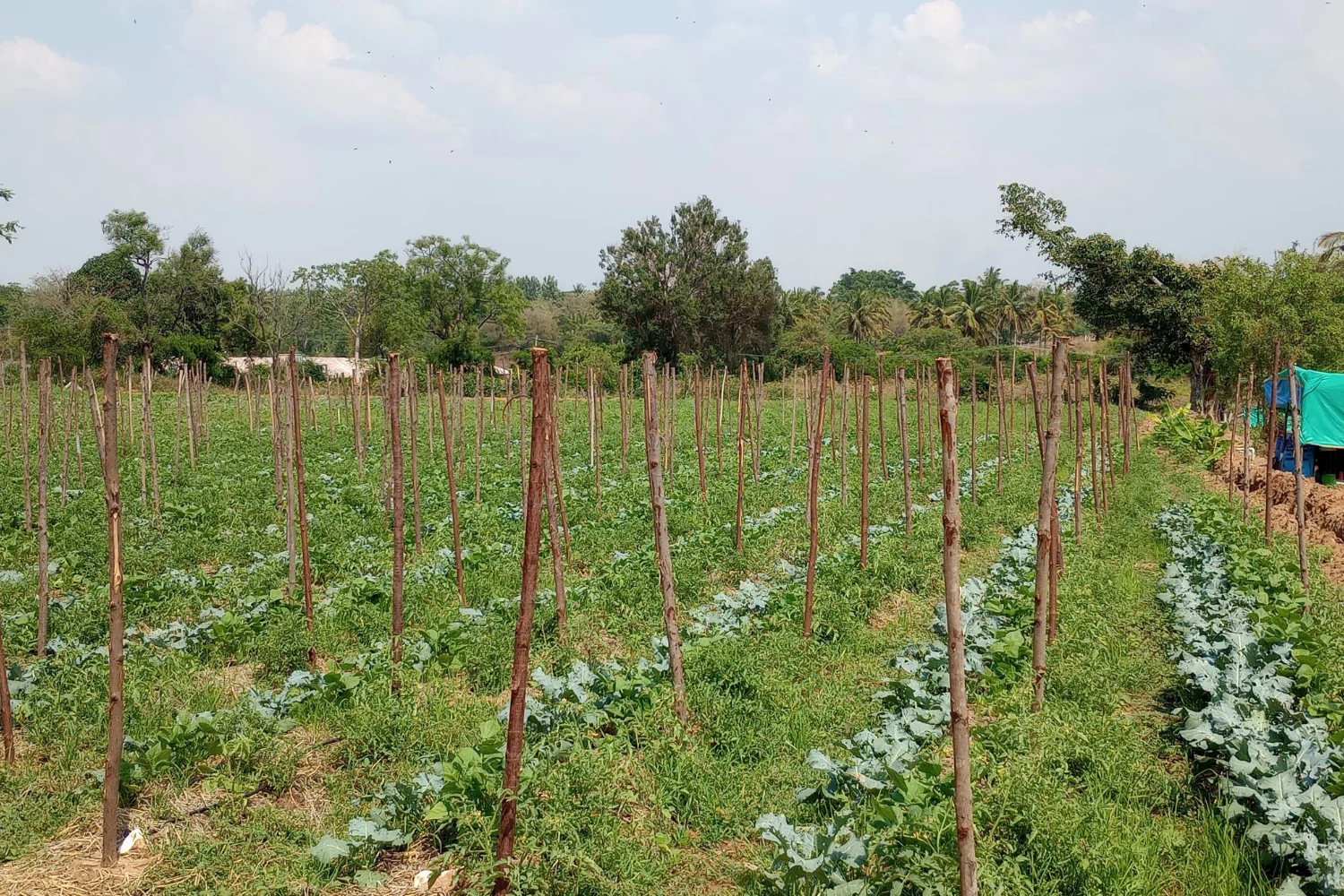
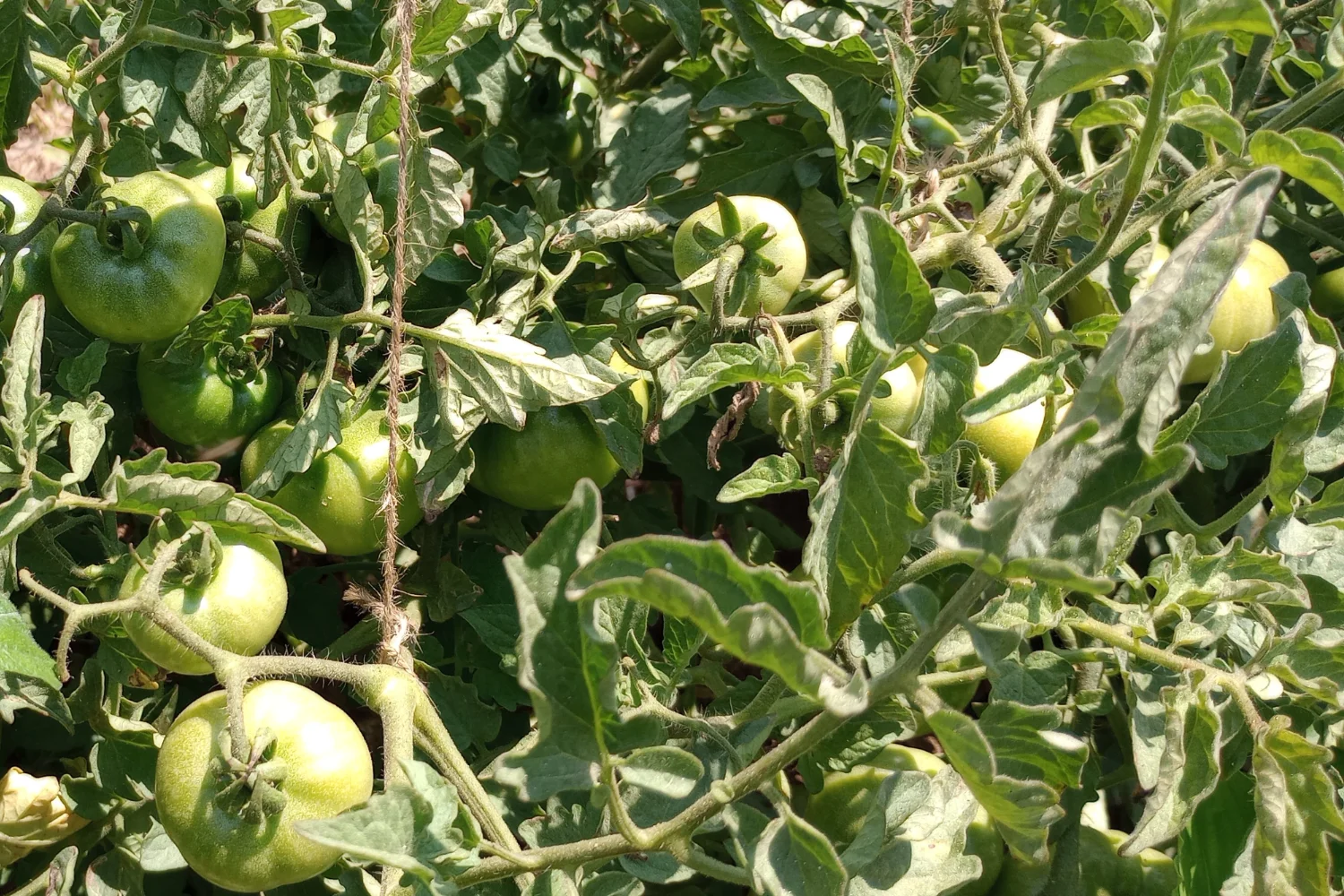
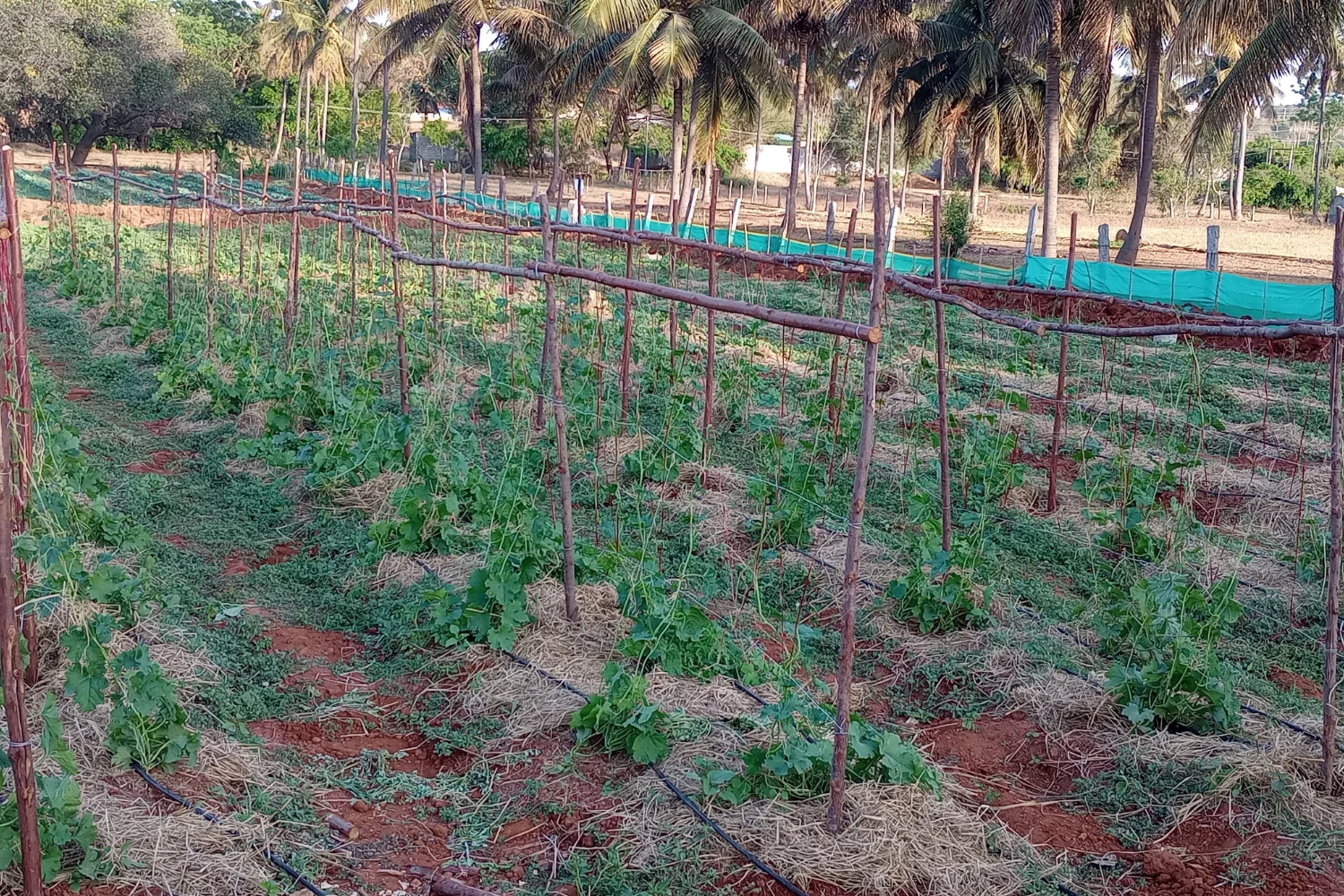
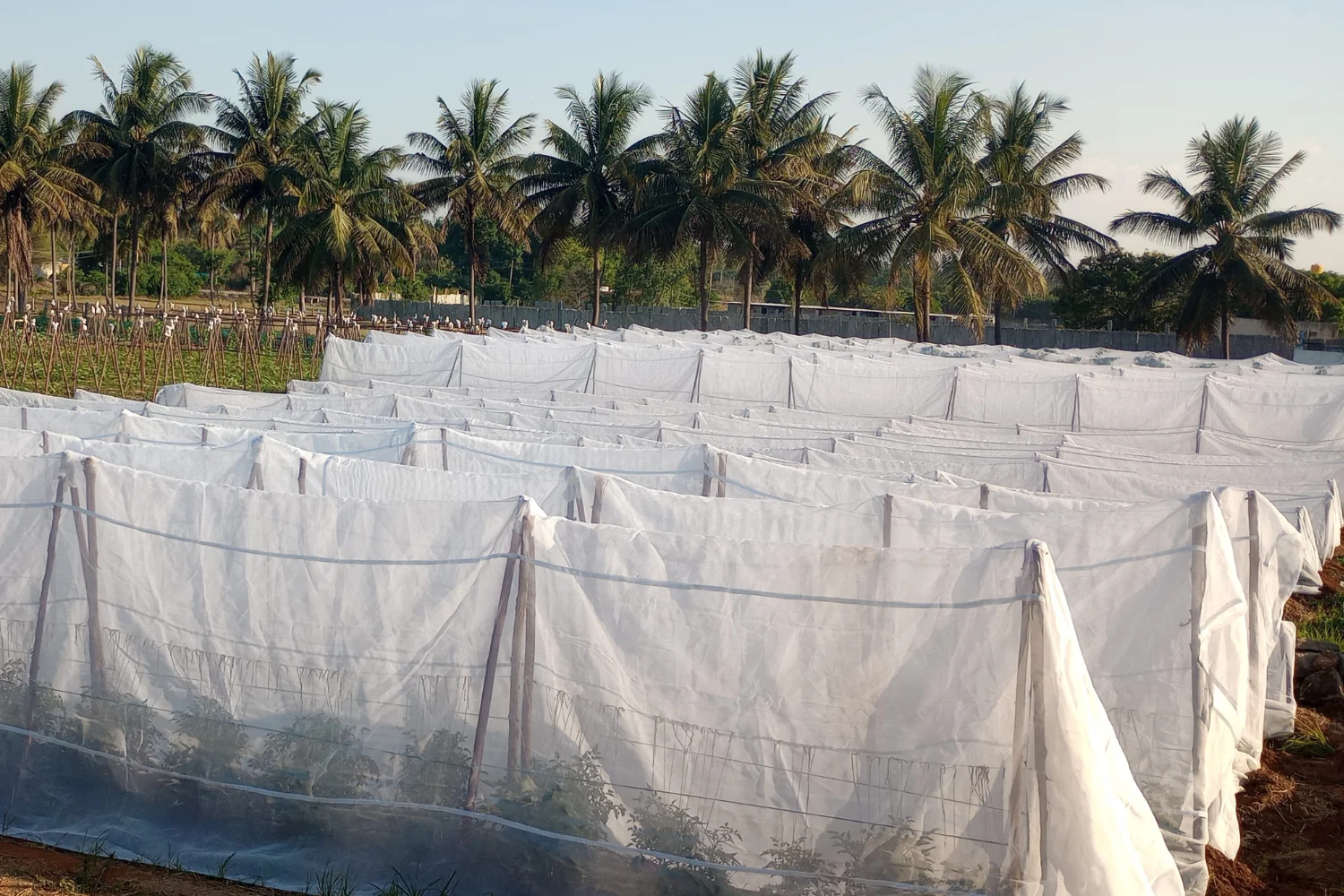
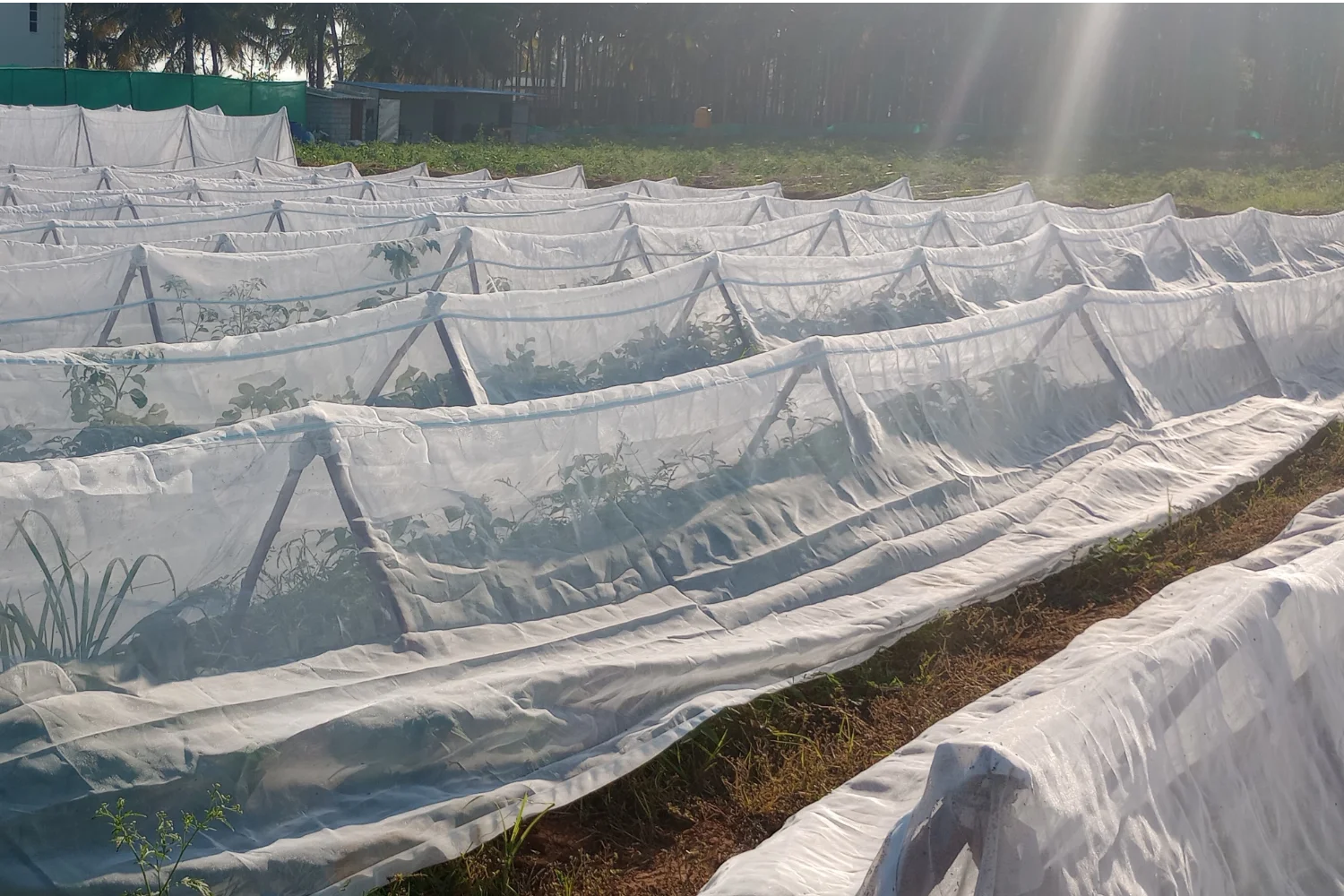
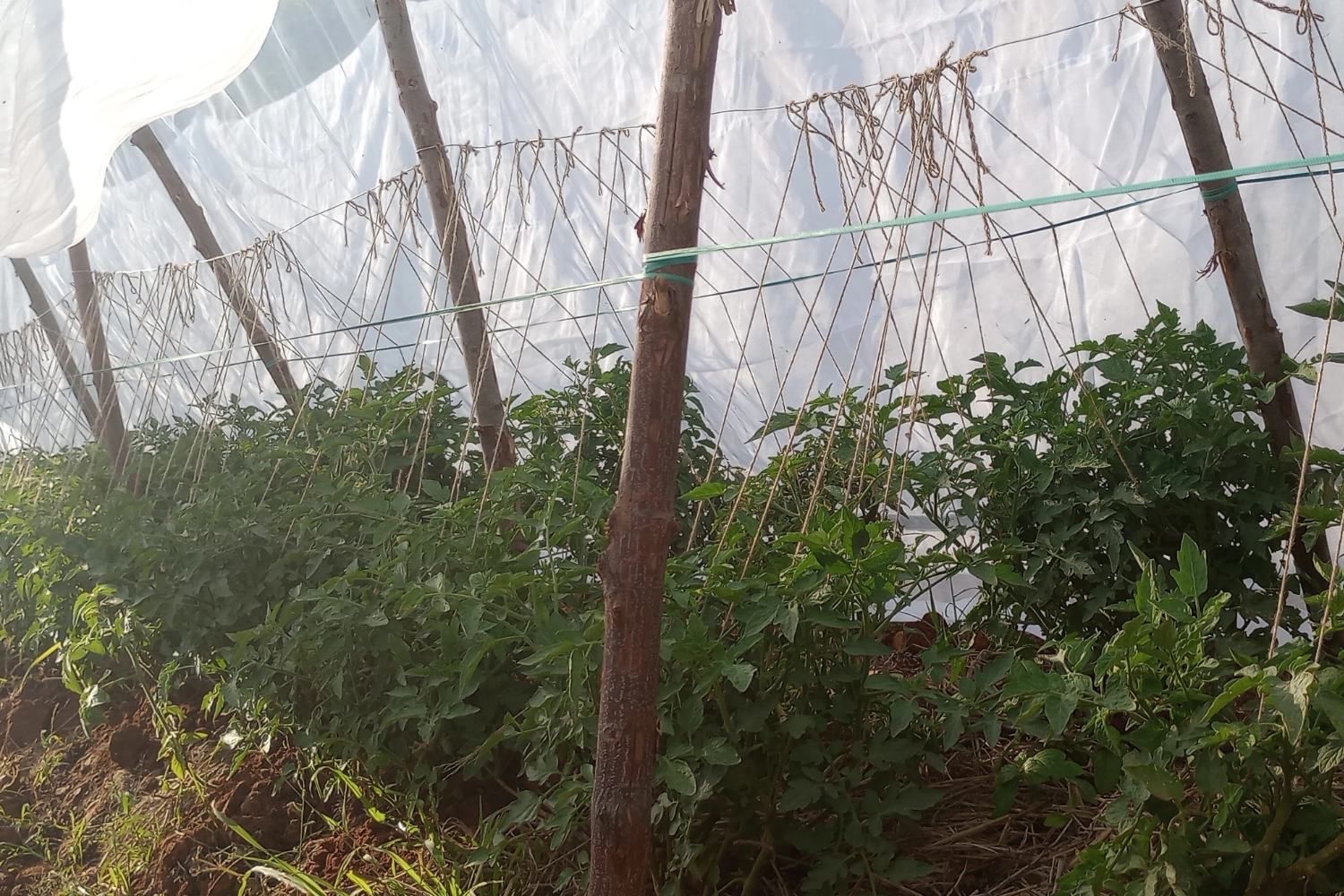
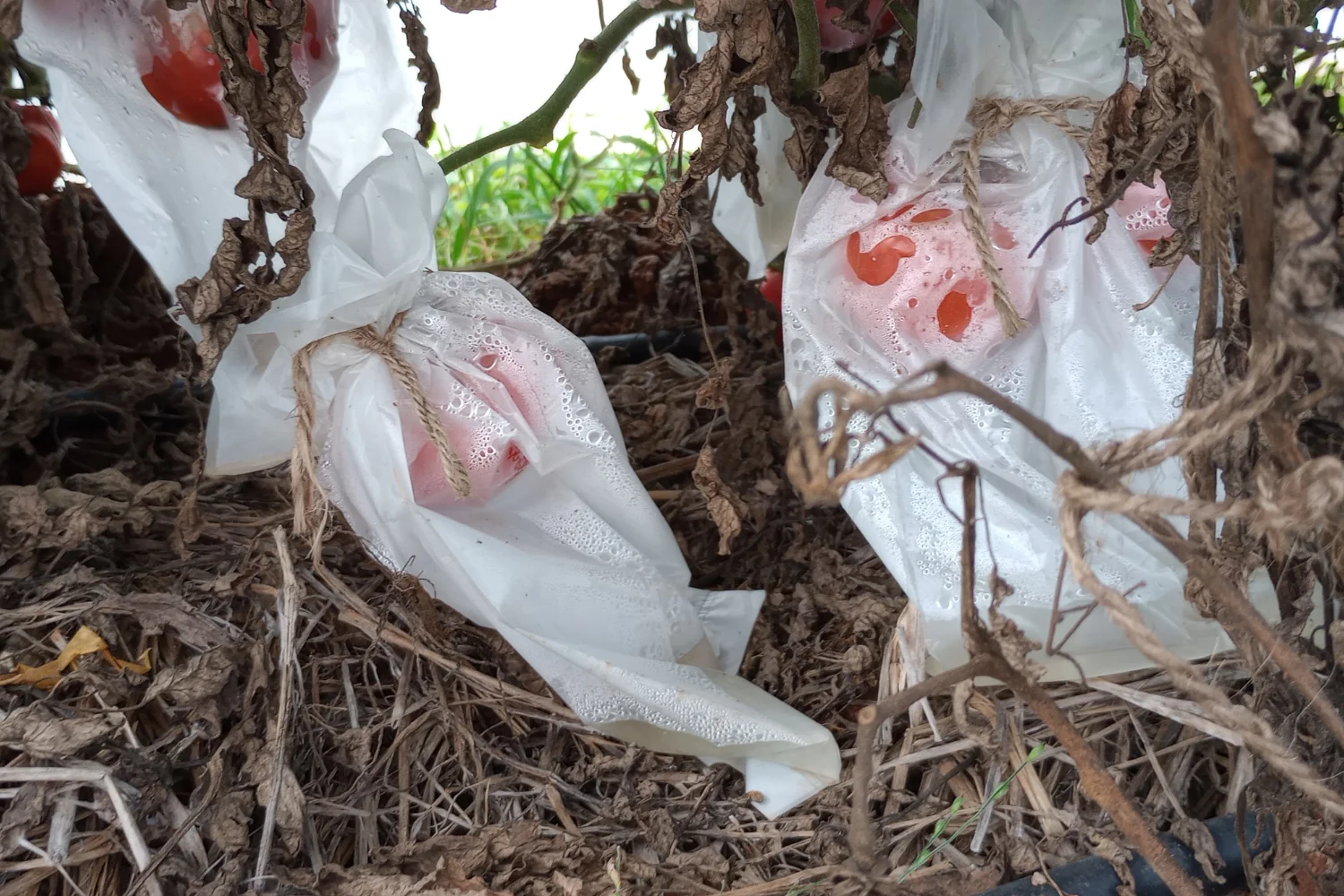
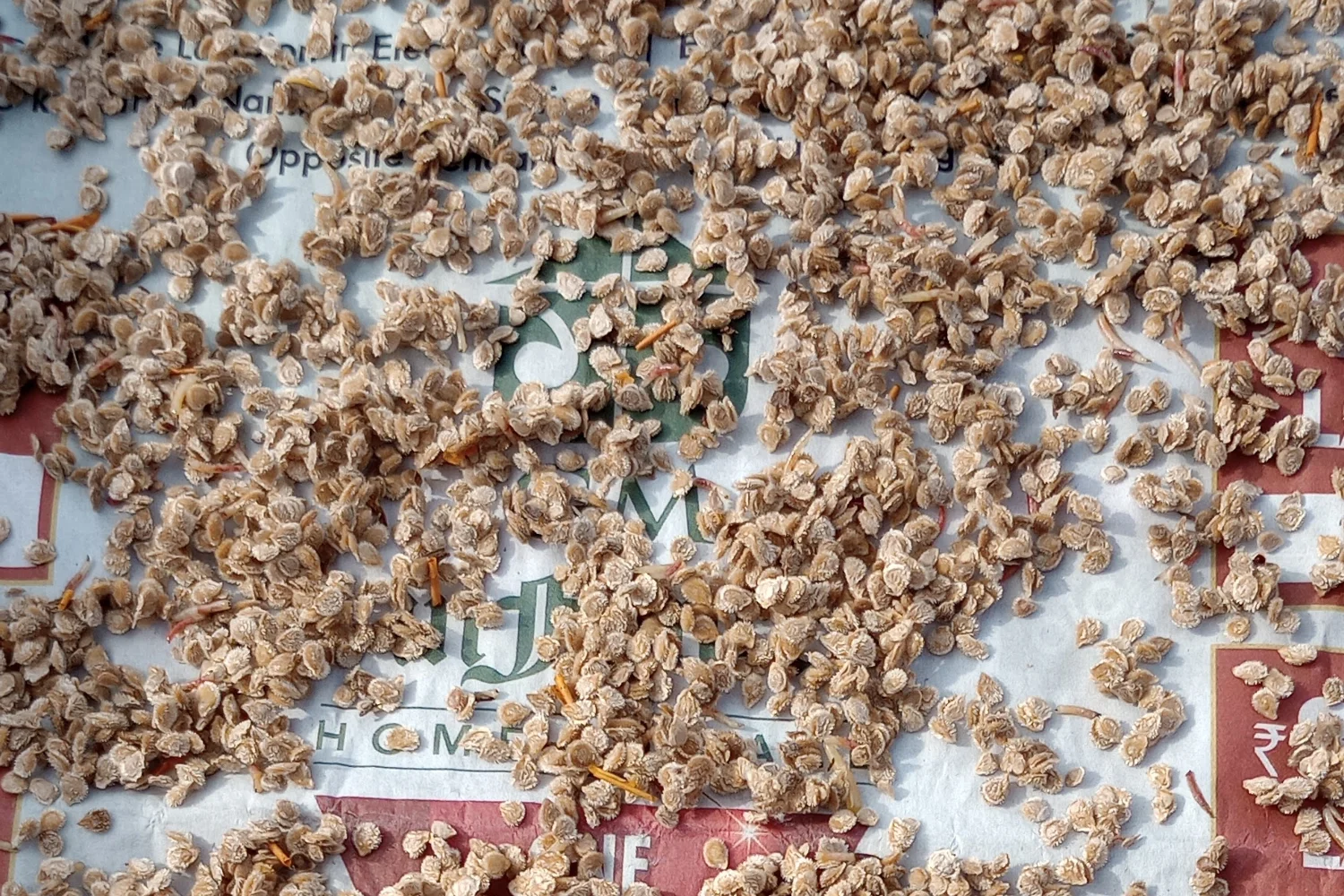
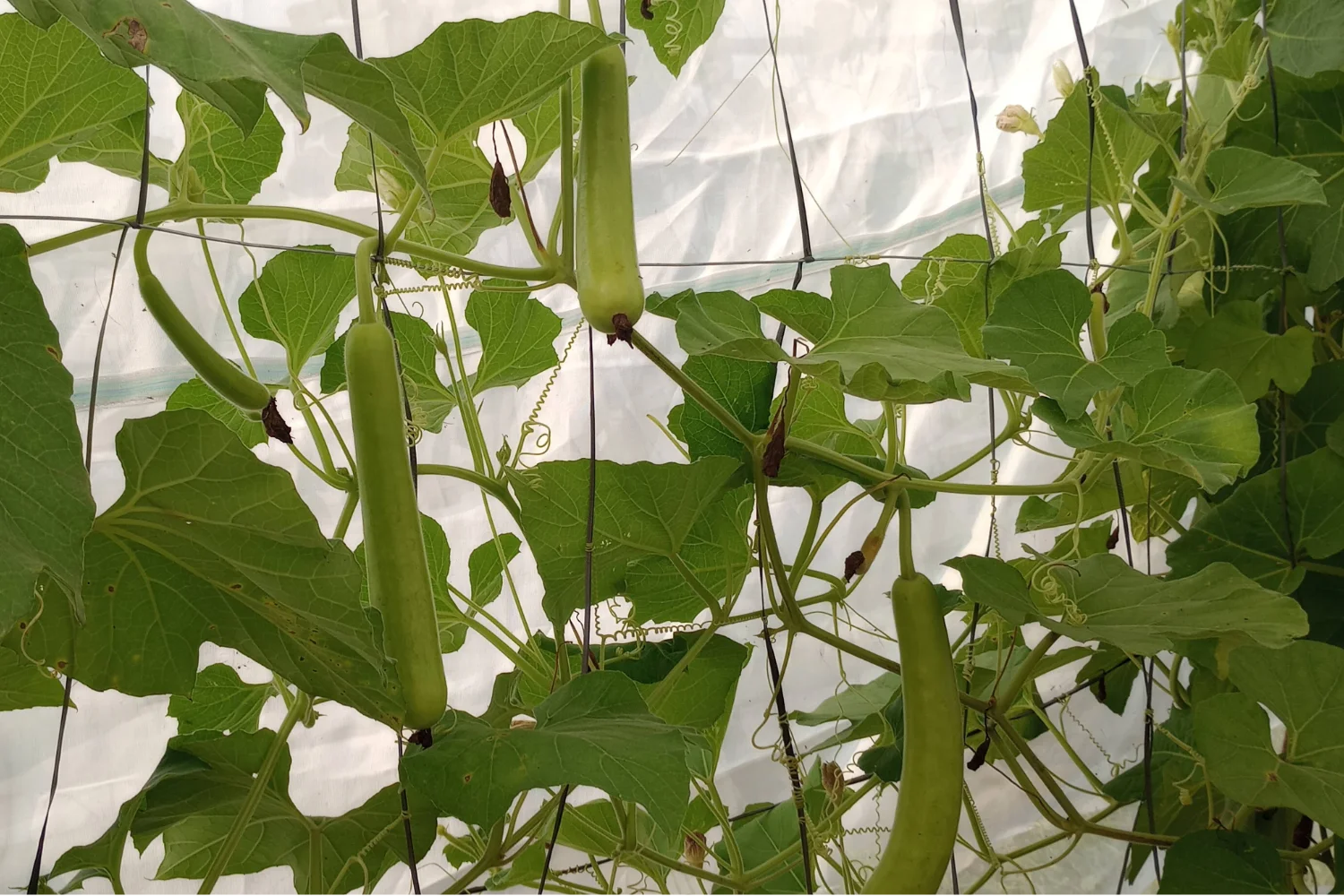
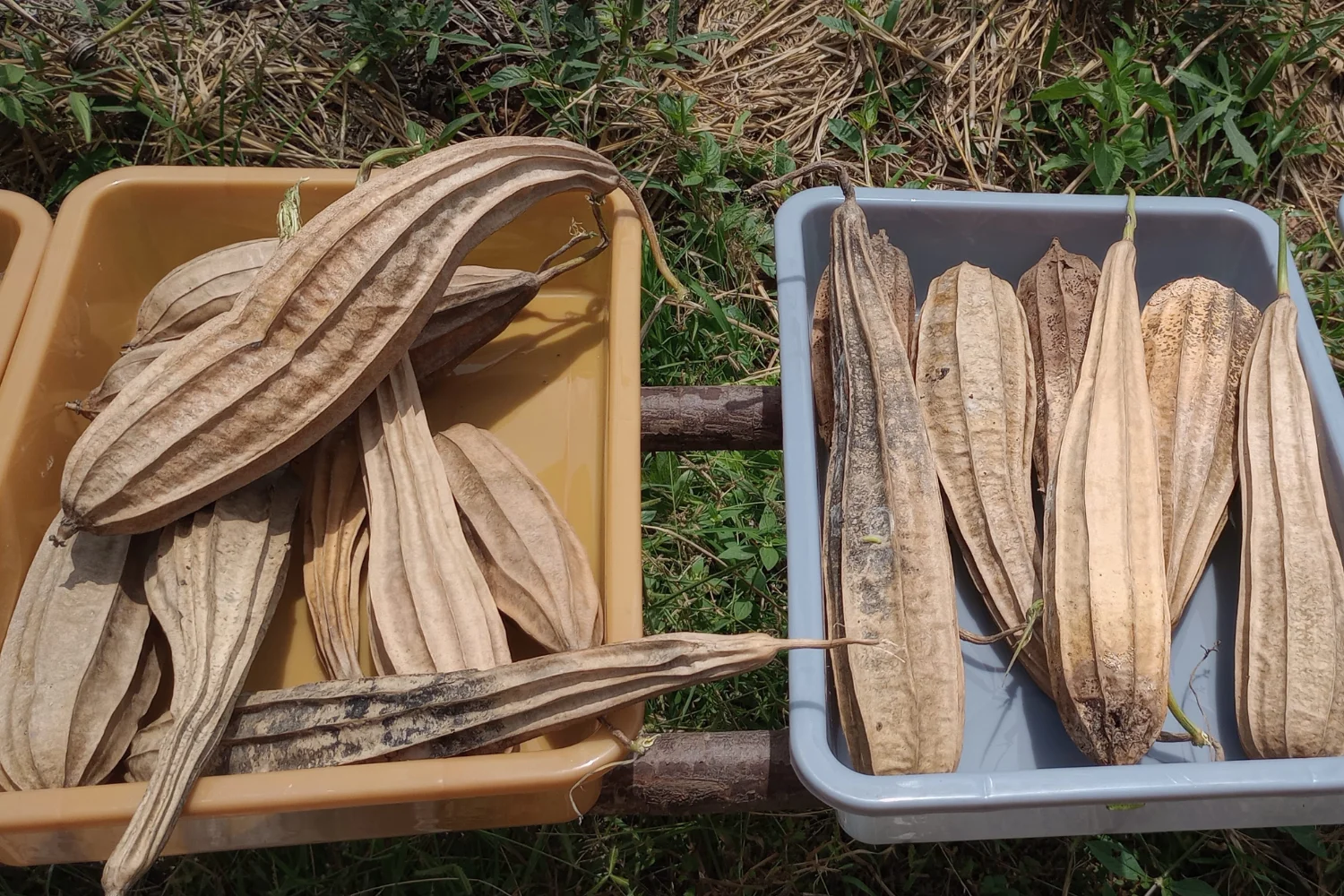
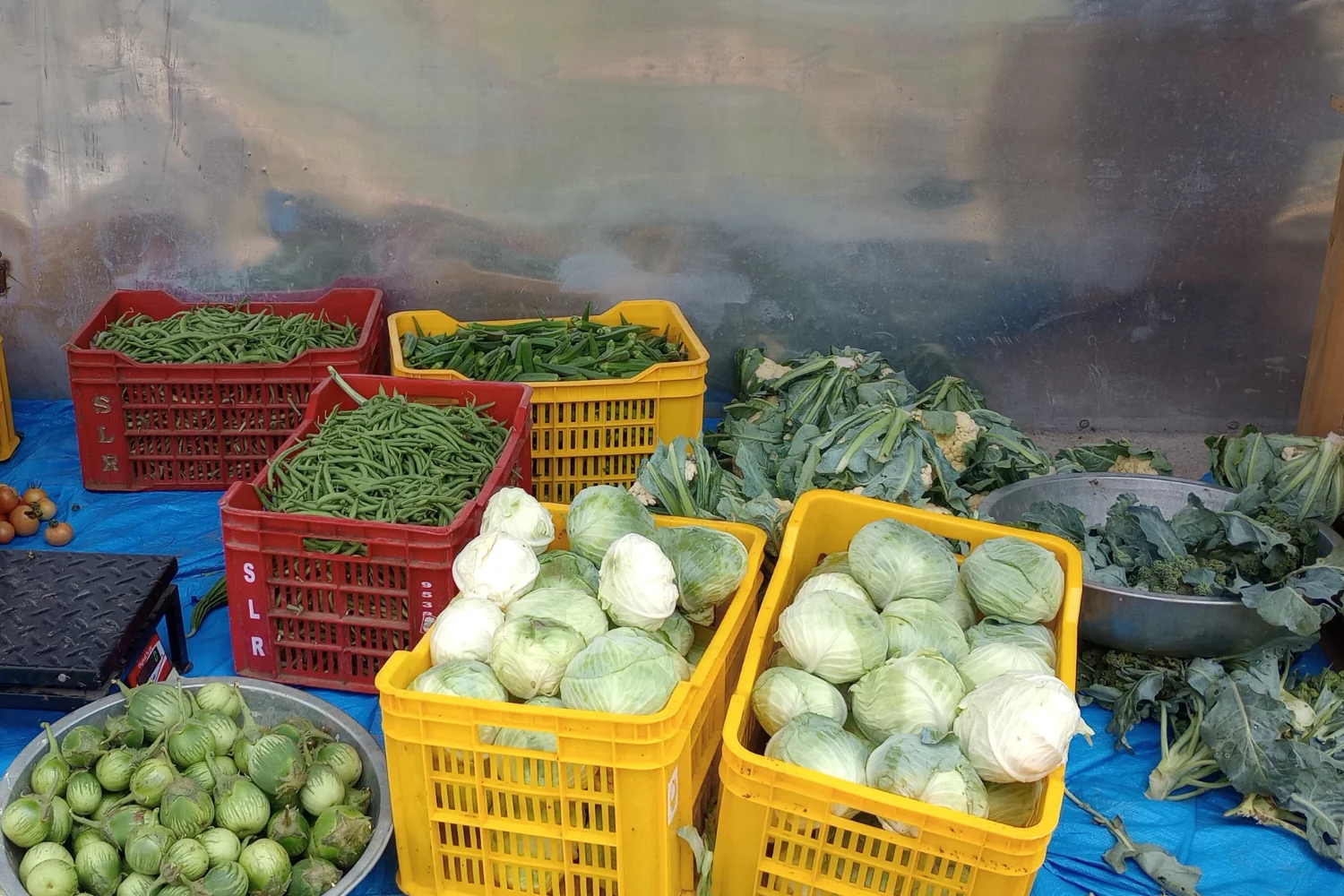
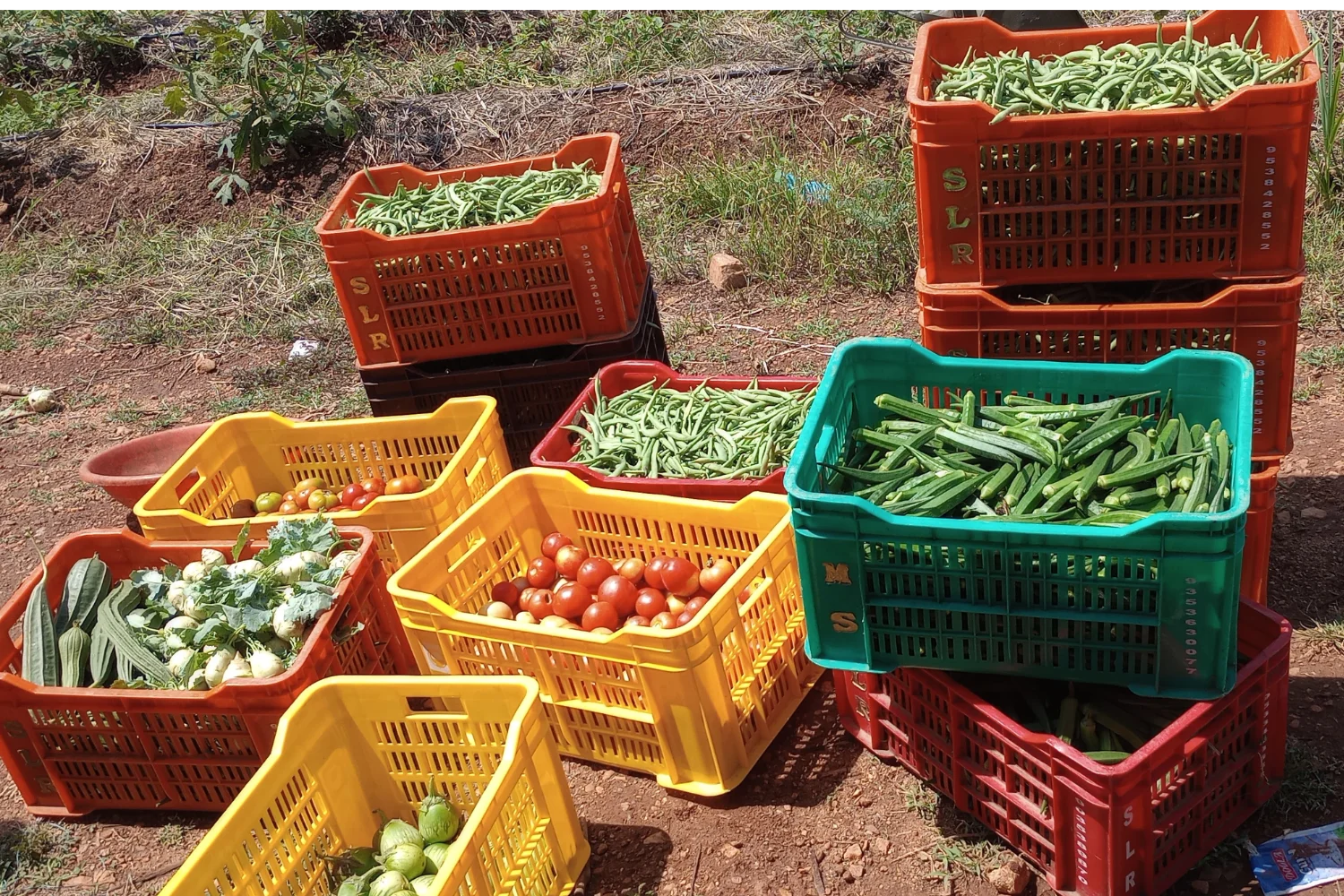

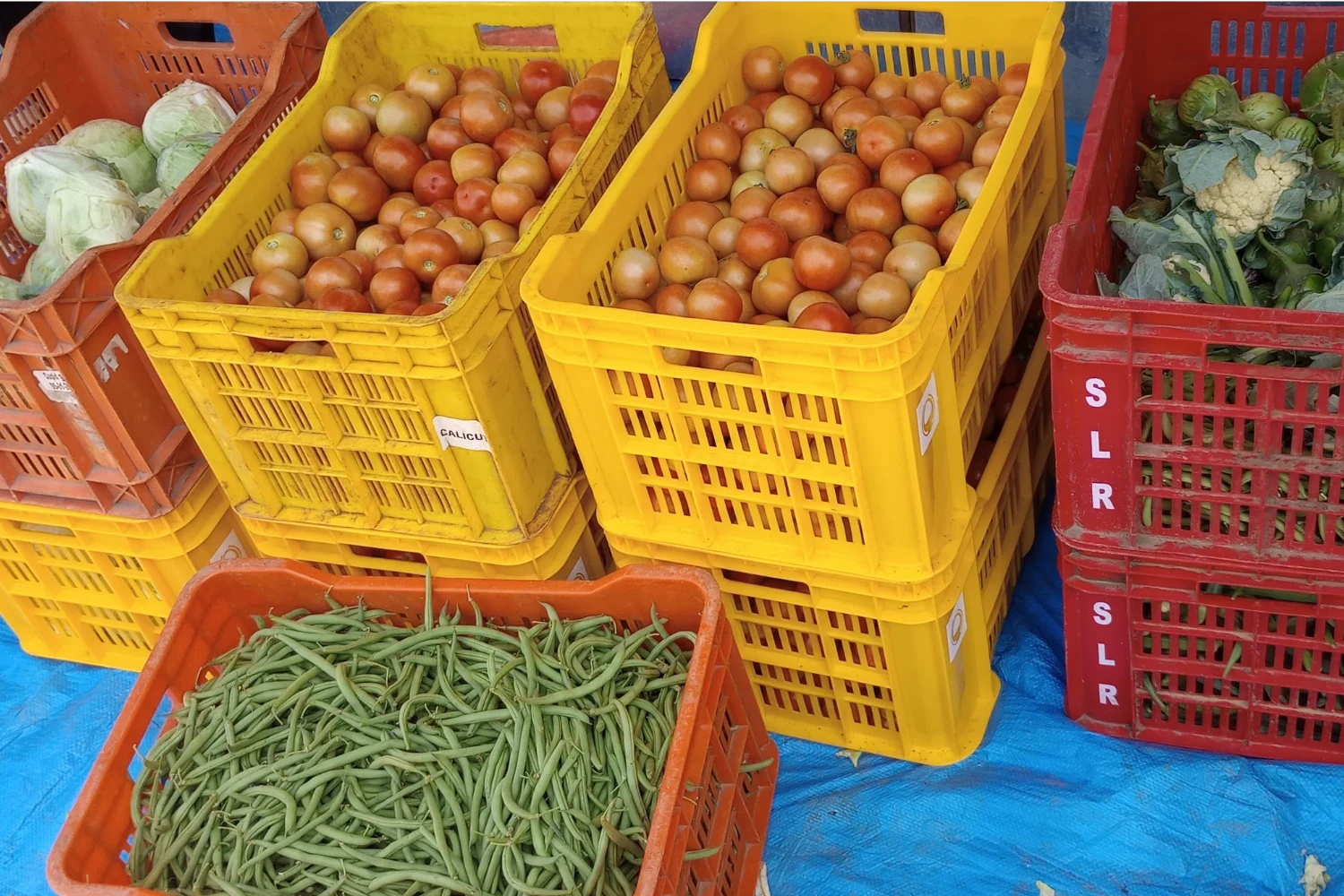
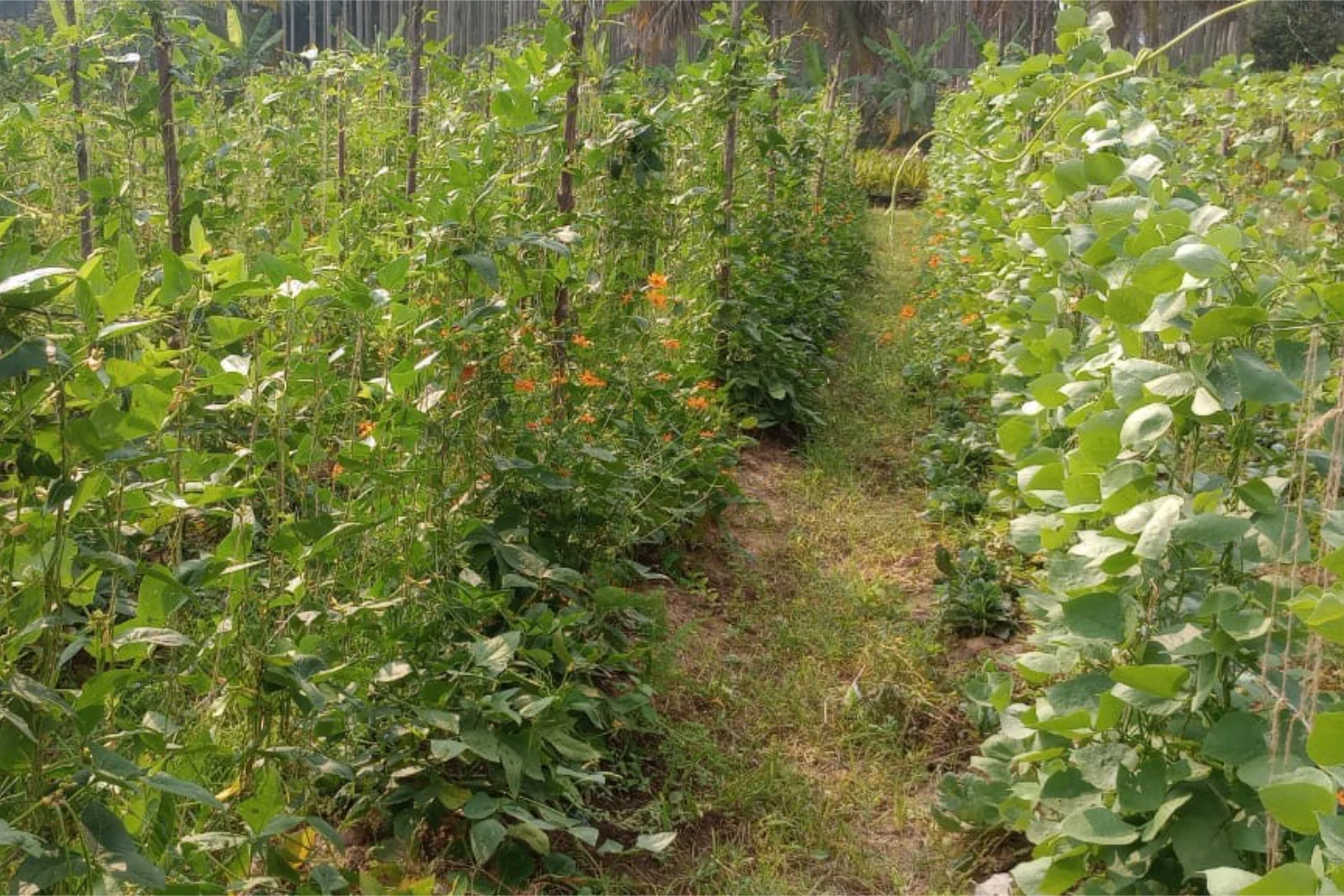
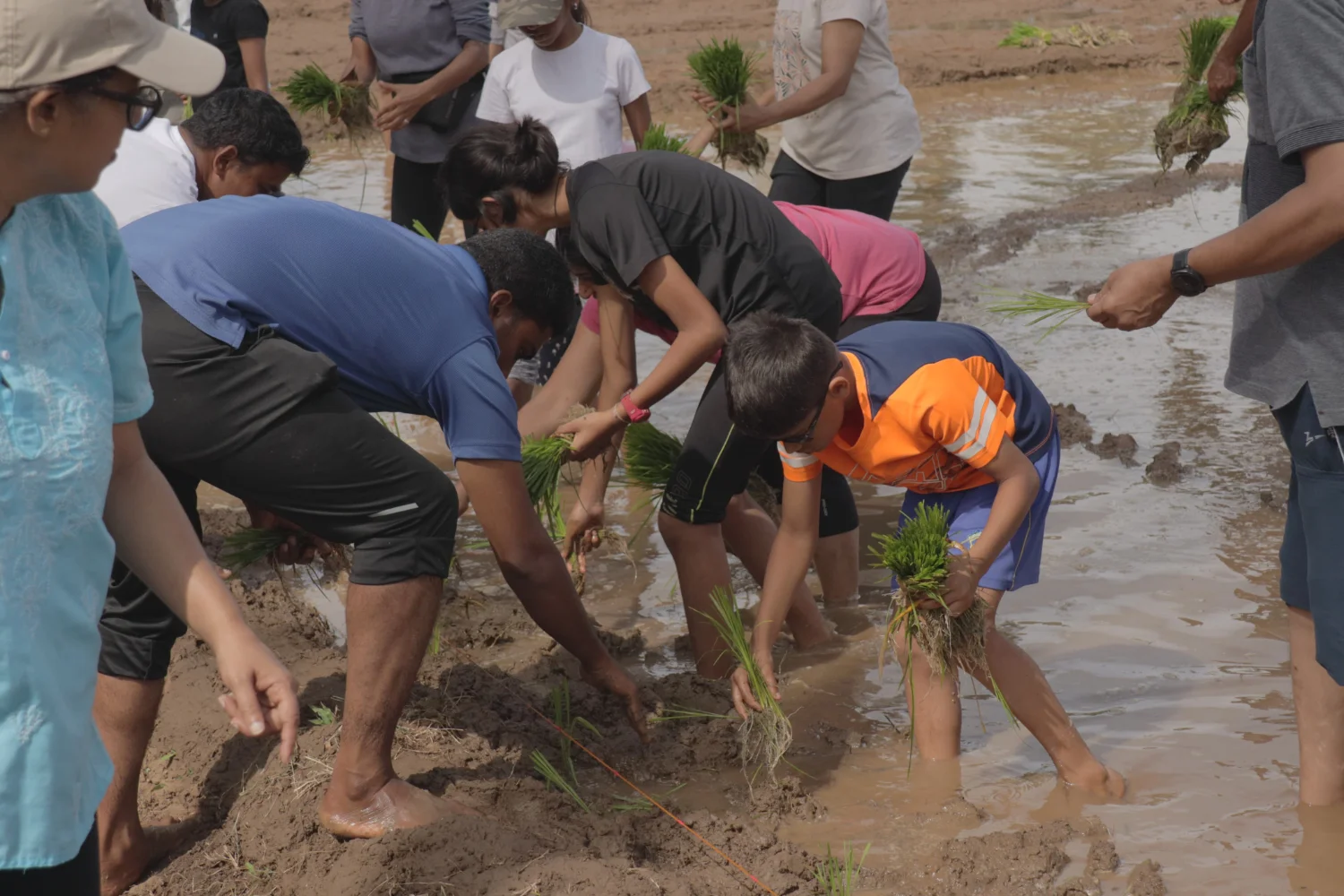
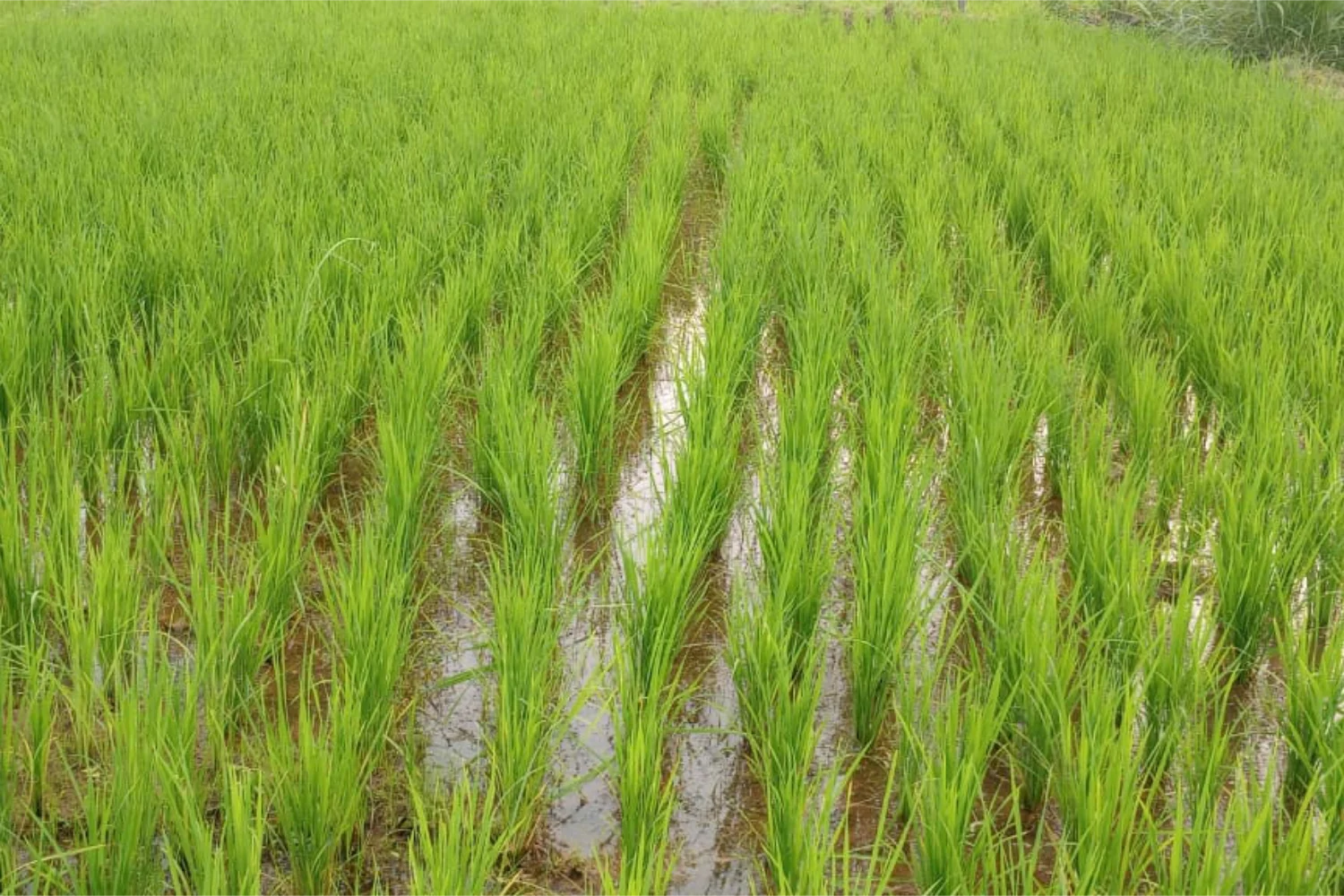
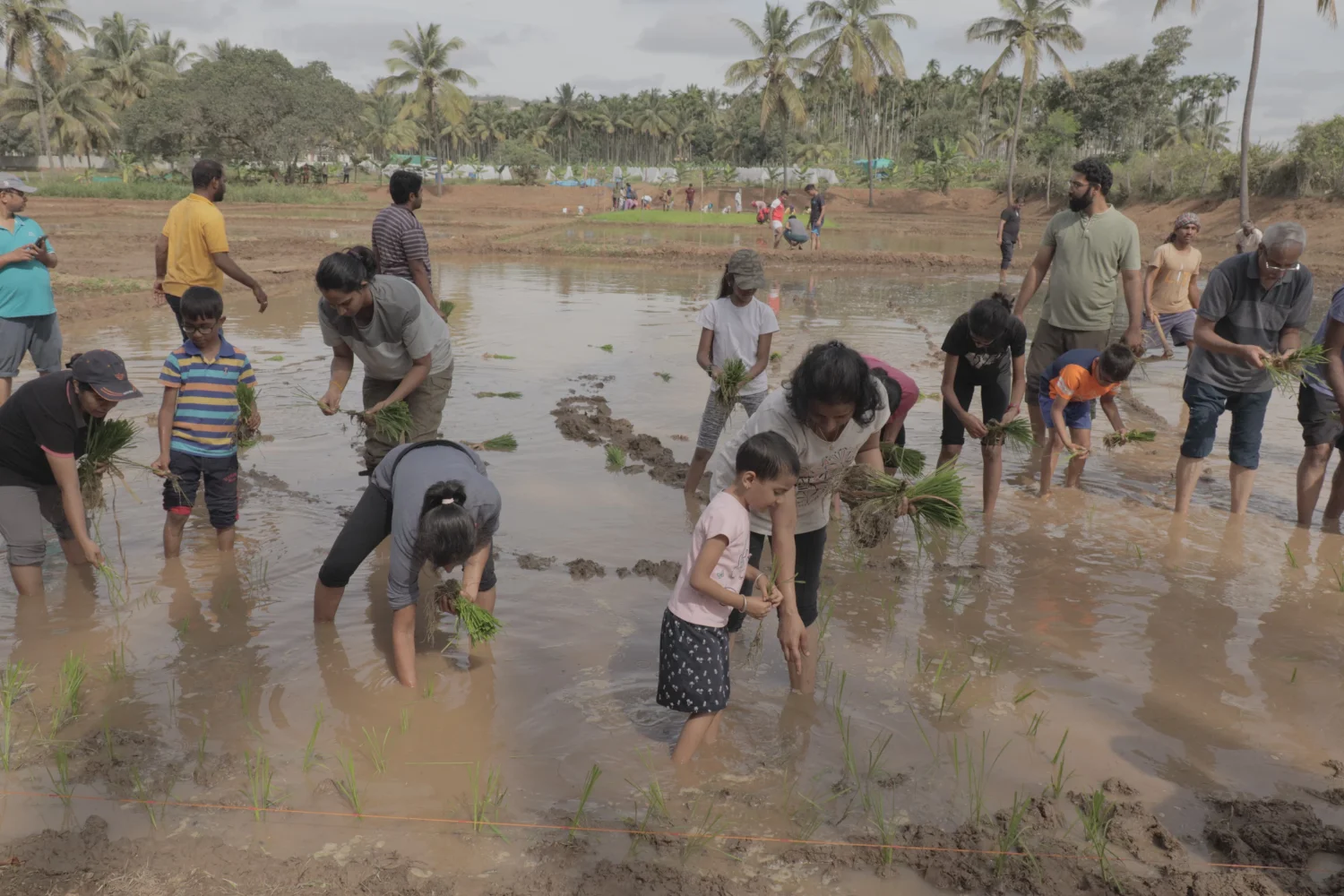
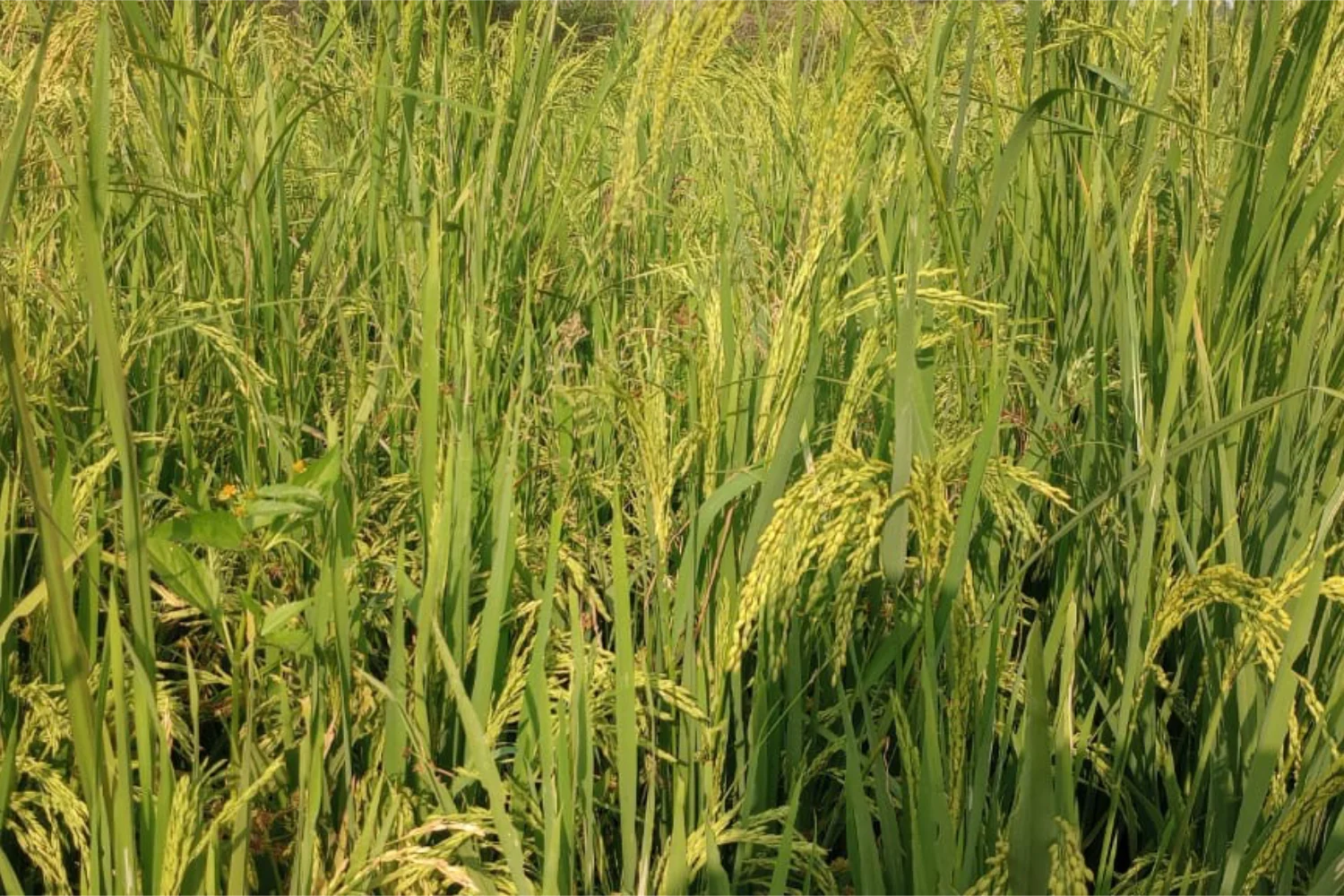
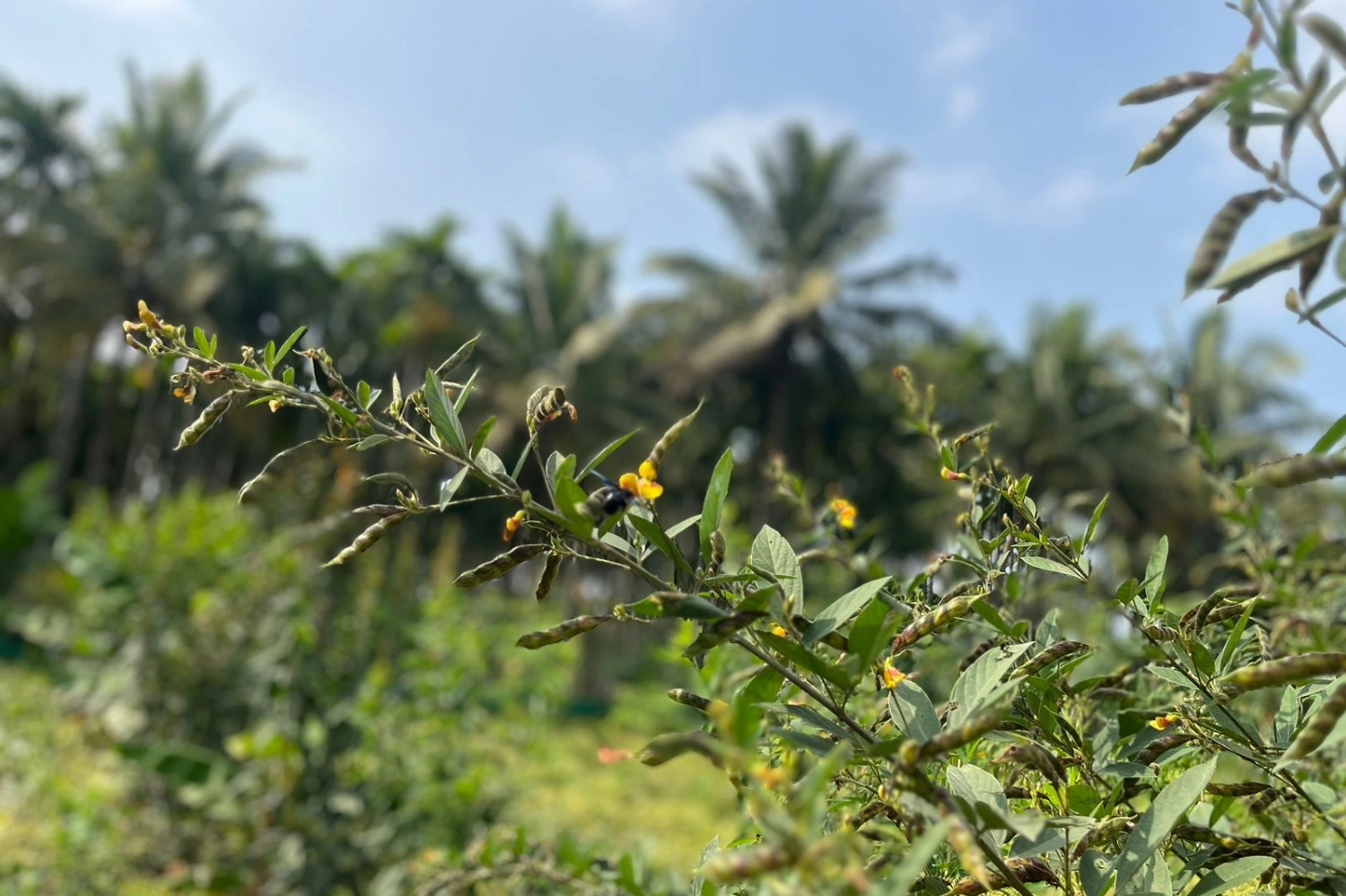
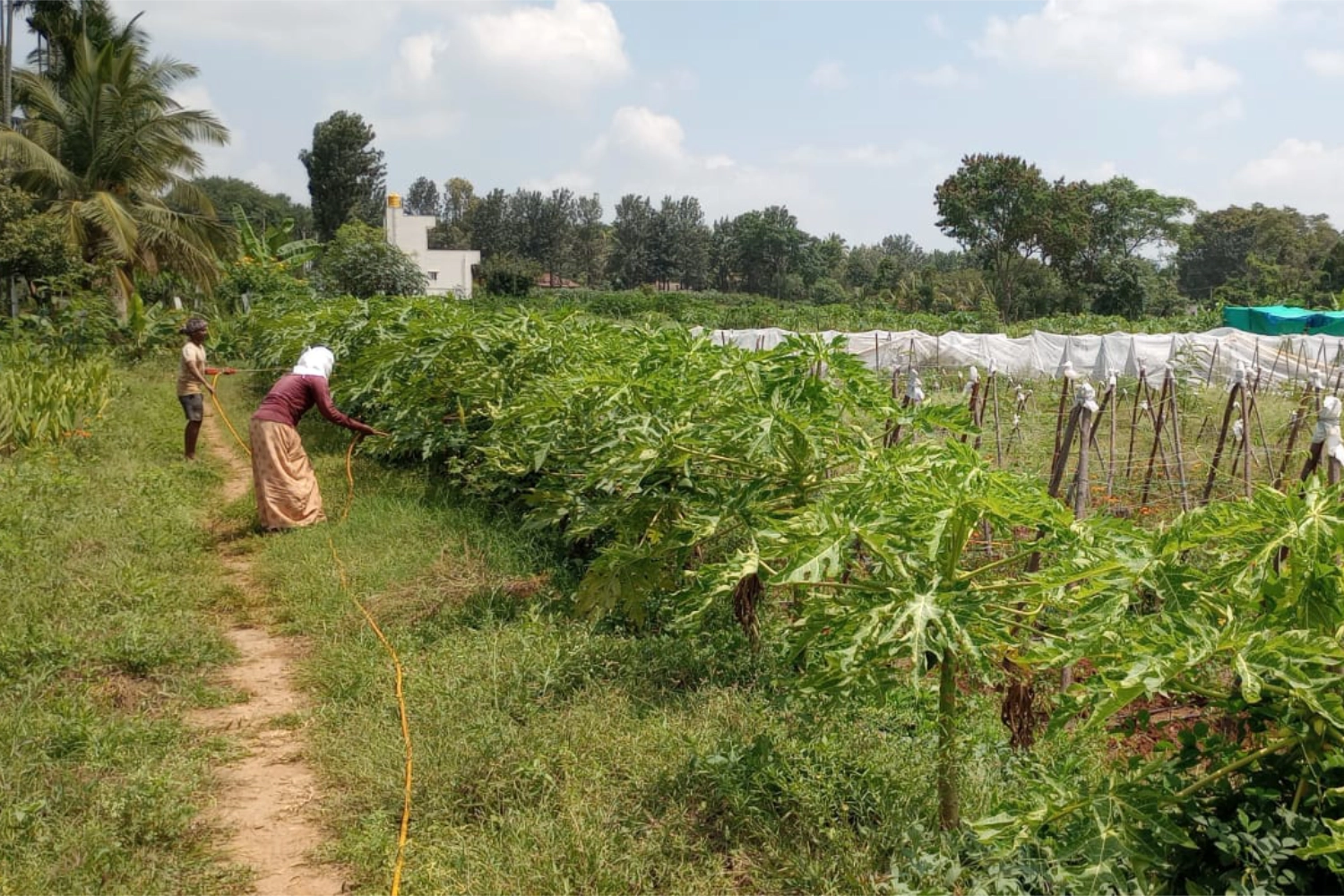
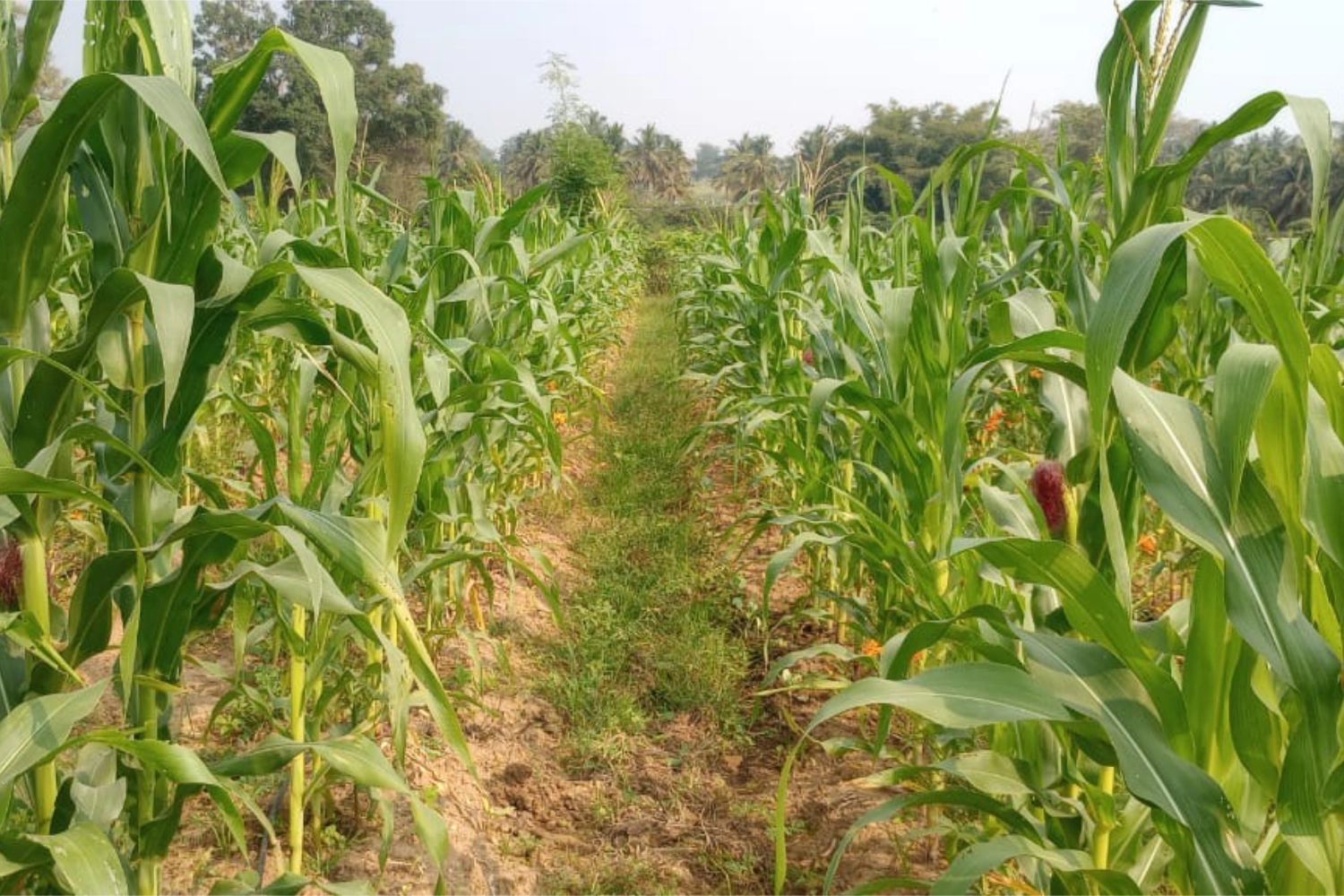
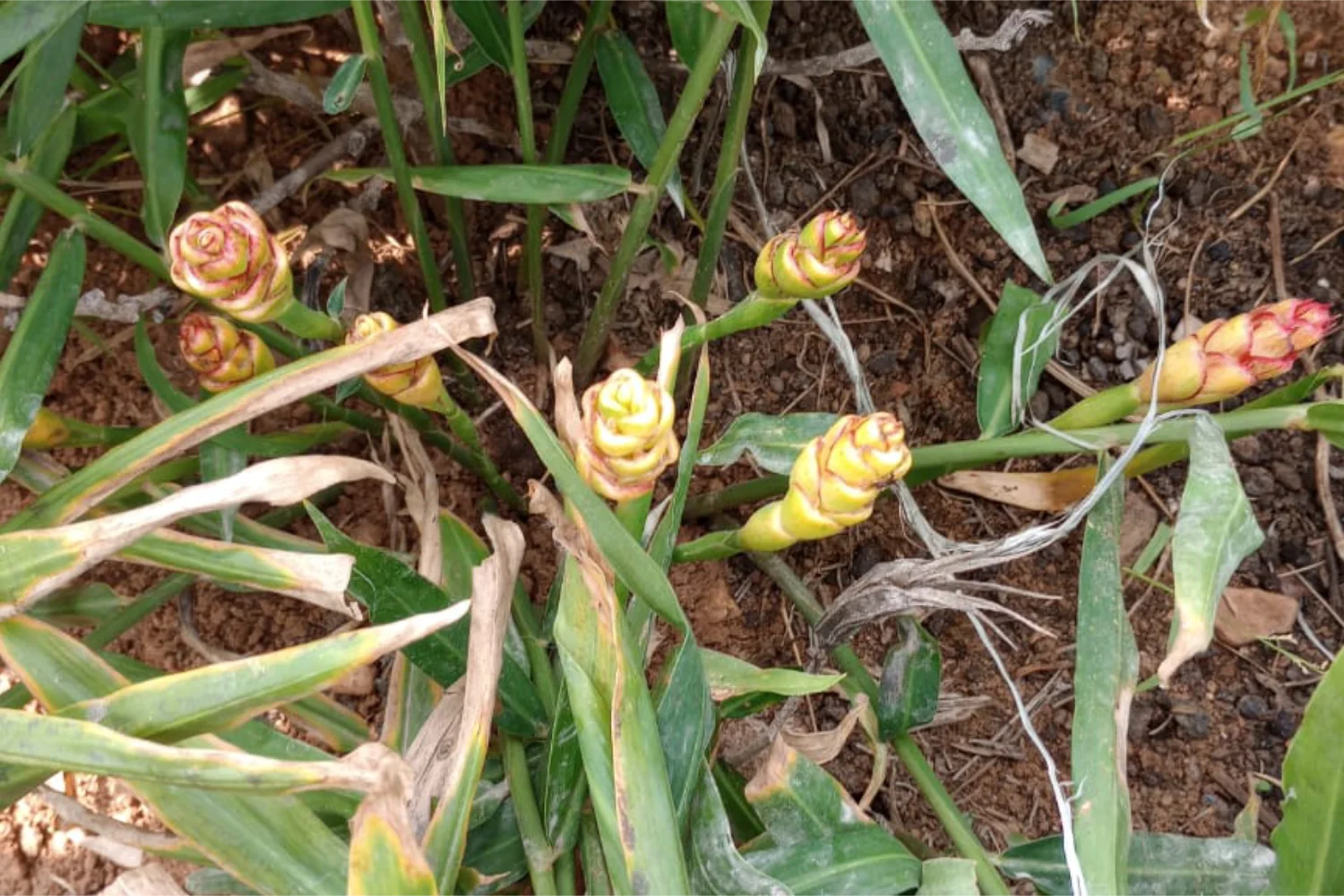
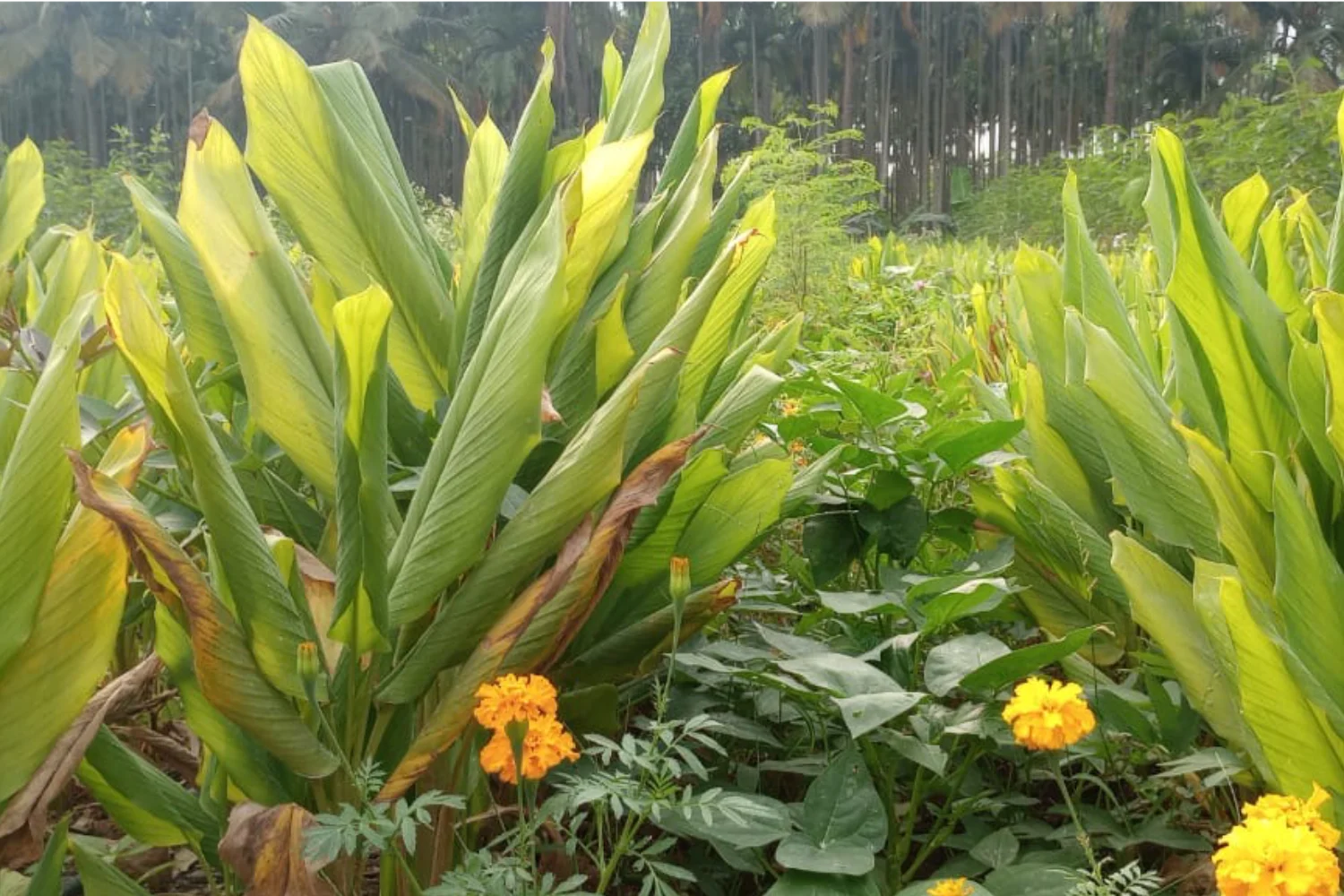
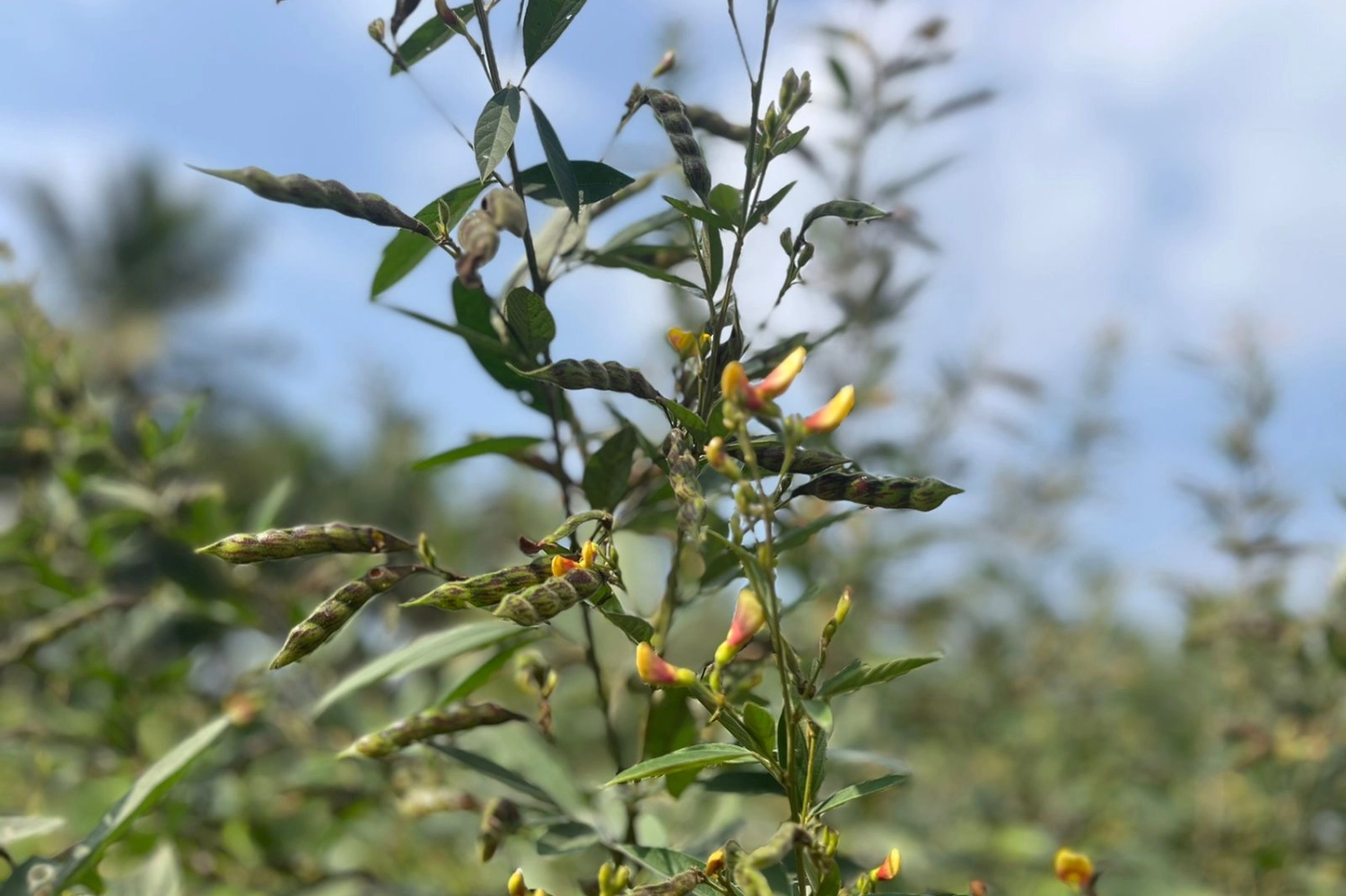
Previous image
Next image
Maddur
Maddur Farm (Karnataka)
Farm area : 20 acres
The Maddur farm is about 20 acres in an arid region. Rampant soil erosion had left the land degraded. Reckless drilling of the borewells, a phenomenon widespread across the state and the country, depleted the groundwater table in the region. However, coconut and mango trees formed a part of the farm. The initial effort, thus, was to control soil erosion with a series of contour bunds and trenches and that produced results. We completed one cycle of vegetables as inter crop between coconuts and mangoes. Also various gourds such as Ridge, Ash, Bottle, Bitter, and Sponge, squashes such as pumpkin, and water melons are grown along the way. A portion of the land has been allocated to grow rain-fed crops, comprising millets and pluses such as Pigeon pea, Green gram, Ground nut, Cow pea, Castor, Mustard, Niger, Ragi, Sesame, Field beans... We have sheep, goats other than poultry. Composting, enriched microbial application and mulching are practised to accelerate the regeneration of the soil. Animal grazing in rain-fed areas help soil regeneration, as their droppings meet the nutrients requirement of the soil.
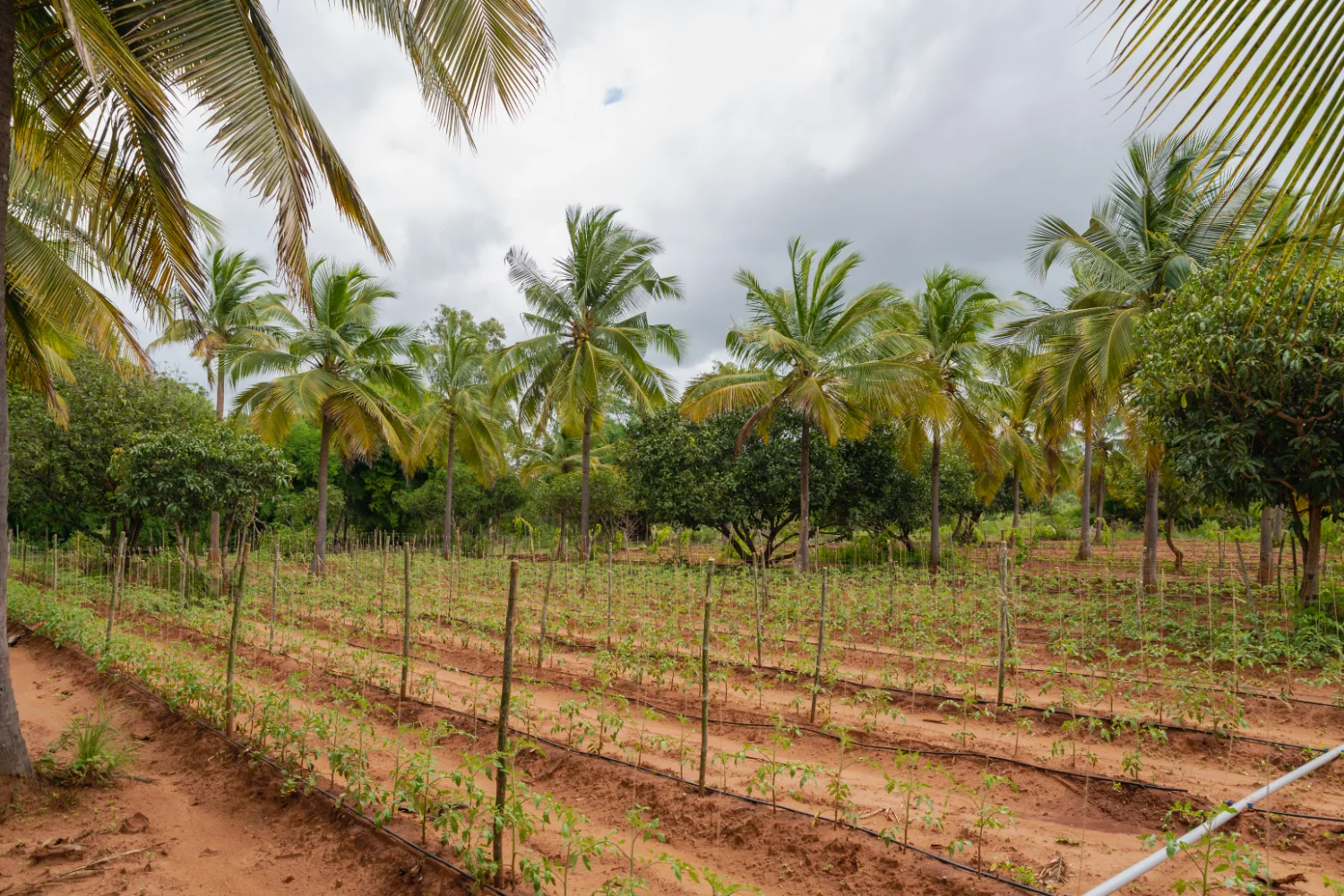
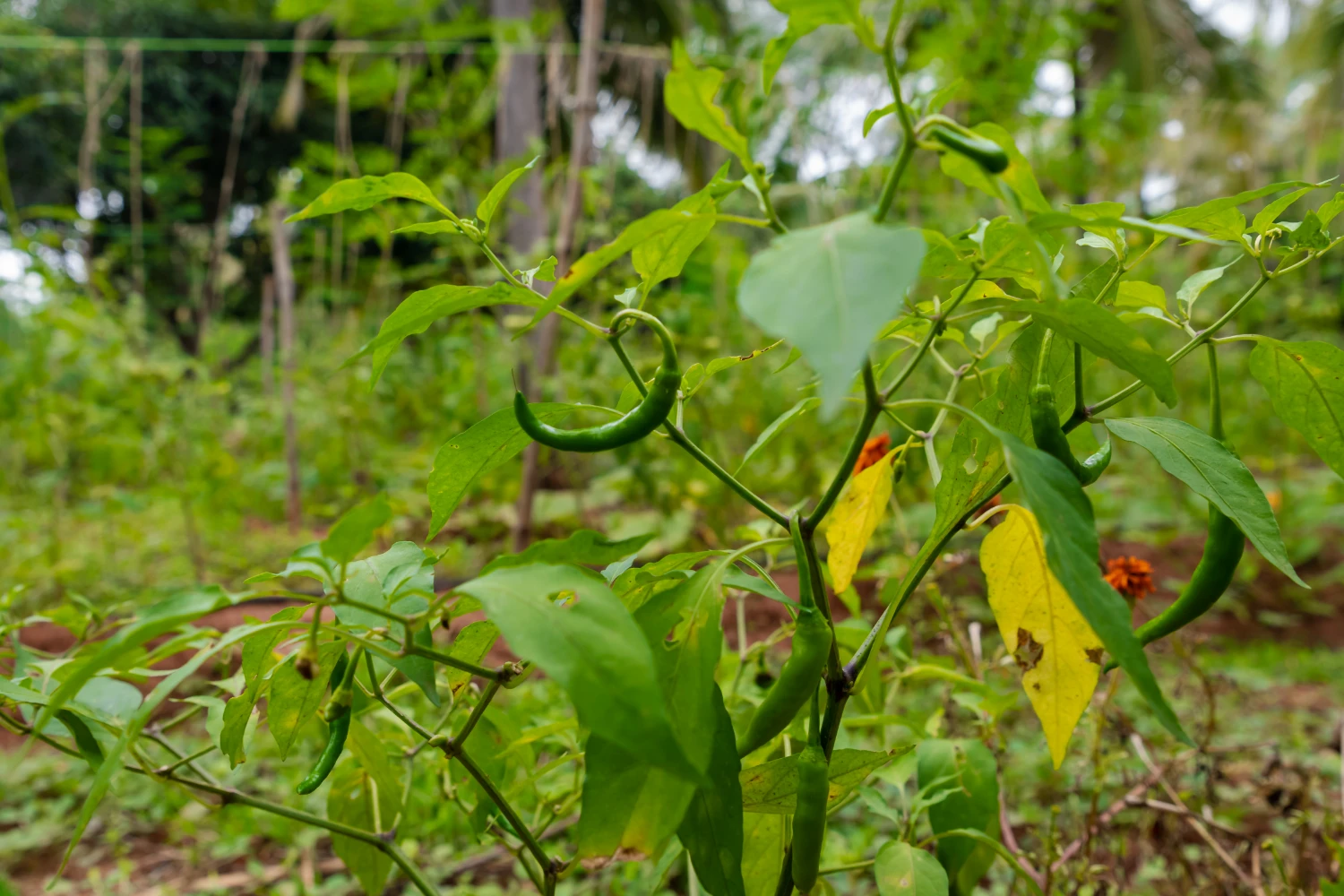
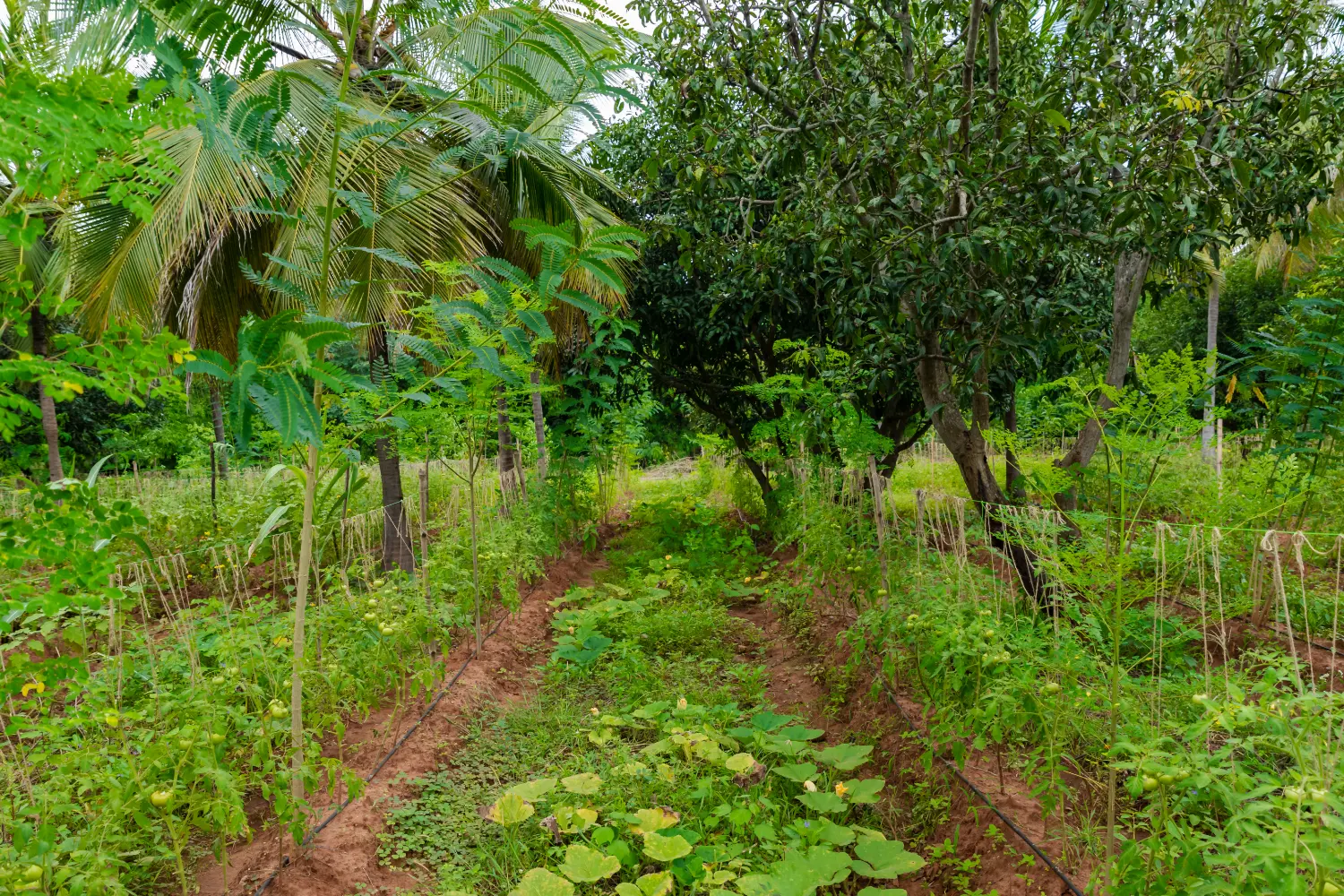
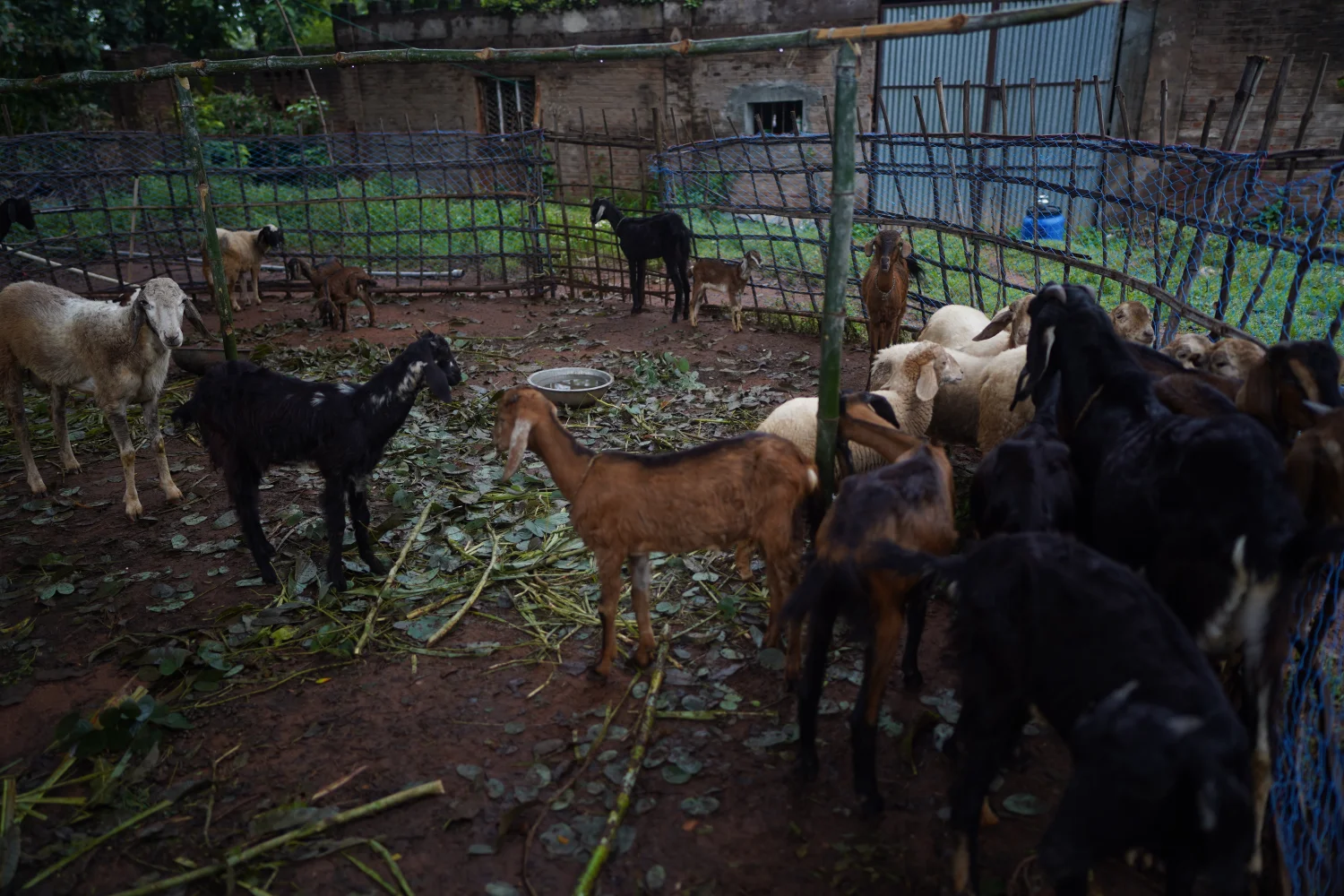
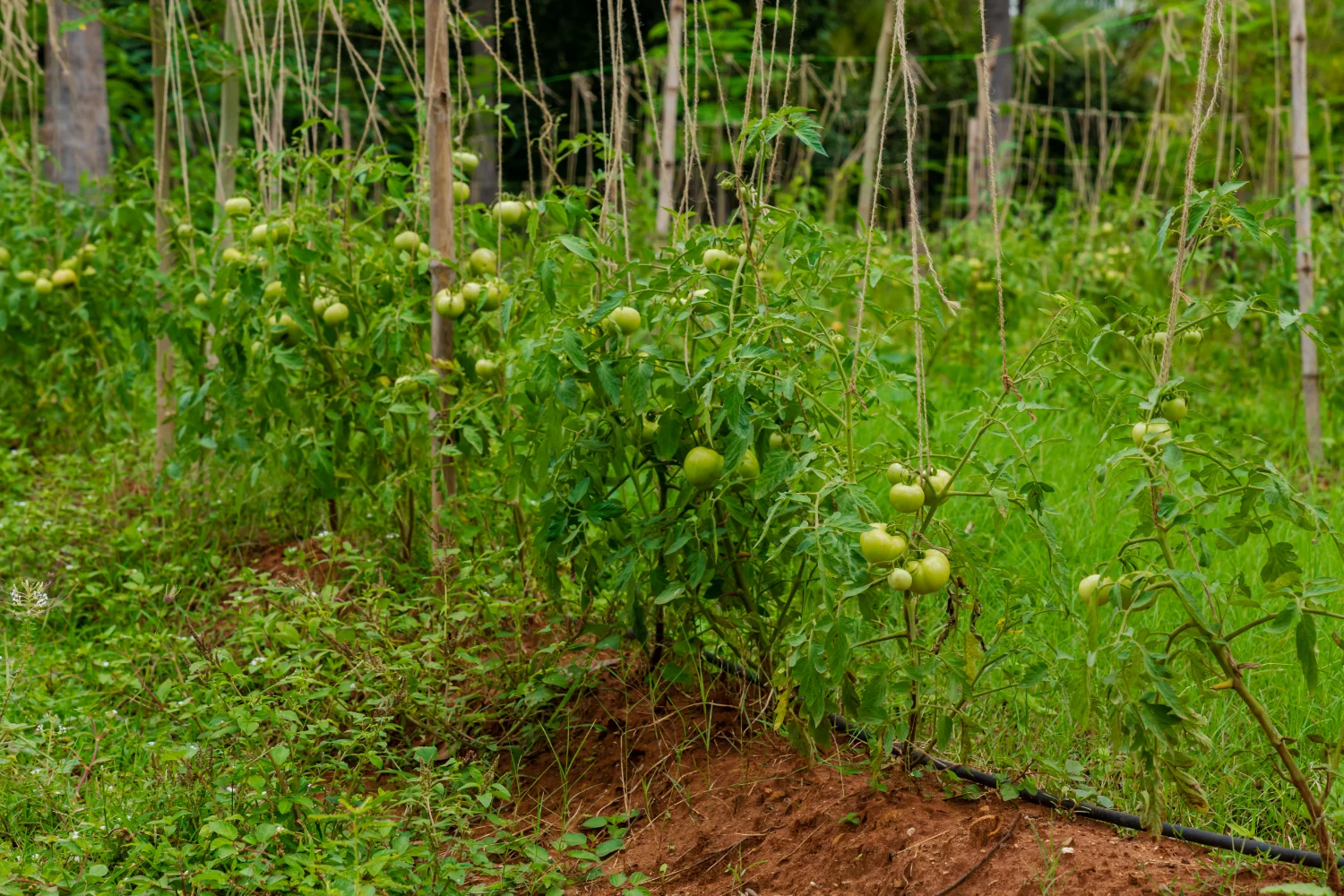
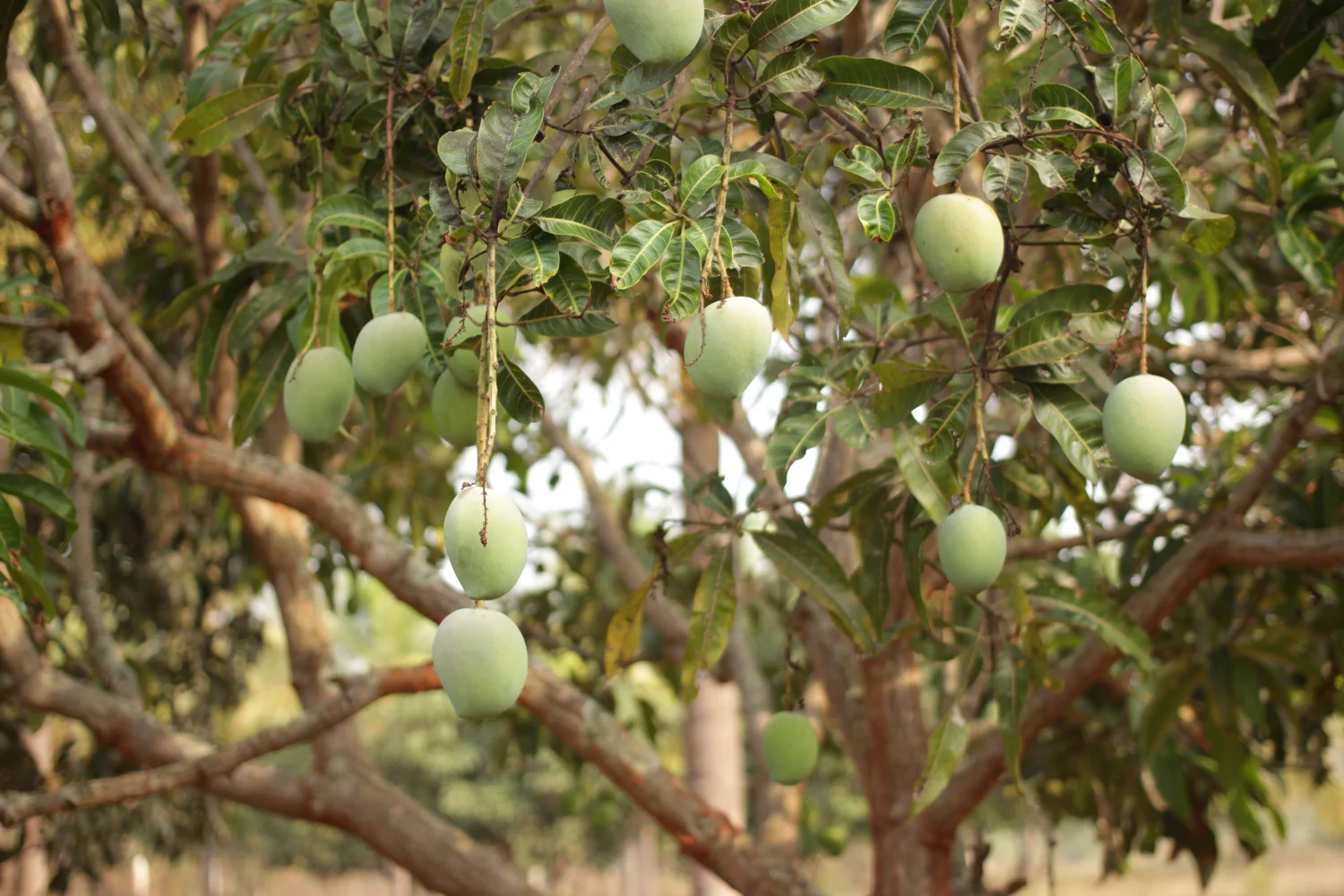
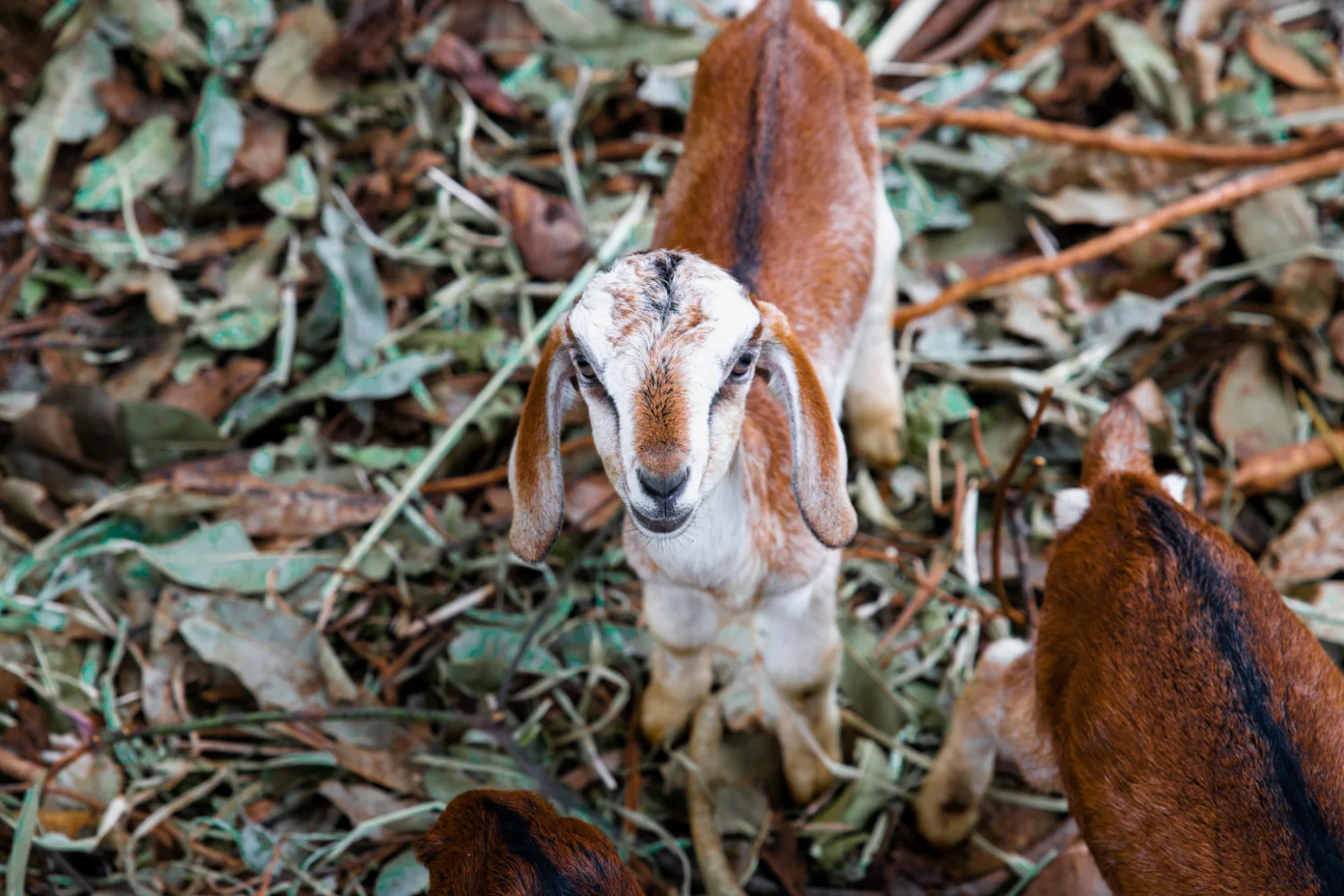
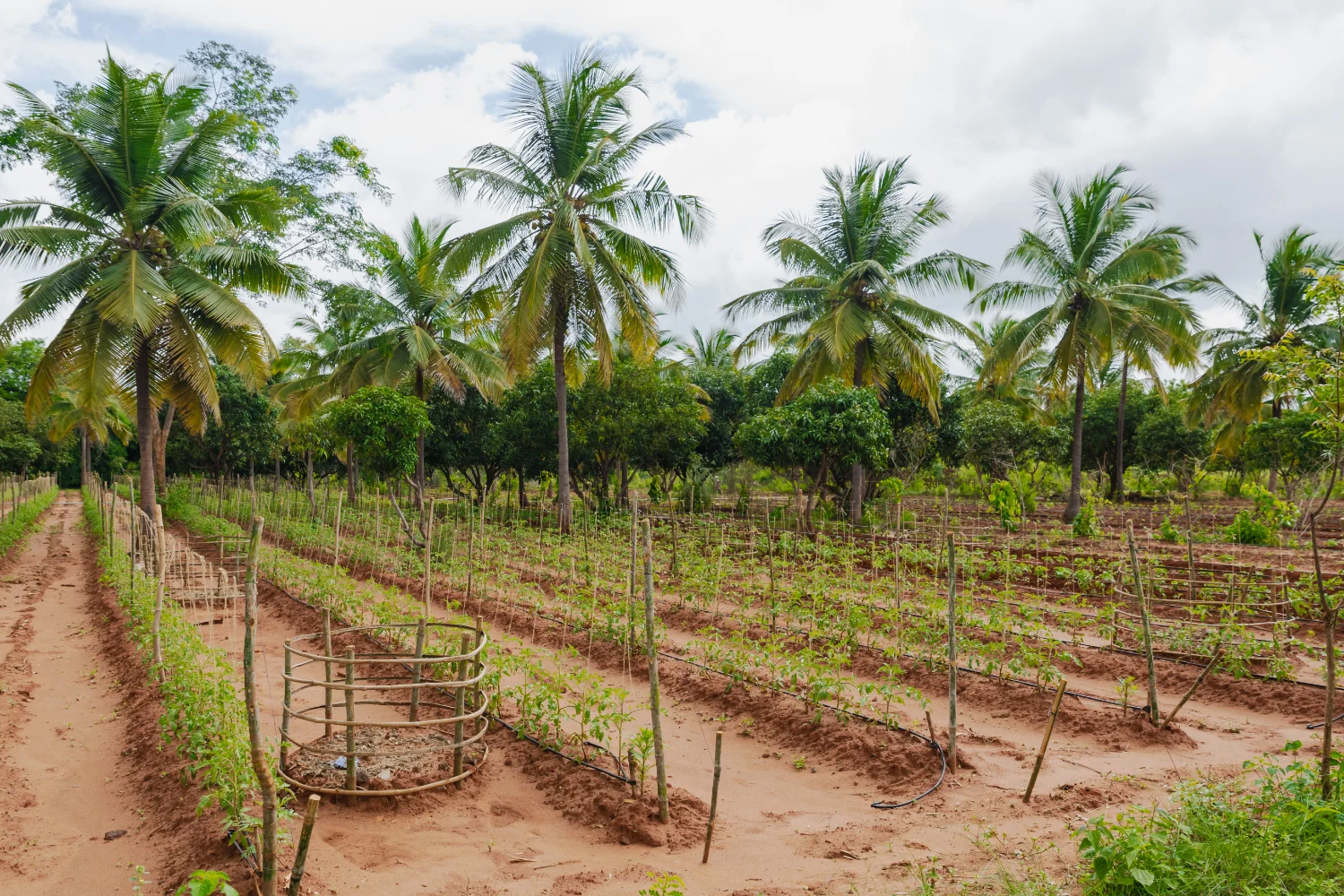
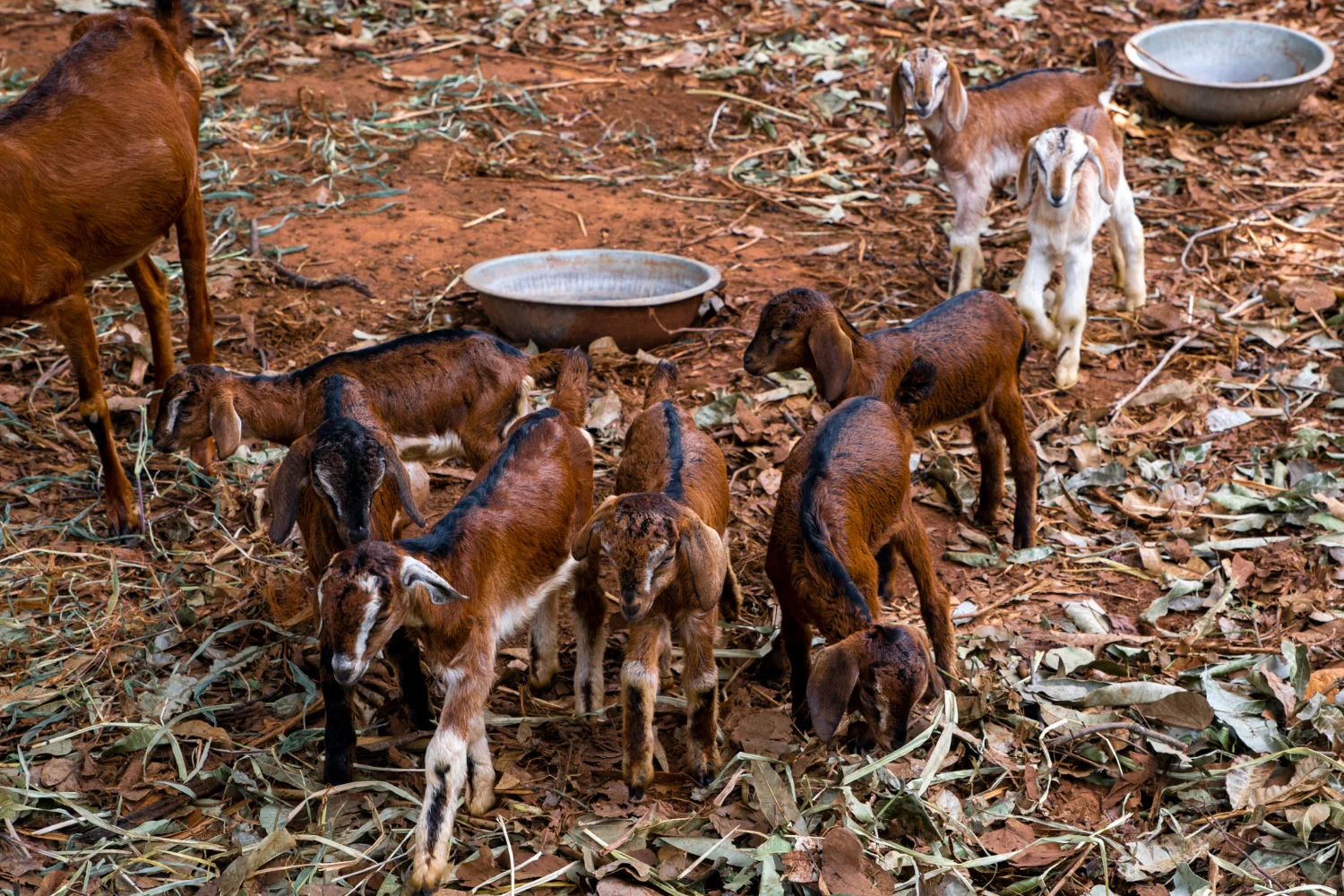
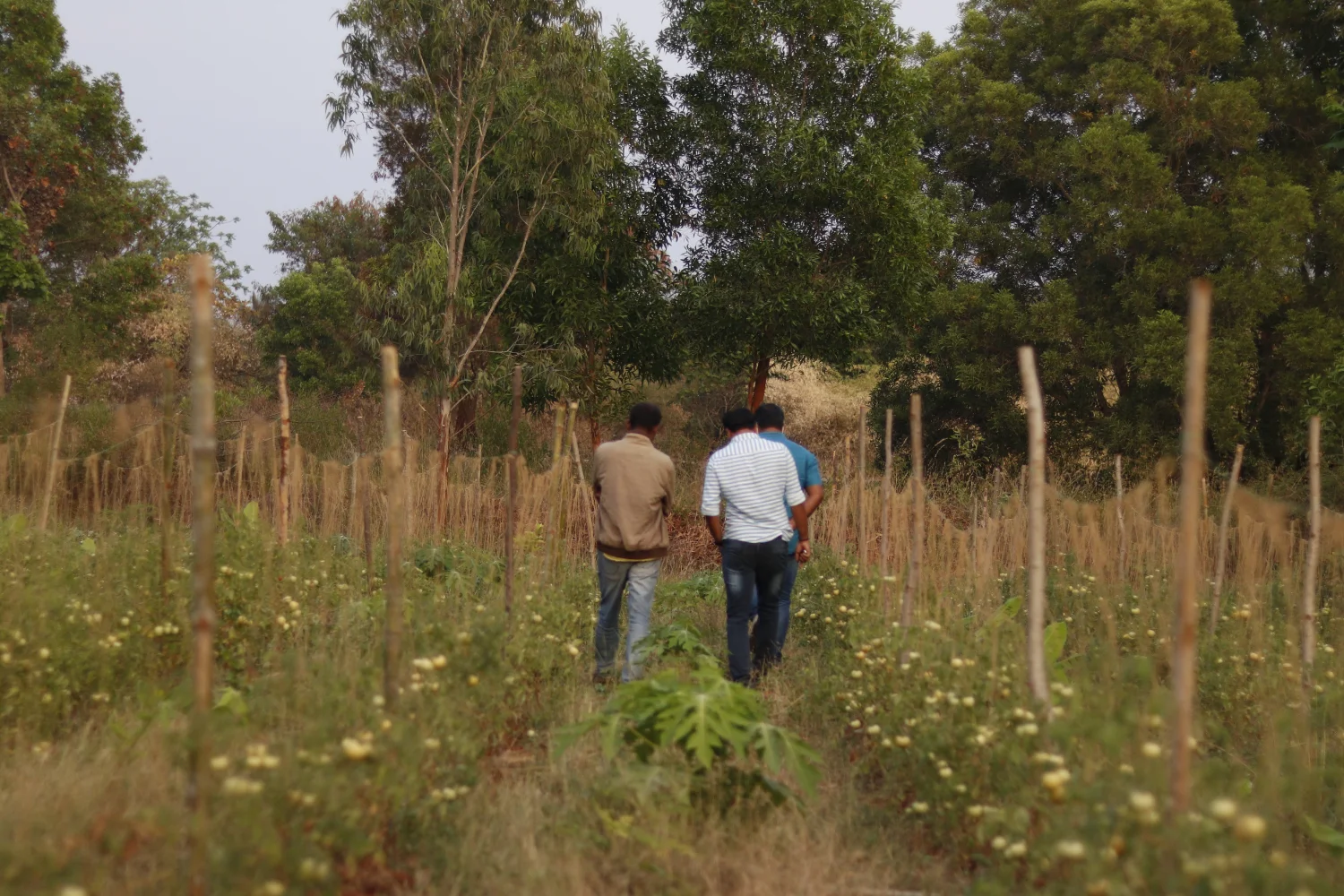
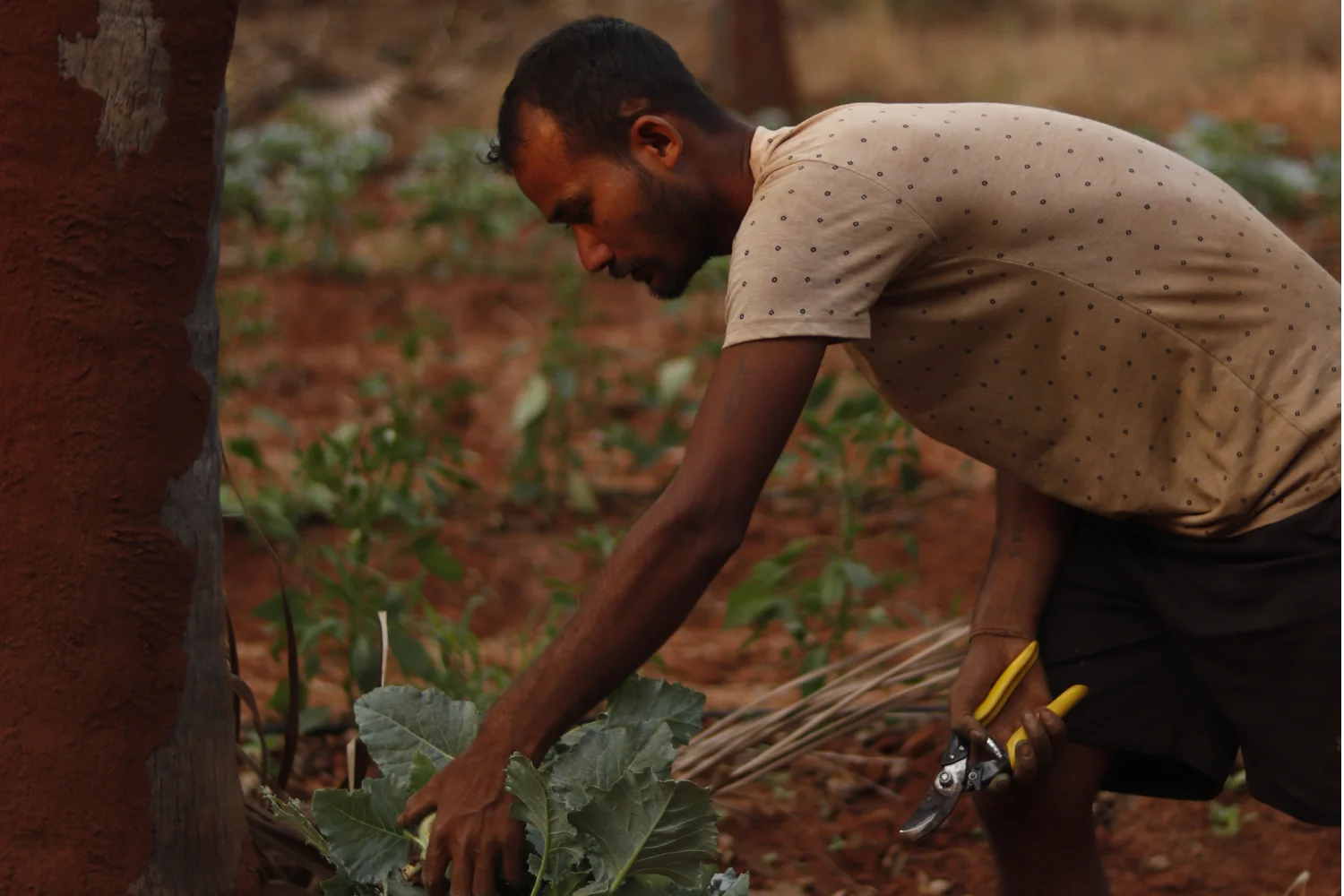
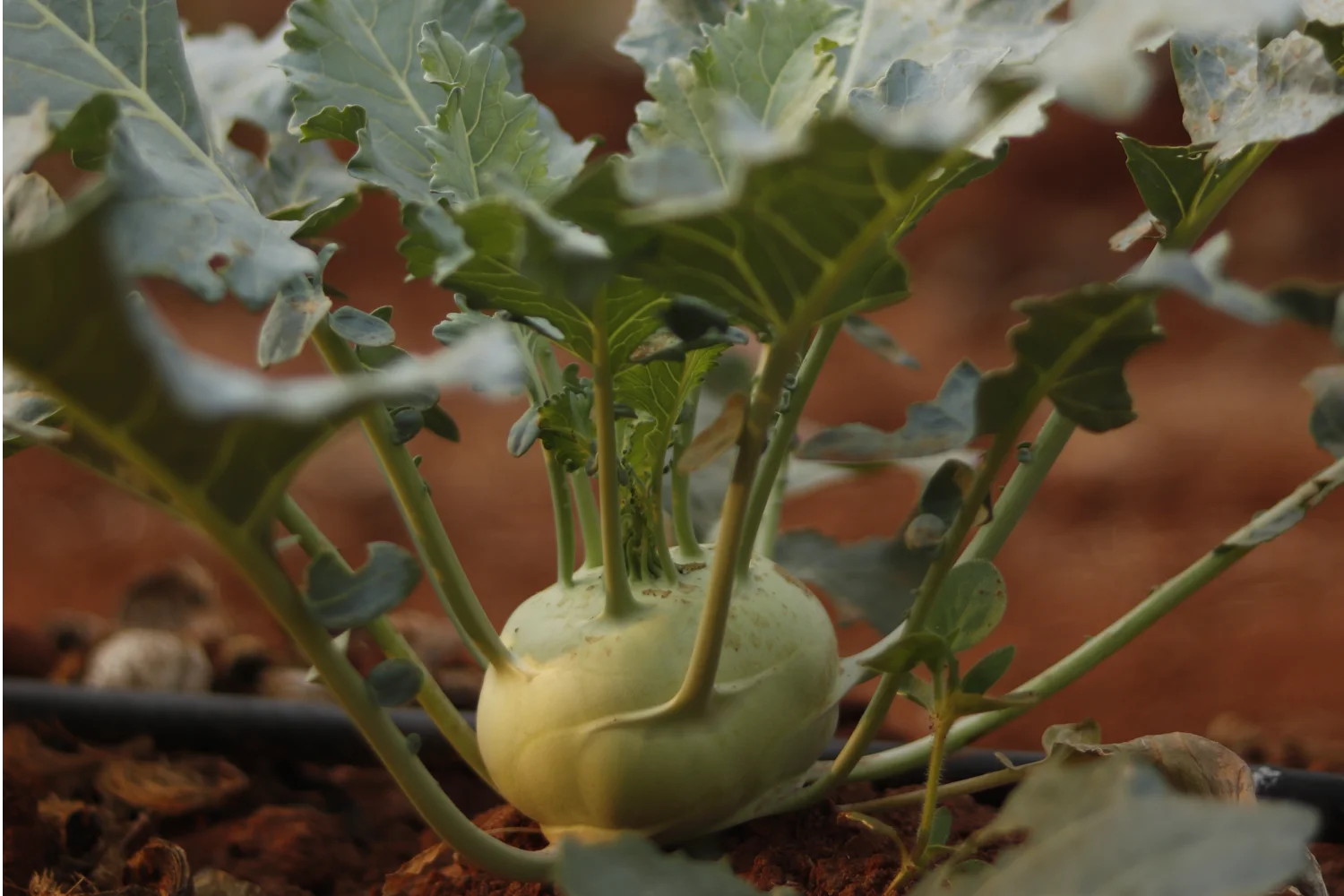
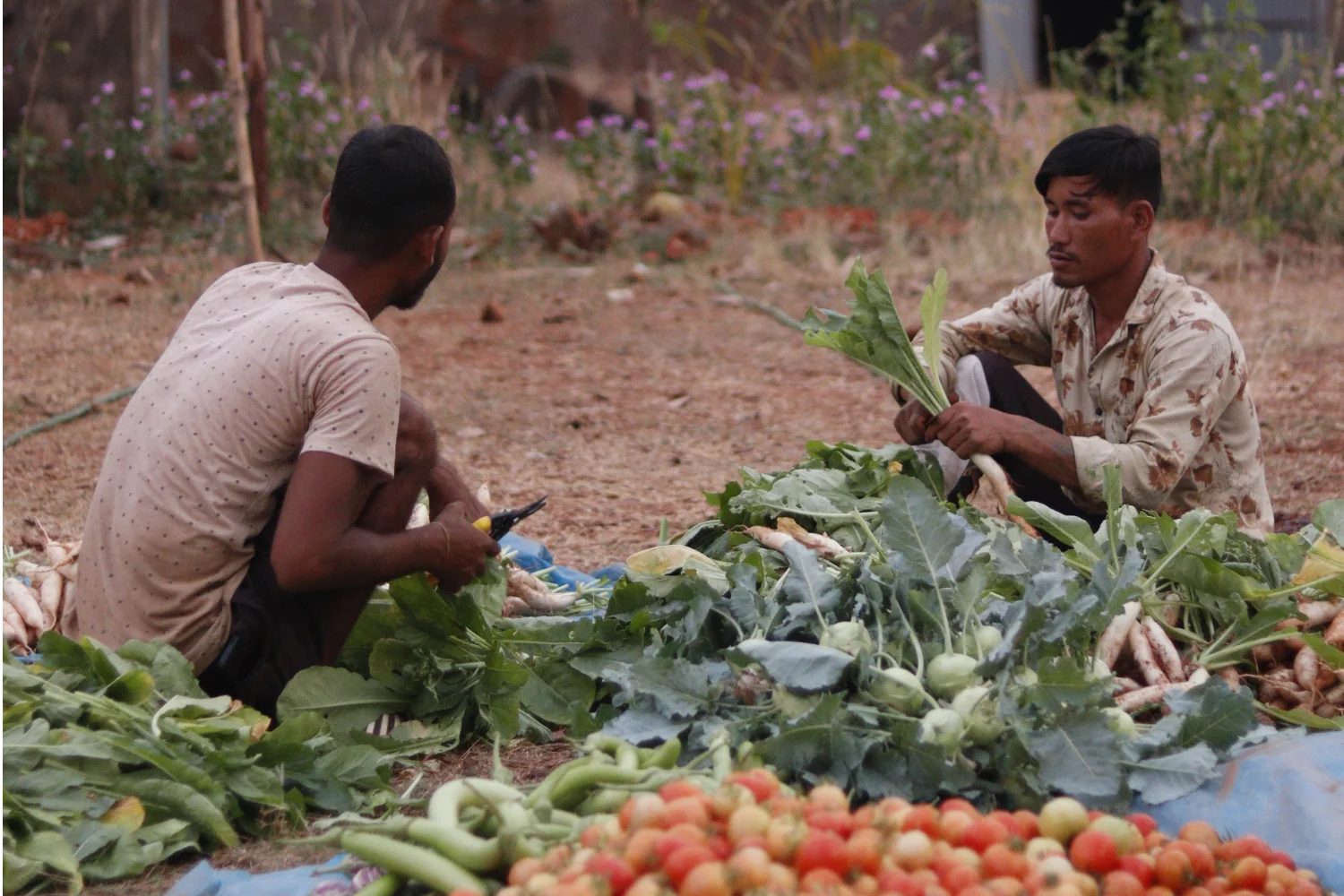
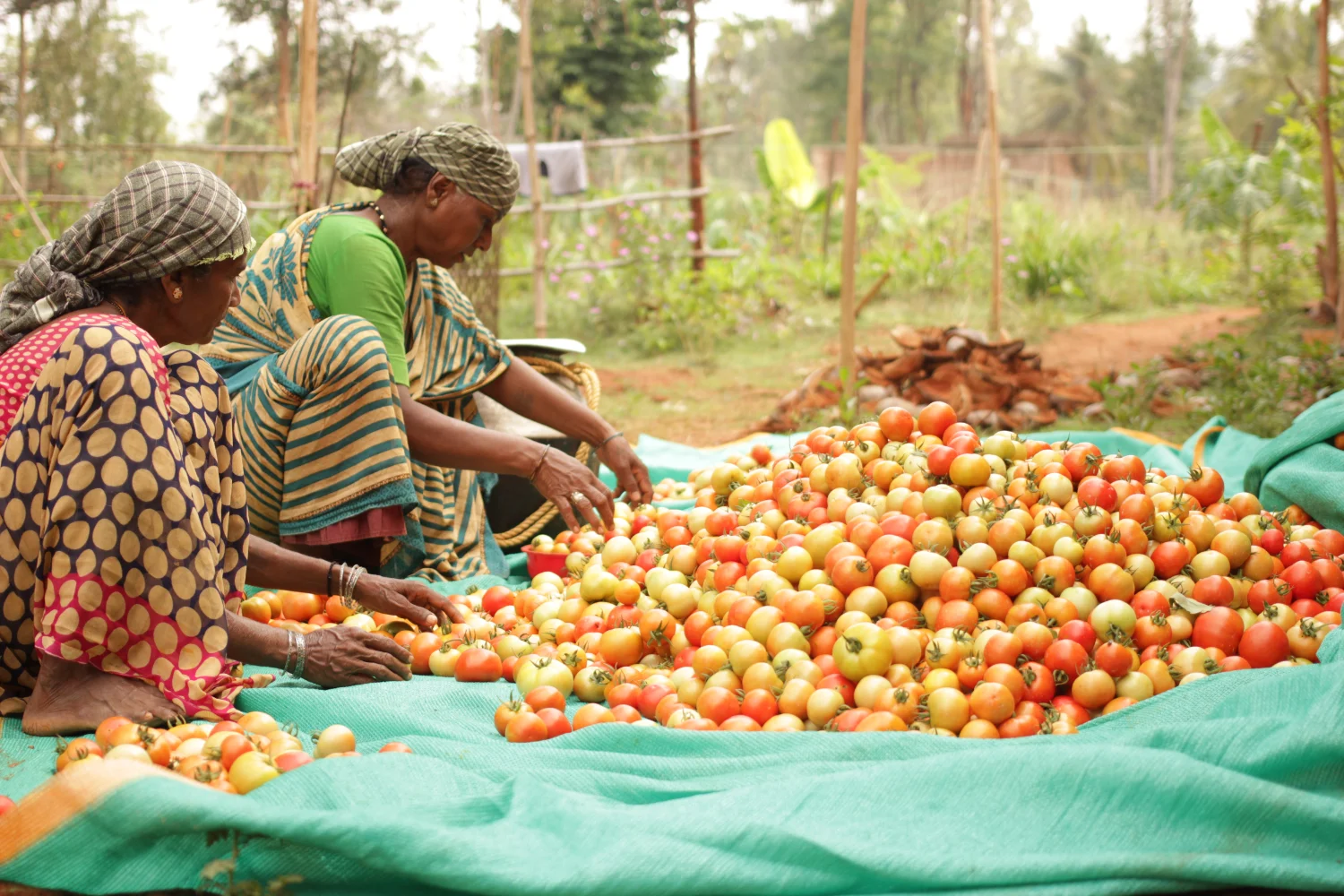
Previous image
Next image
Gundlupete
Gundlupete Farm (Karnataka)
Farm area : 17 acres
Cereals and pulses are largely grown in this belt which falls in the rain shadow region of the Western Ghats. Taking the process of regenerating the soil slow and steady, we will grow rain-fed crops while taking care of the soil, nurturing it through composting, enriched microbes, mulching… Agase, drumstick and curry leaves are planted along the bunds for biomass and soil enrichment. Castor, niger, mustard etc will be planted as border crops. A portion of the land has been set aside for the fodder area, as plan is afoot to rear native varieties of cattle. Thus, an integrated farm will accelerate the regeneration processes of the degraded land.
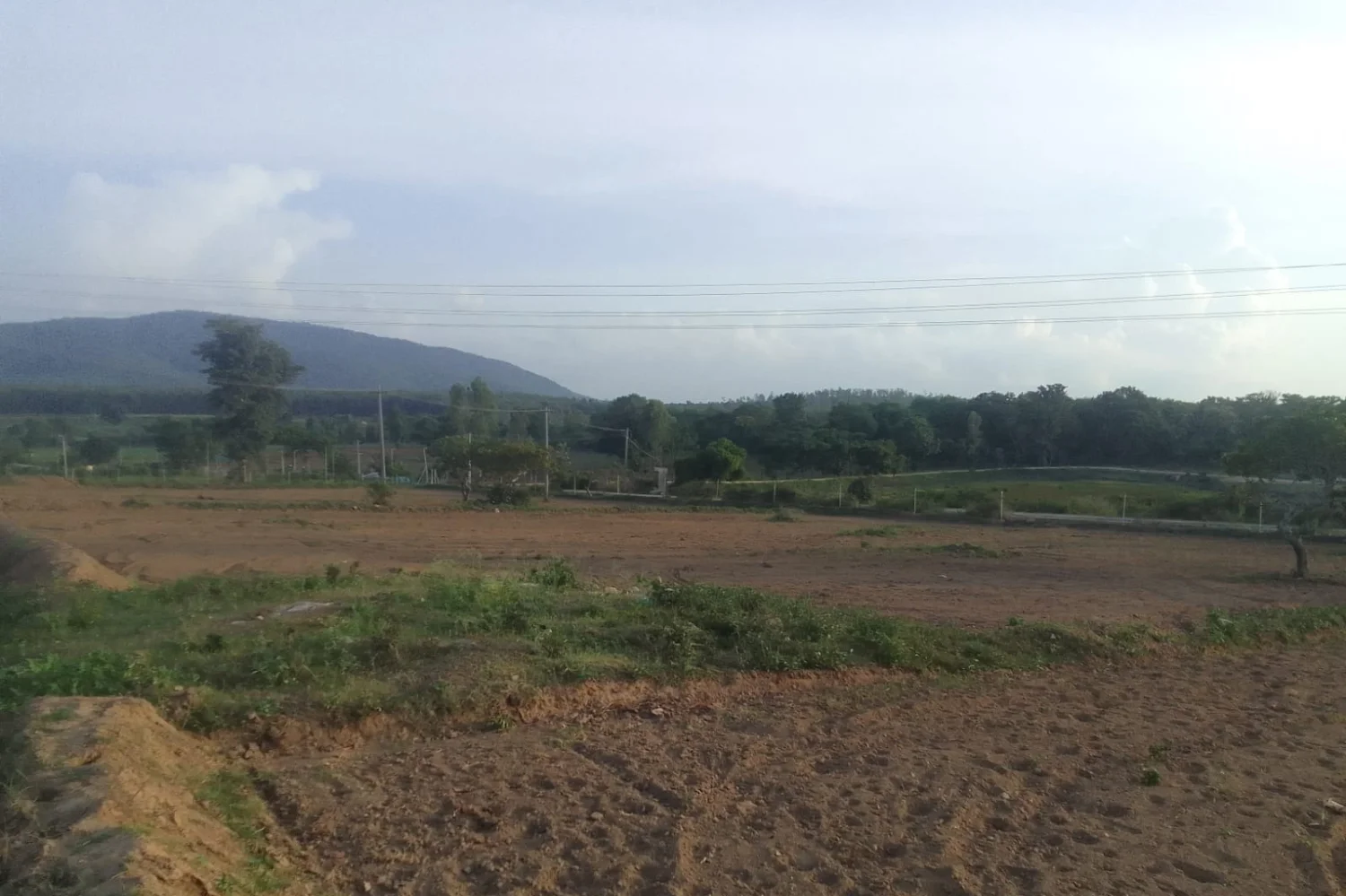
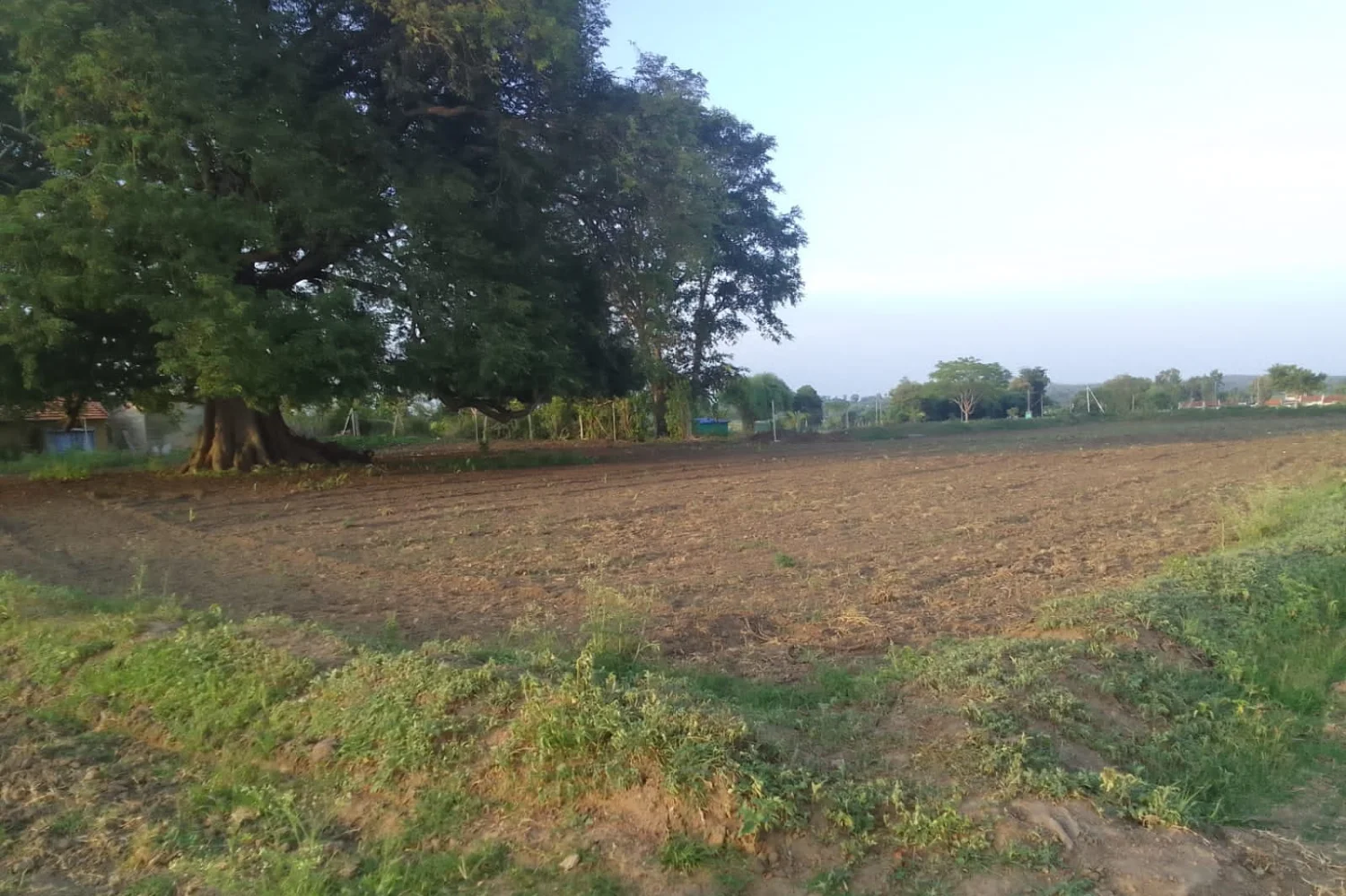
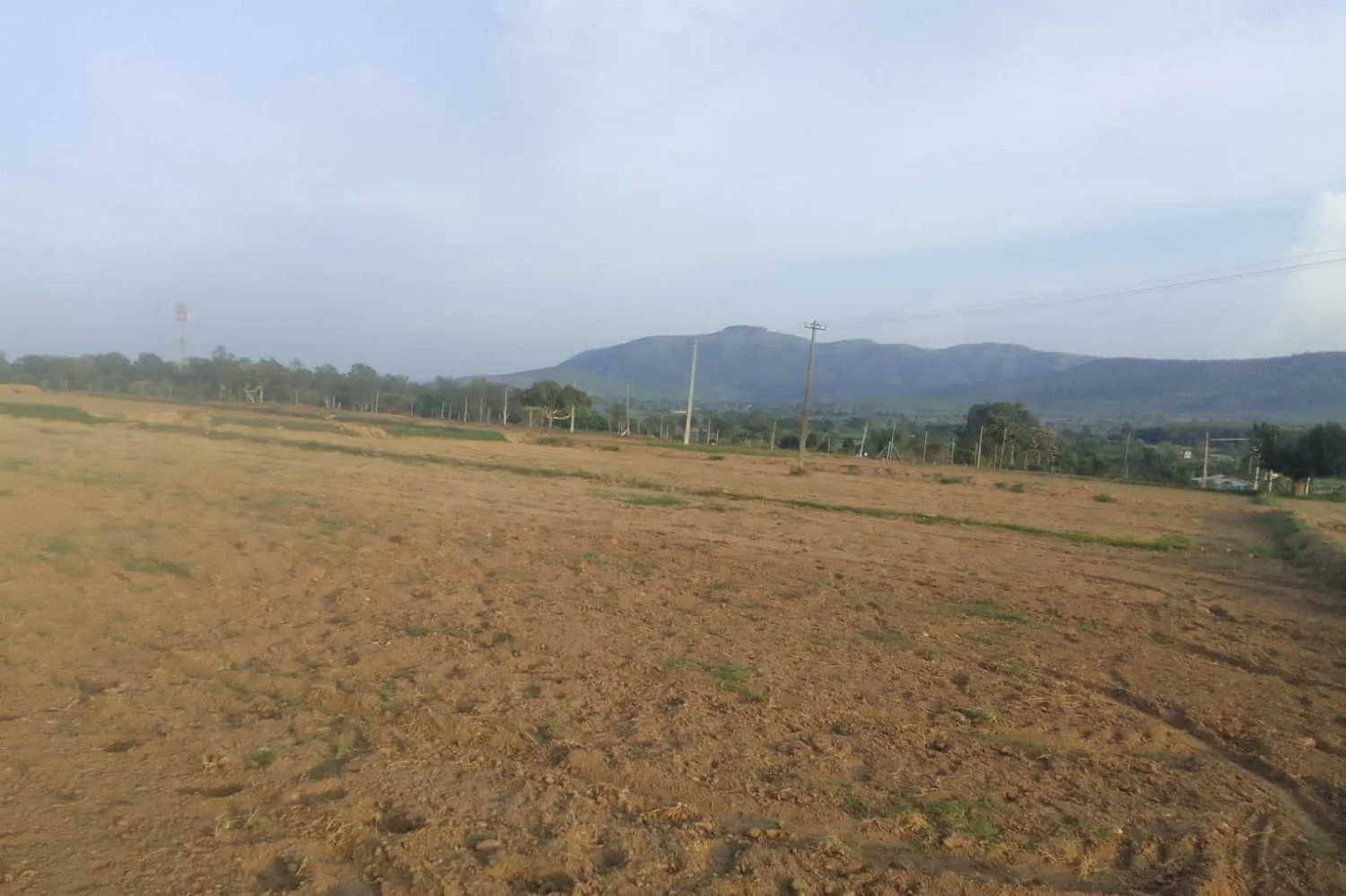
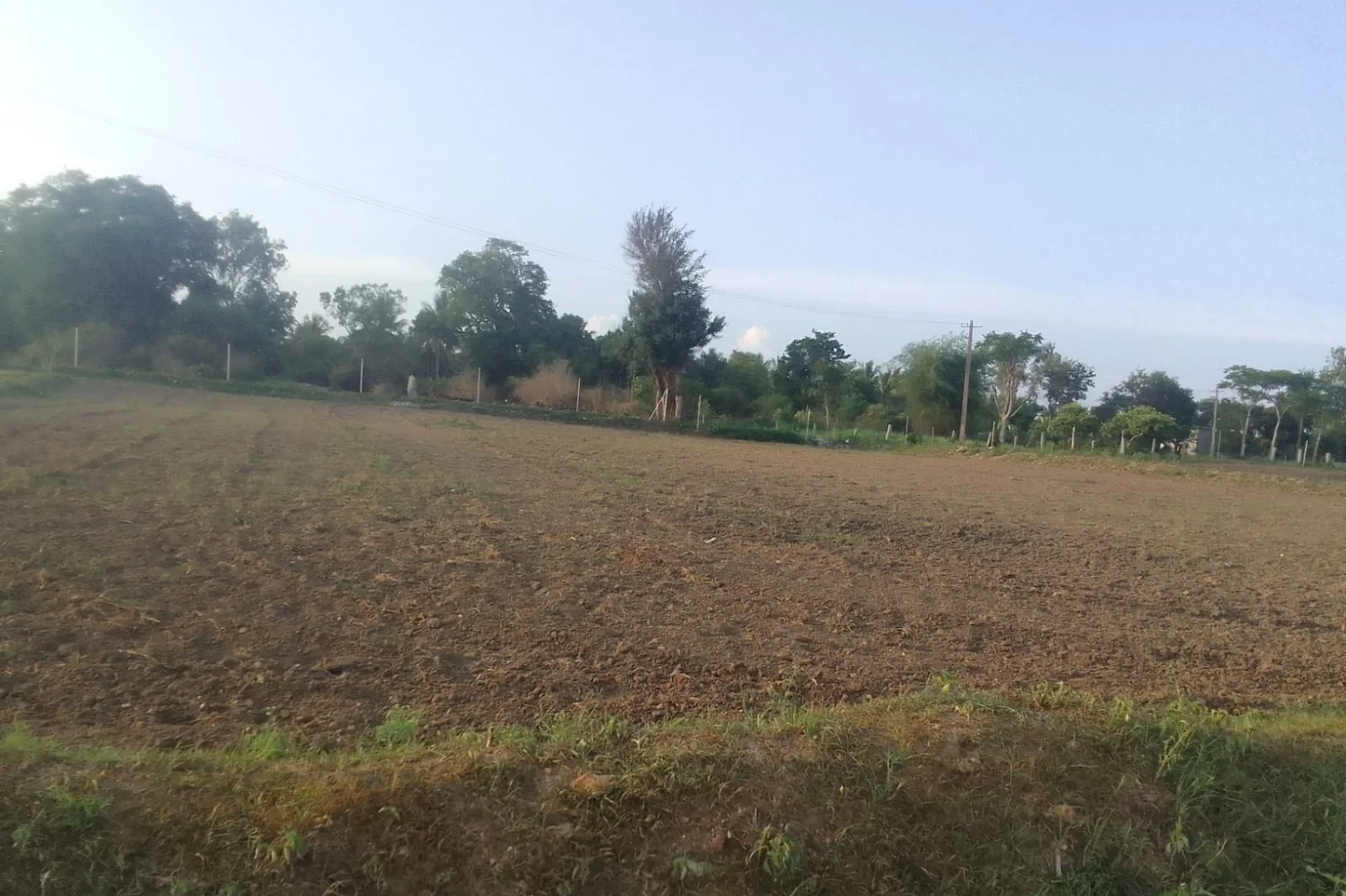
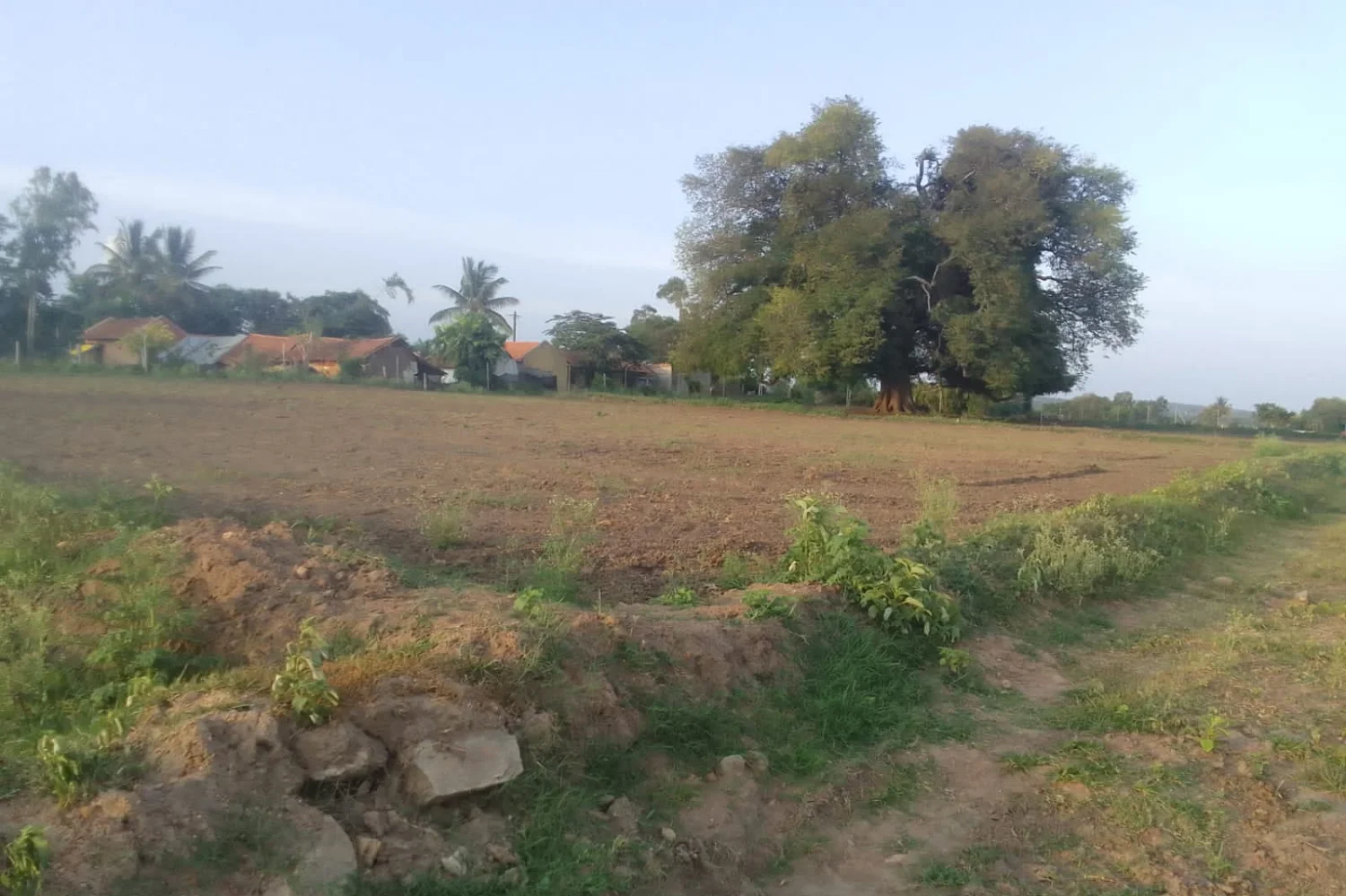
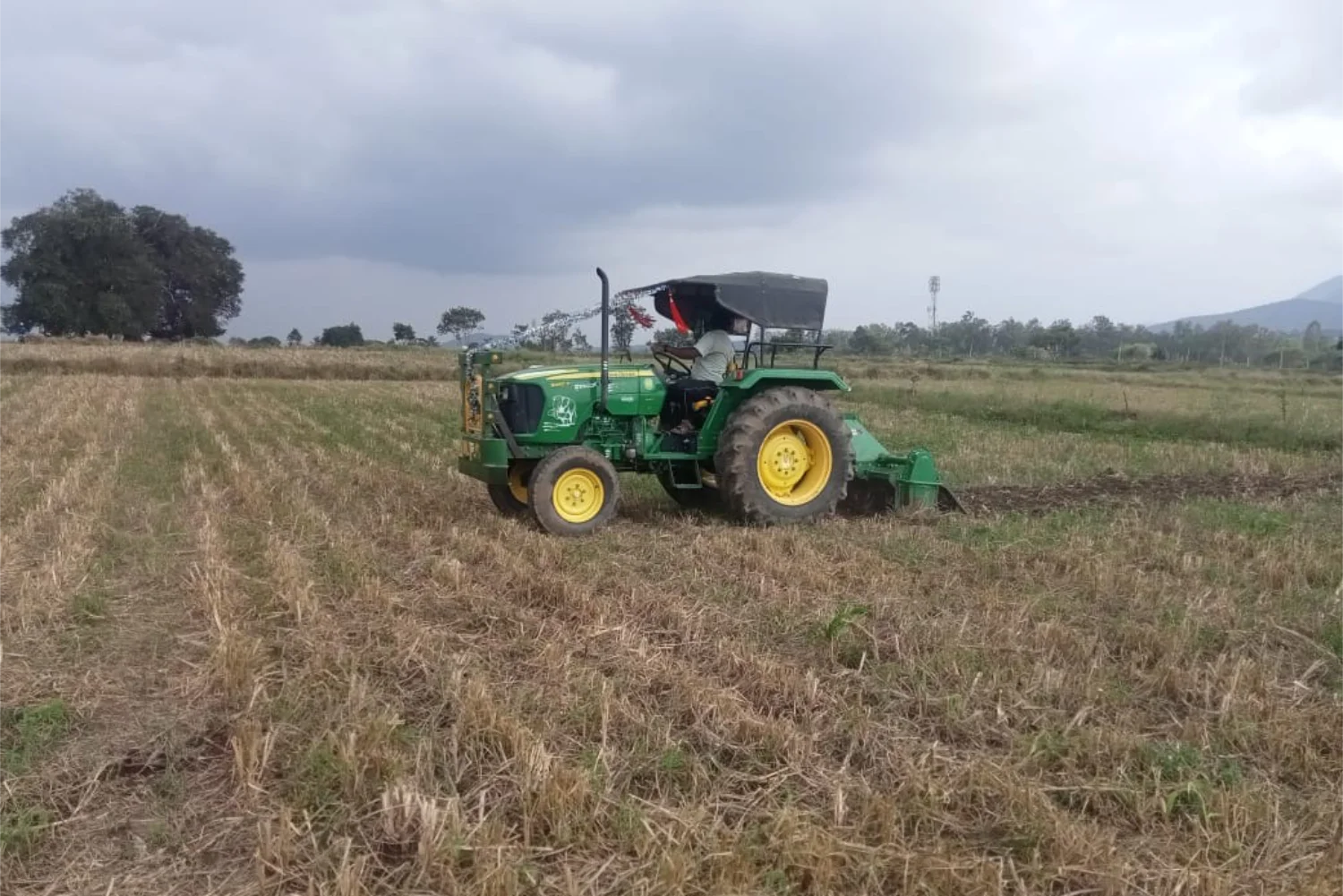
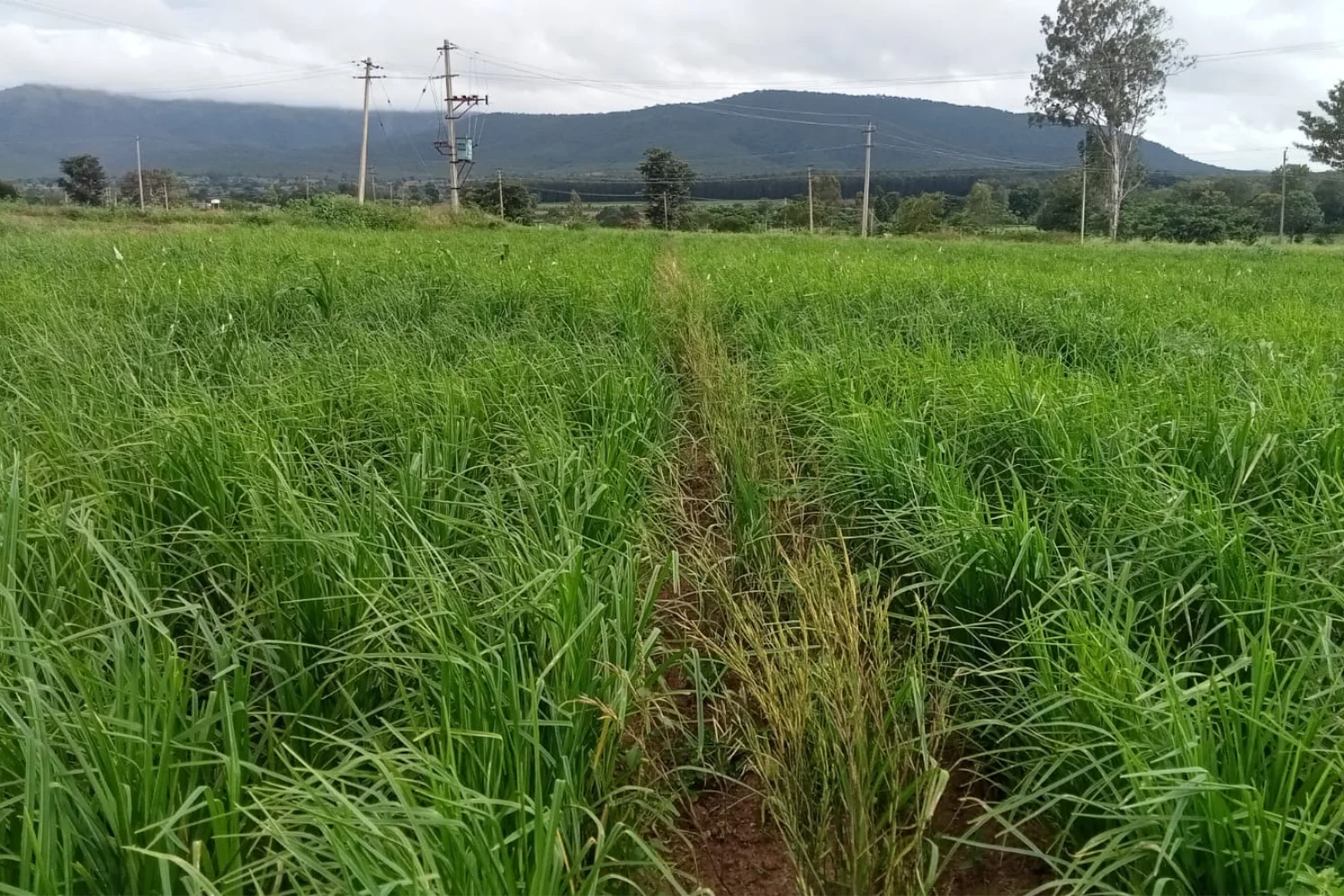
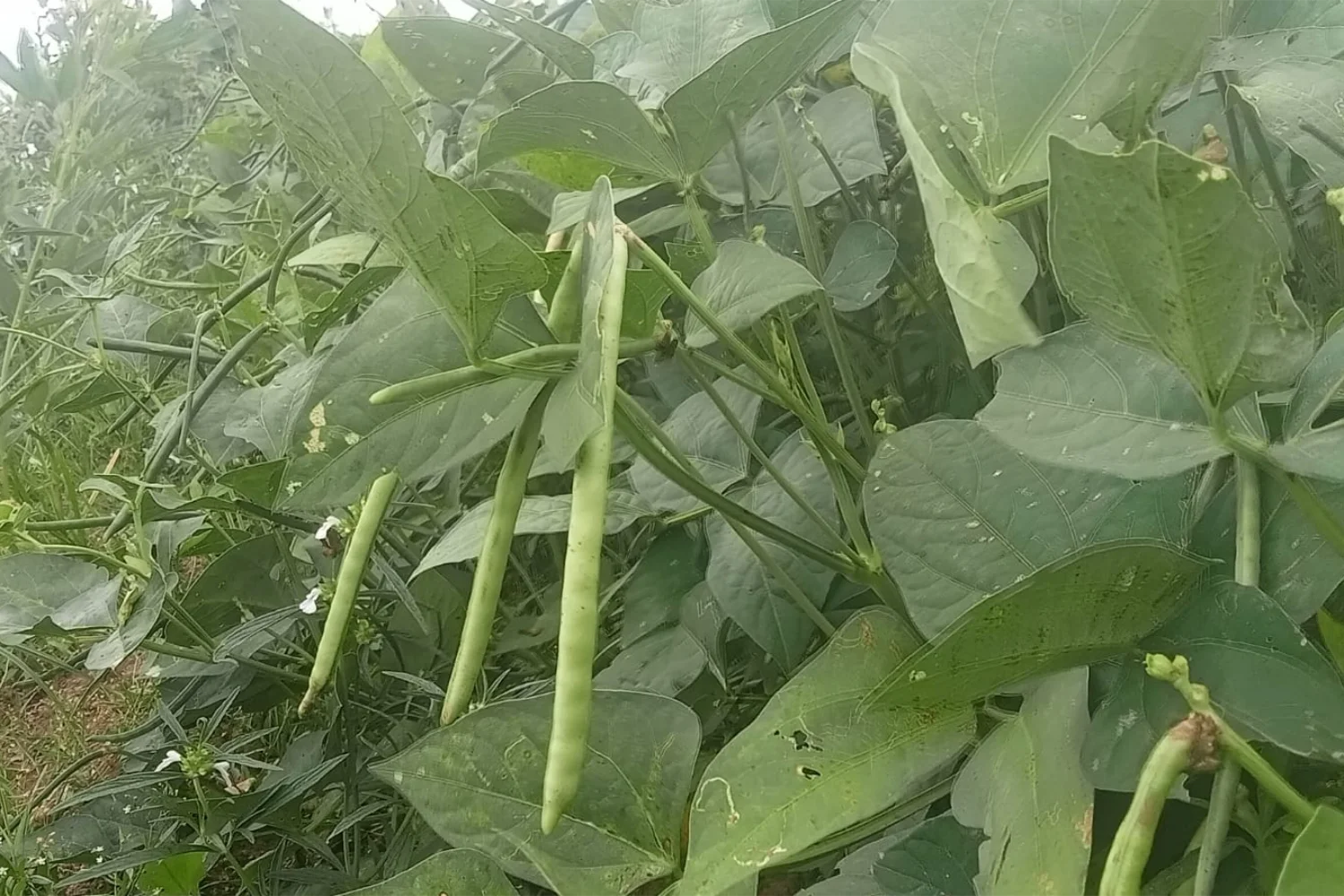
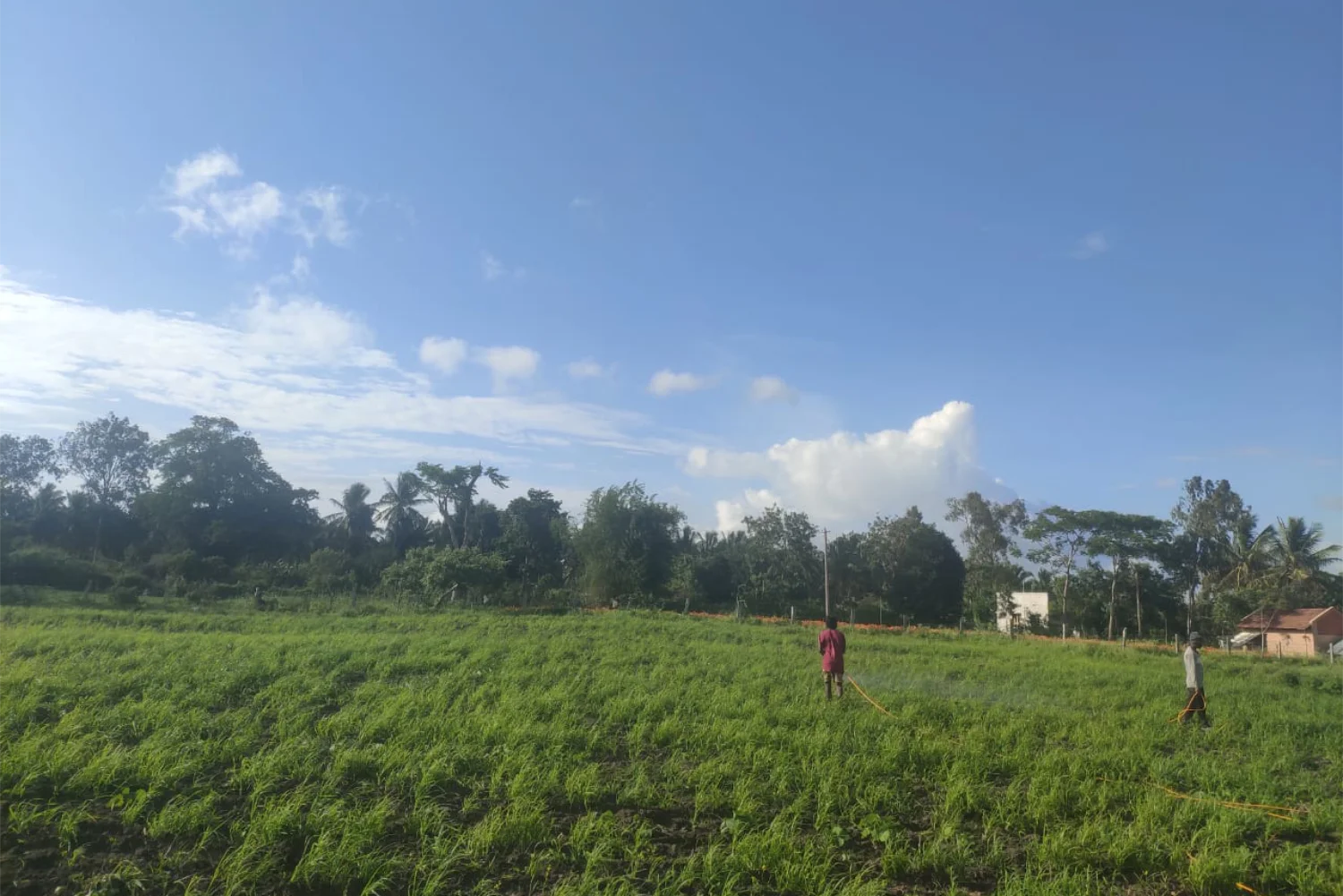
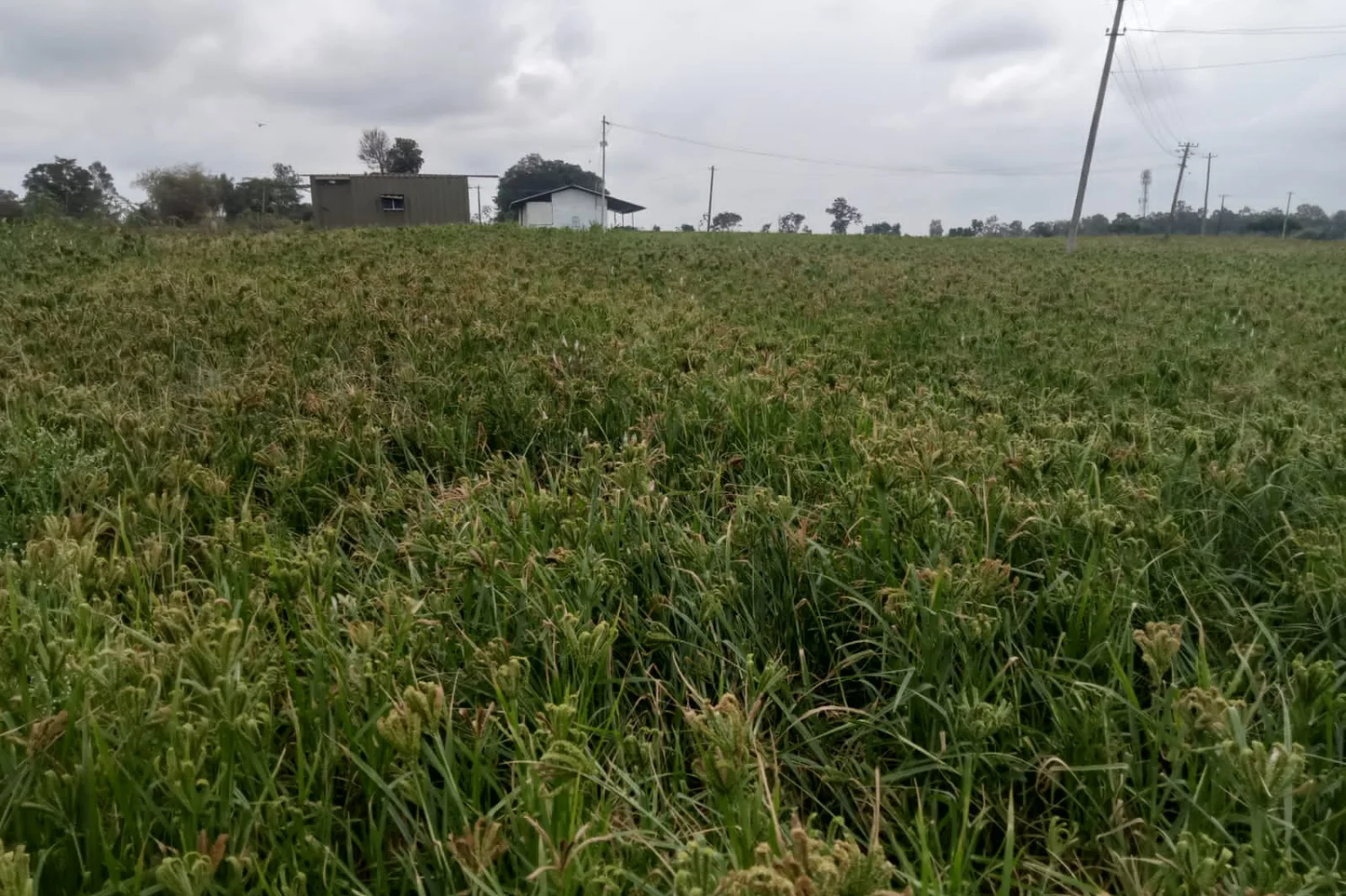
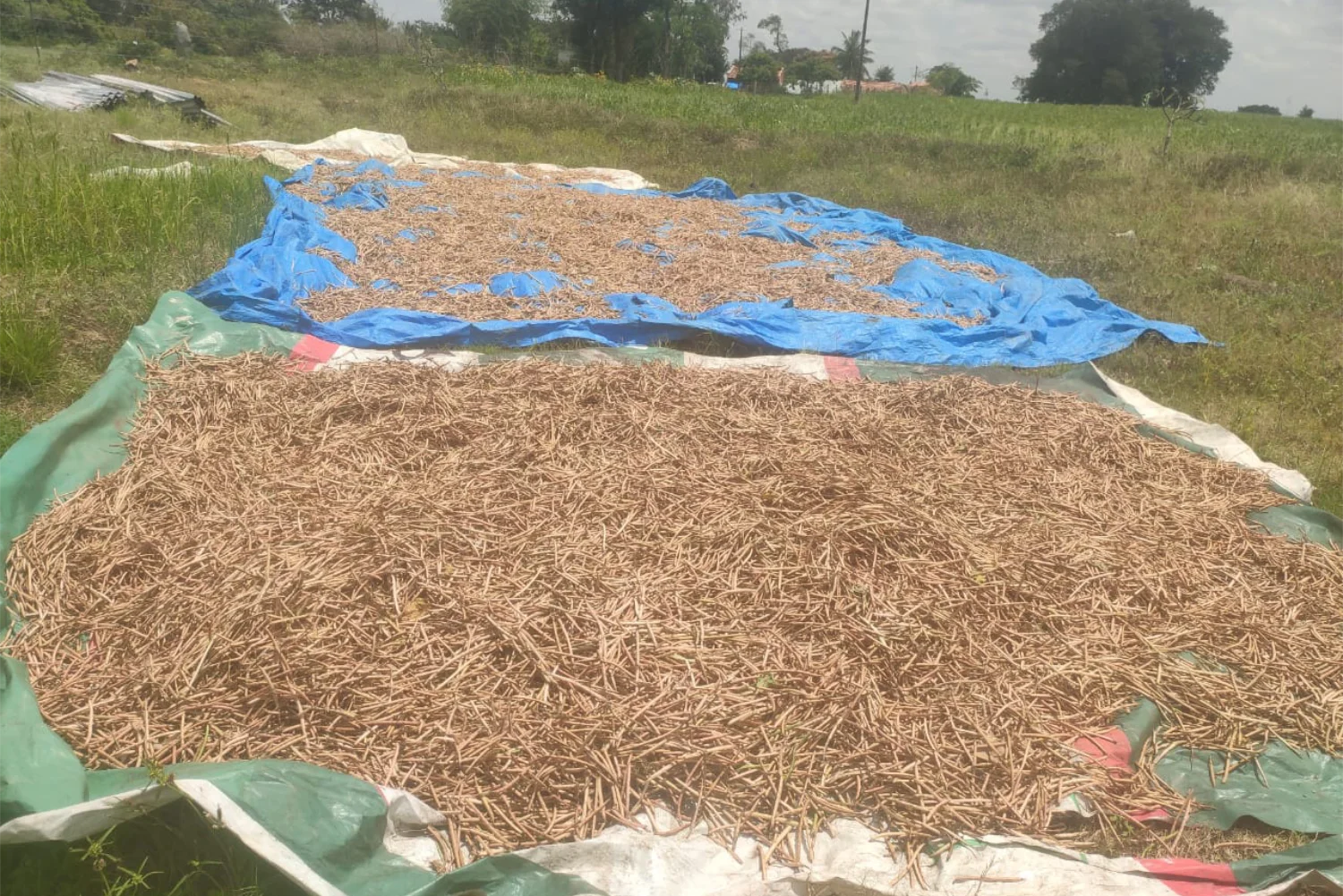
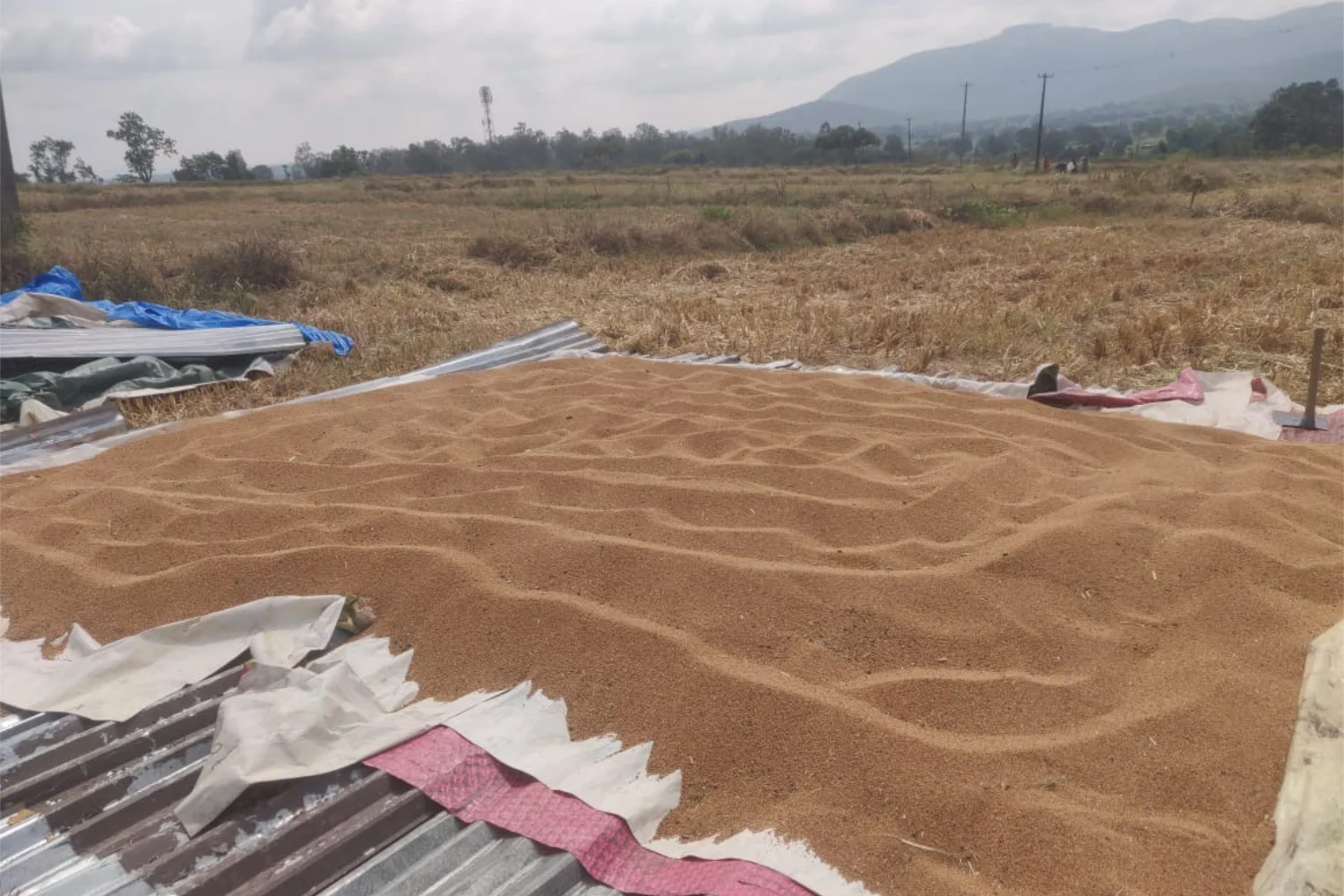
Previous image
Next image
Maloor
Maloor Farm (Kerala)
Farm area : 12 acres
Once a rubber plantation, it is now being transformed into a food forest and a farm. The transformation is an ongoing process where the soil which was degraded due to years of mono culture is being regenerated to its full life and vigour. To ensure sustainable food production we have planted and nurturing a diverse range of fruit-bearing saplings, edible plants...such as Mangosteen, Rambutan, Nutmeg, Coconut, Jackfruit, Lemon, Allspices, Noni, Star fruit, Lakshmanphal, Ramphal, Ralina, Chikoo, Java Plum, Garcia, Mosambi, Bilimbi plant, Bread fruit, Cocoa, Curry leaf, Banana, Yams, Papaya, and Tapioca. Leguminous plants like Drumstick, Erythrina indica and pulses are integrated in the design to improve soil nitrogen. Poultry, animal husbandry, aqua culture and api culture will be an integral part of the farm.
A wild patch will be maintained along the stream edge that encircles the farm to rejuvenate the natural ecosystem.
We hope our farm will serve as a model for transforming mono crop plantations across the globe, in hilly terrains with heavy rainfall, into biodiversity-rich food forests.
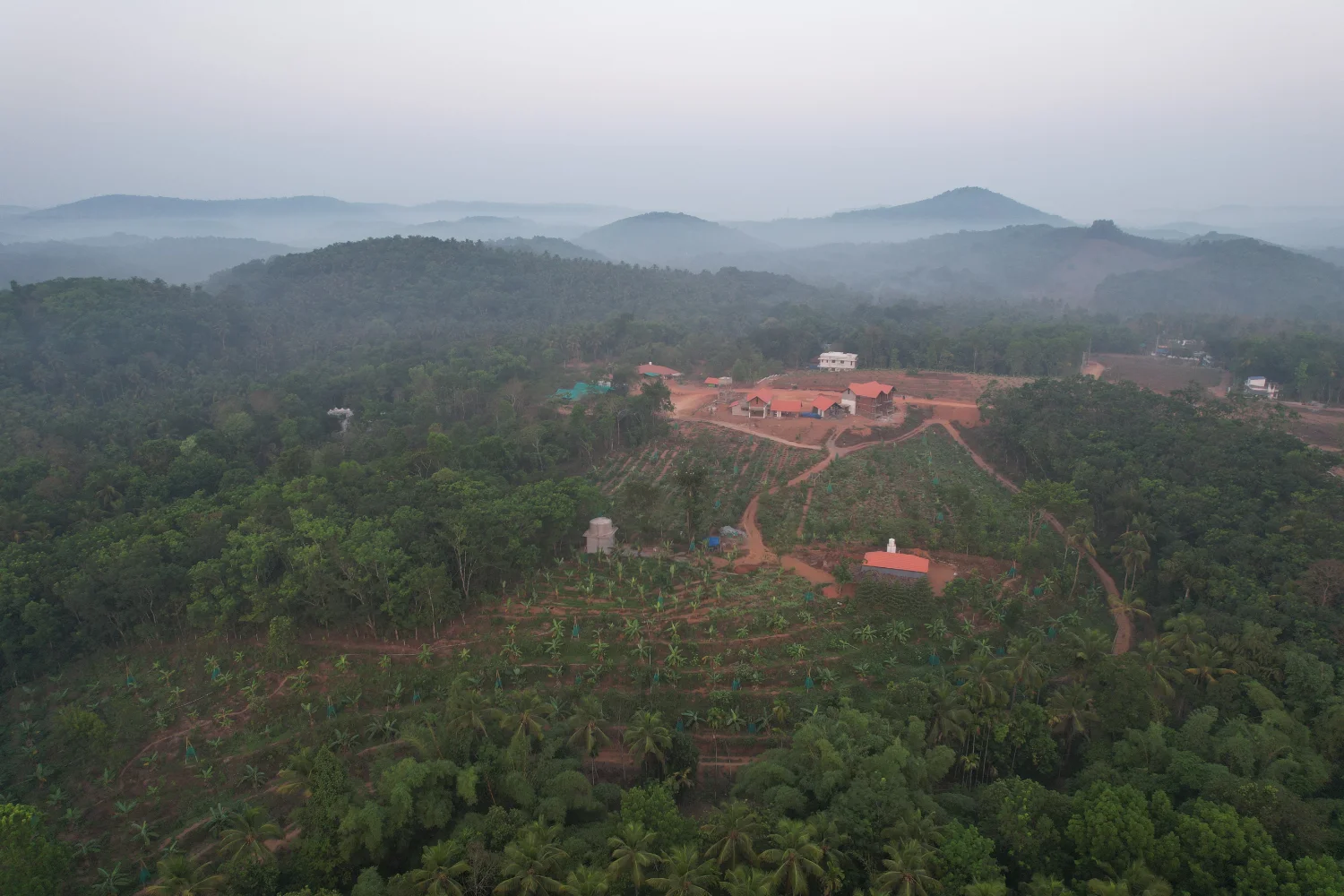
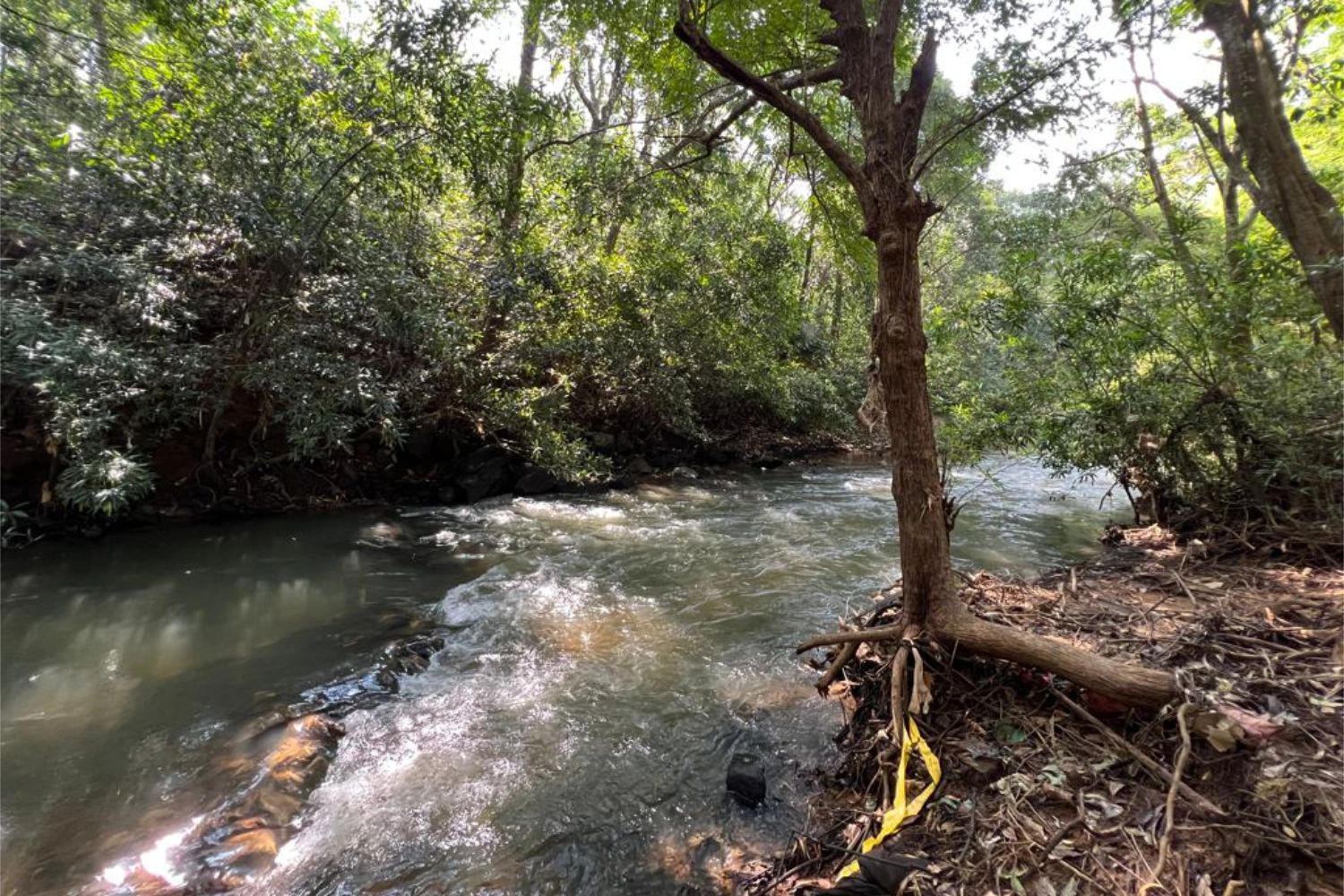
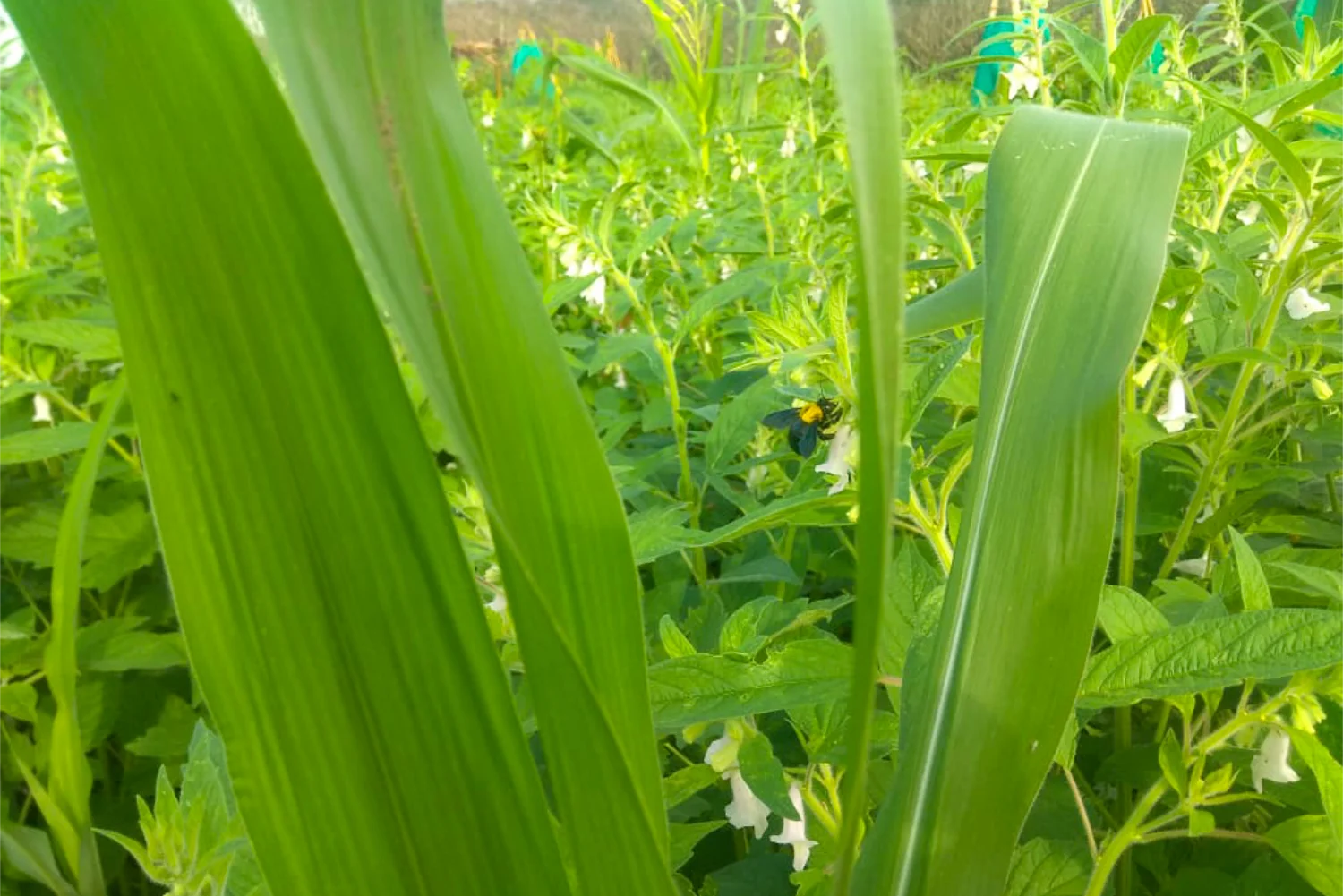
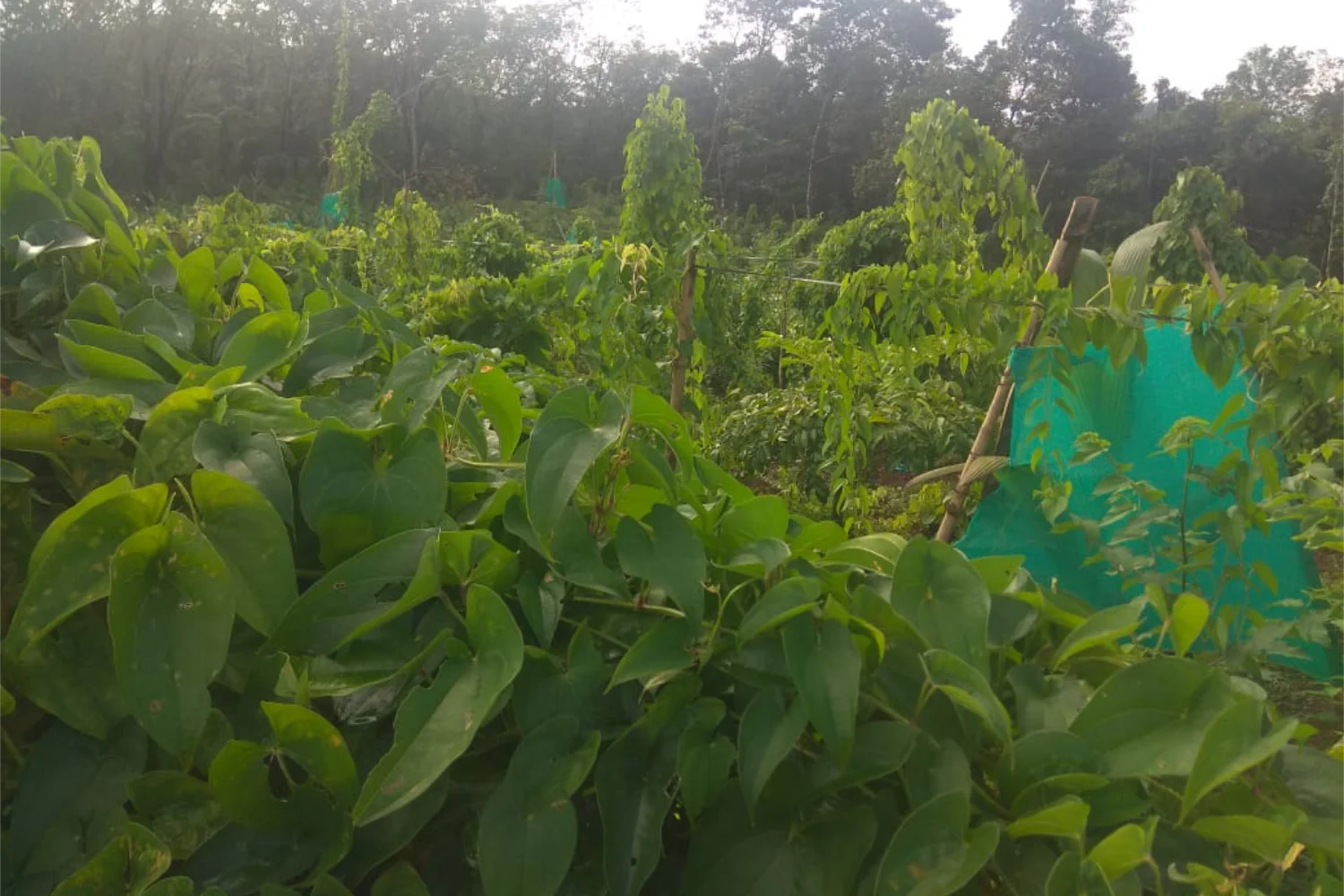
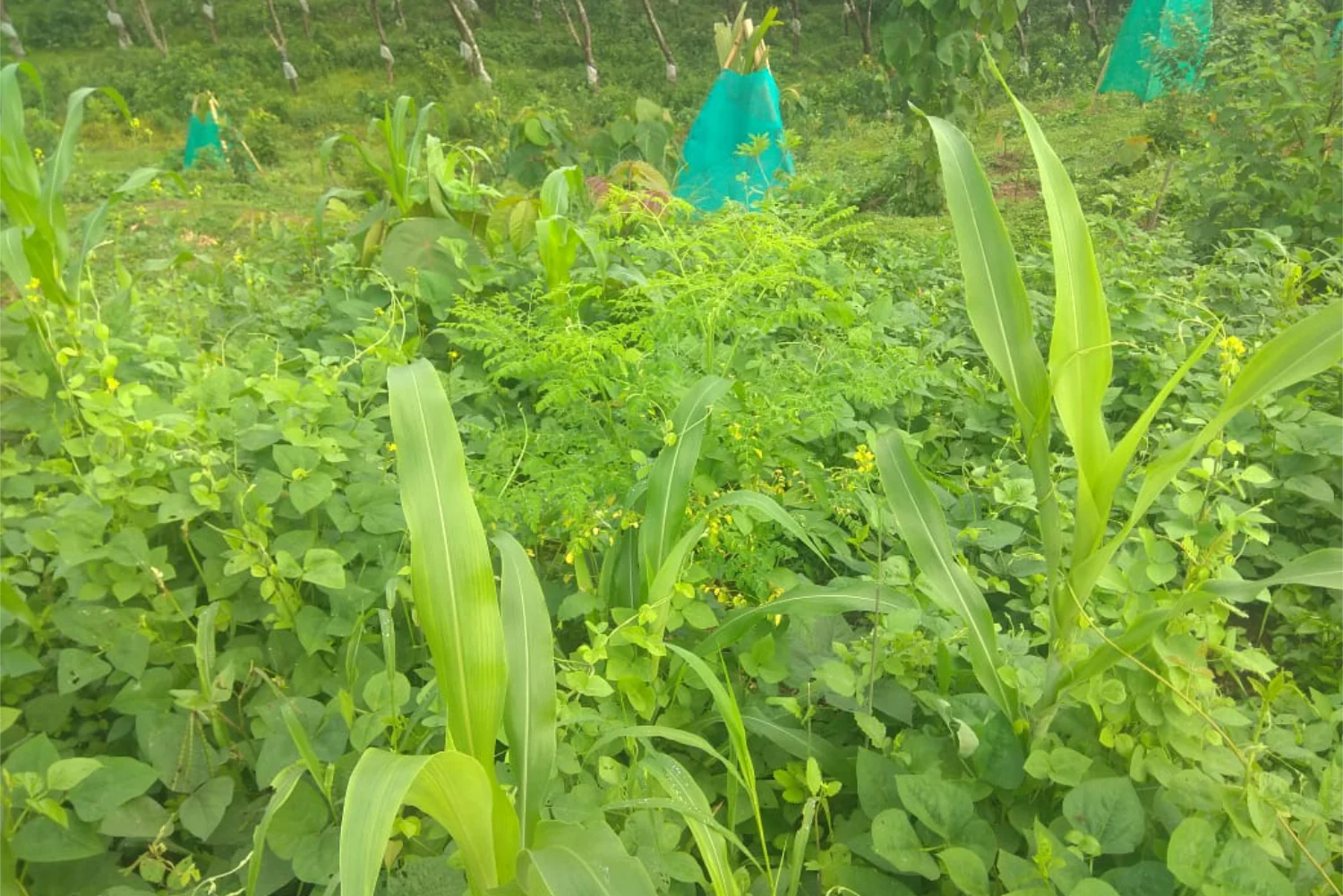
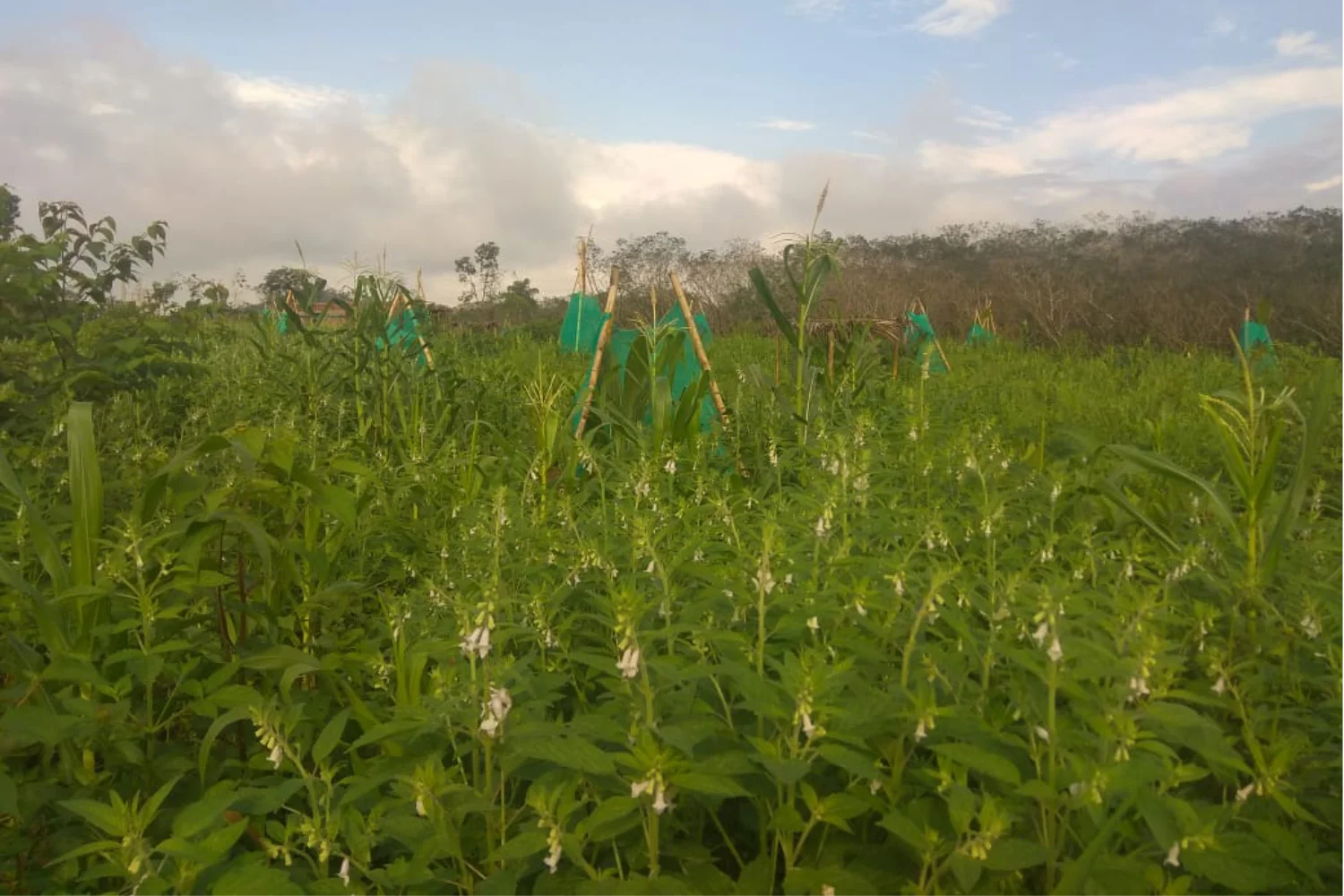
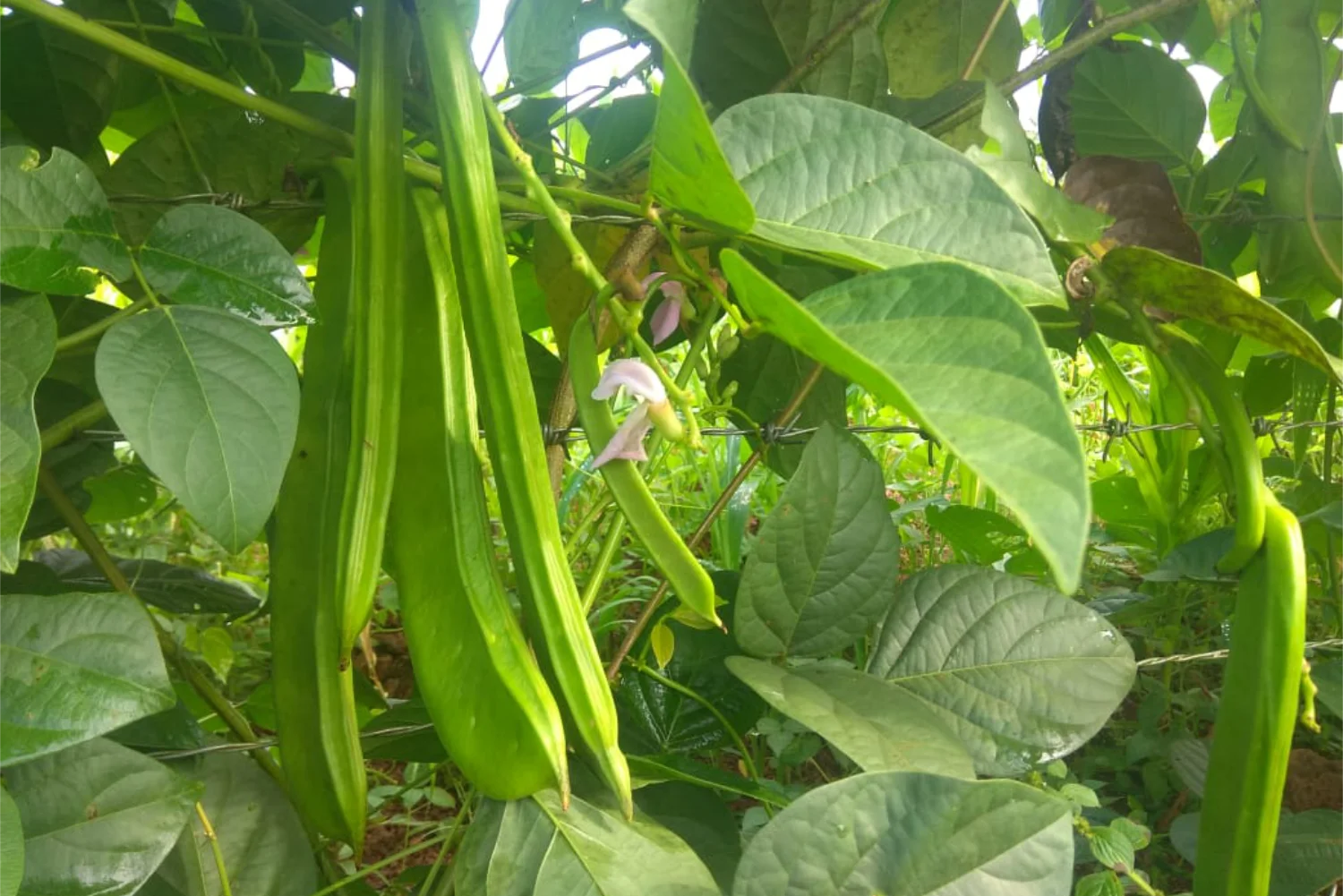
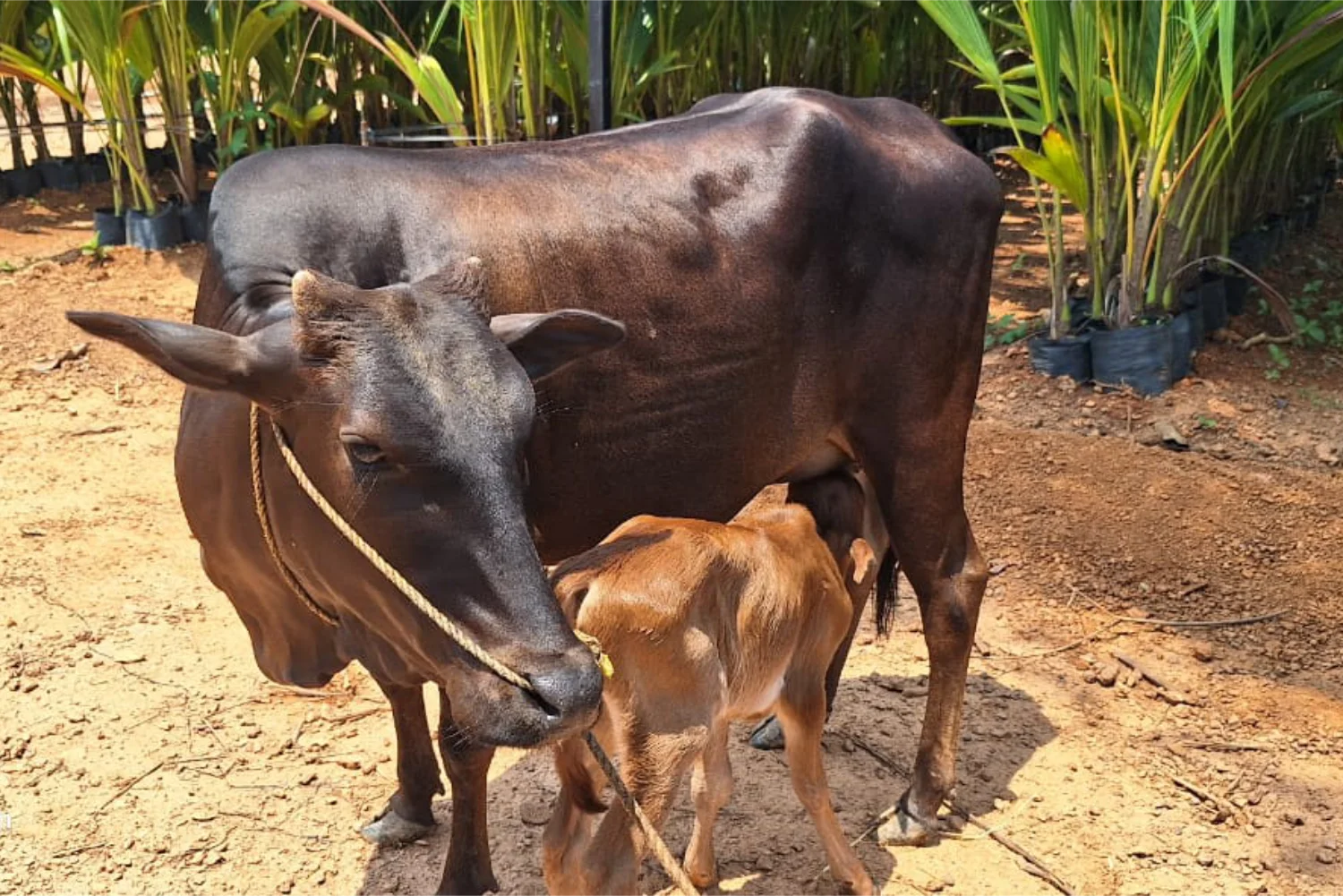
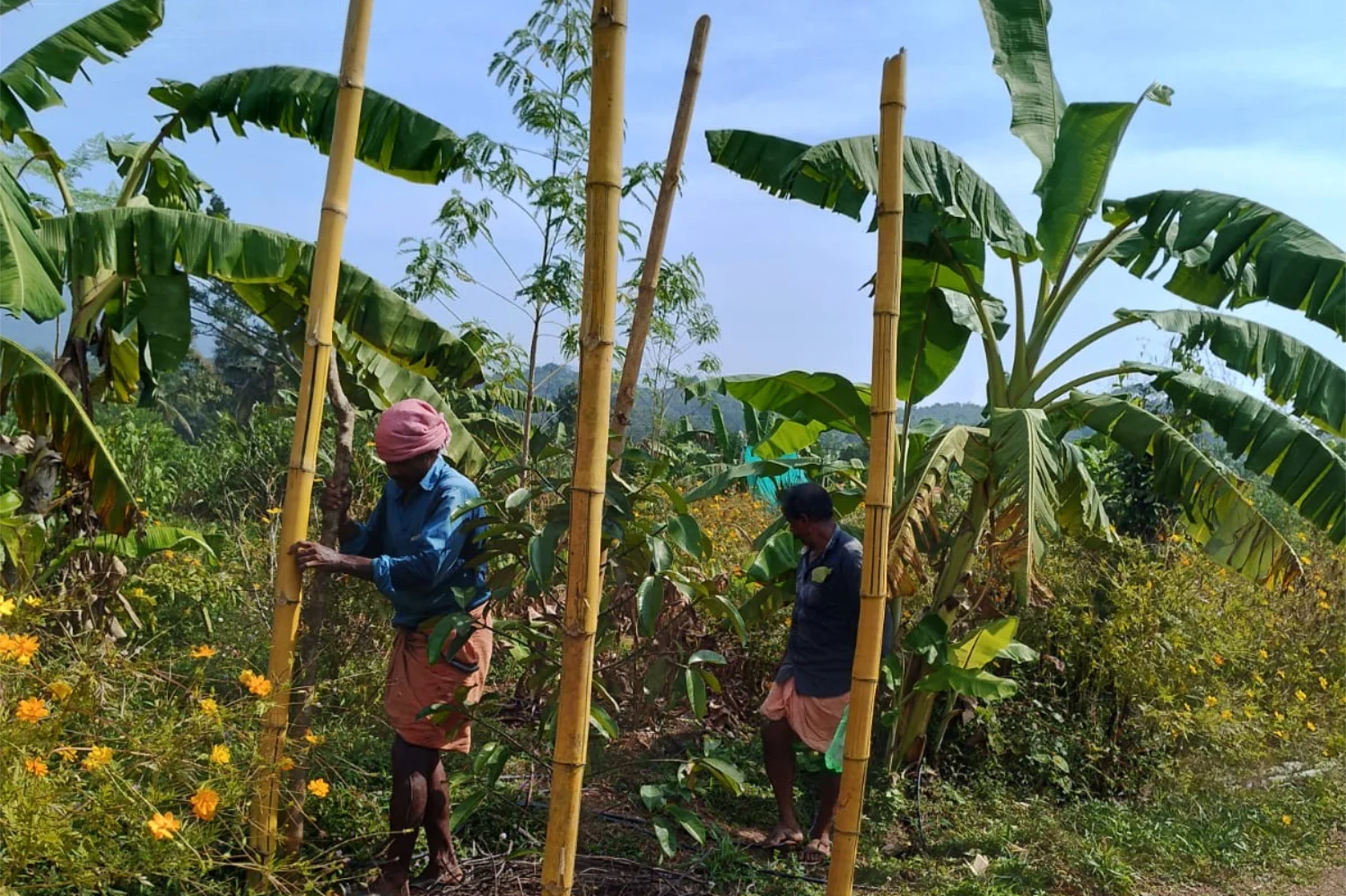


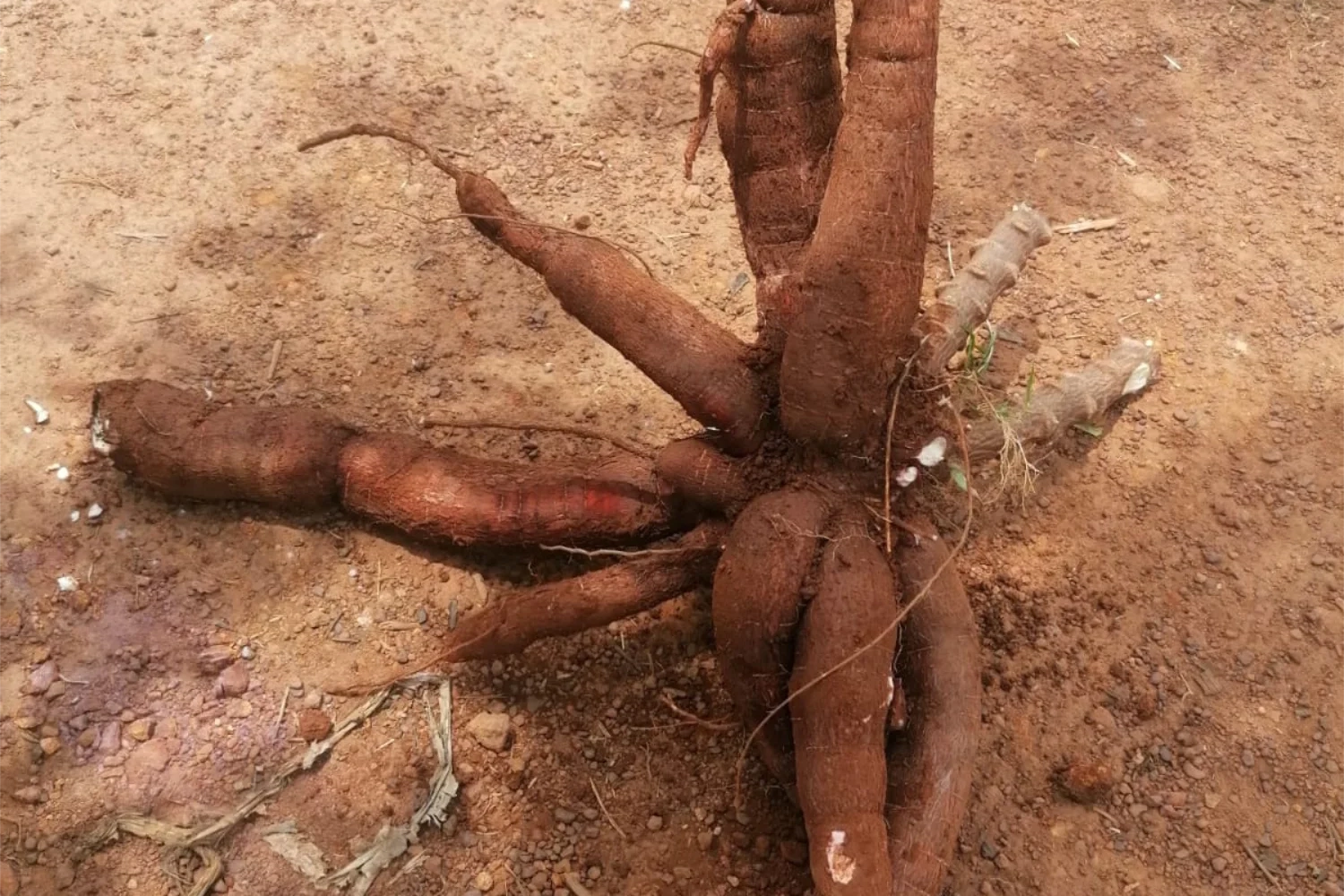


Previous image
Next image
Muthanga
Muthanga Farm (Kerala) - Petrichor's own rice bowl
Farm area : 20 acres
Growing traditional and native varieties of rice in the tribal hamlet of Kumizhi, in Wayanad, ridden with man-animal conflict was a challenge. We embraced the challenge to create a rice bowl of our own. We transplanted as many as eight native varieties of paddy – Adukkan, Chenthady, Kunjootty, Gandhakasala, Jeerakasala, Mullan Khaima, Chennellu, and Chomala in the ten-acre field. We harvested our first paddy and others too with the tribal men and women of Kumizhi reviving traditional practices, bringing alive native varieties and reviving a whole new culinary experience. We aim to bring many more native varieties of paddy into the ambit of cultivation. The effort paved the path for many neighbouring farmers to join hands with us.
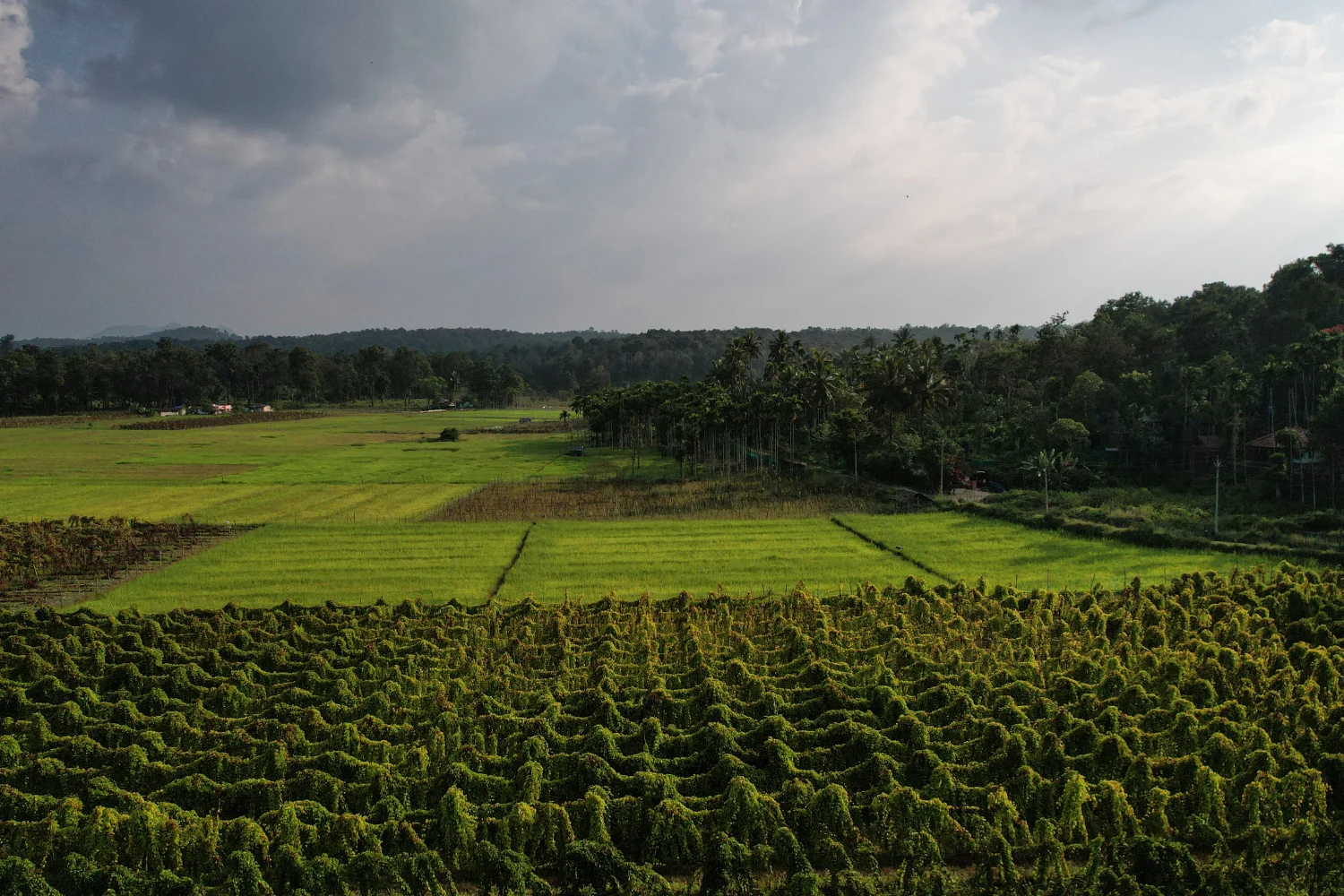
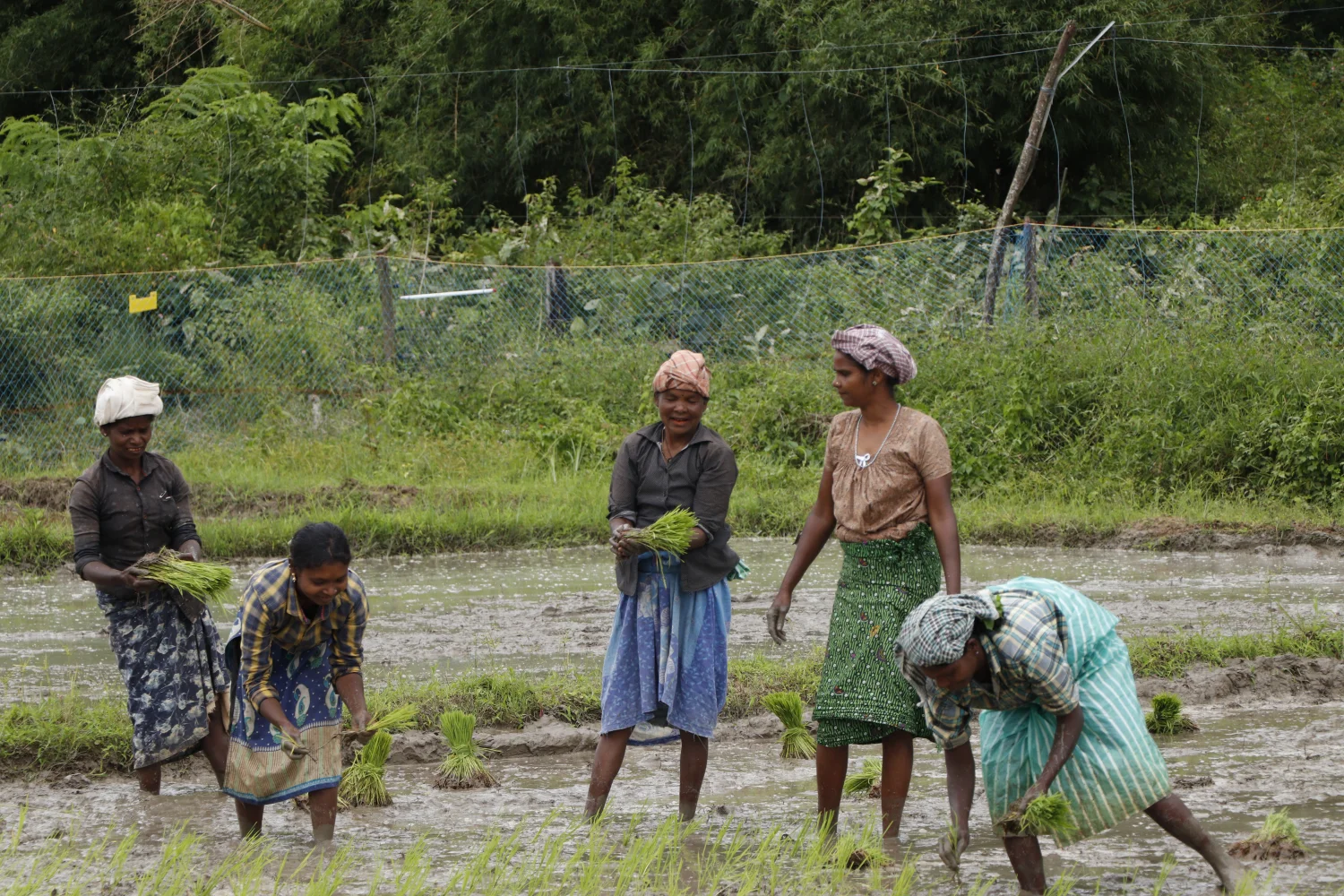
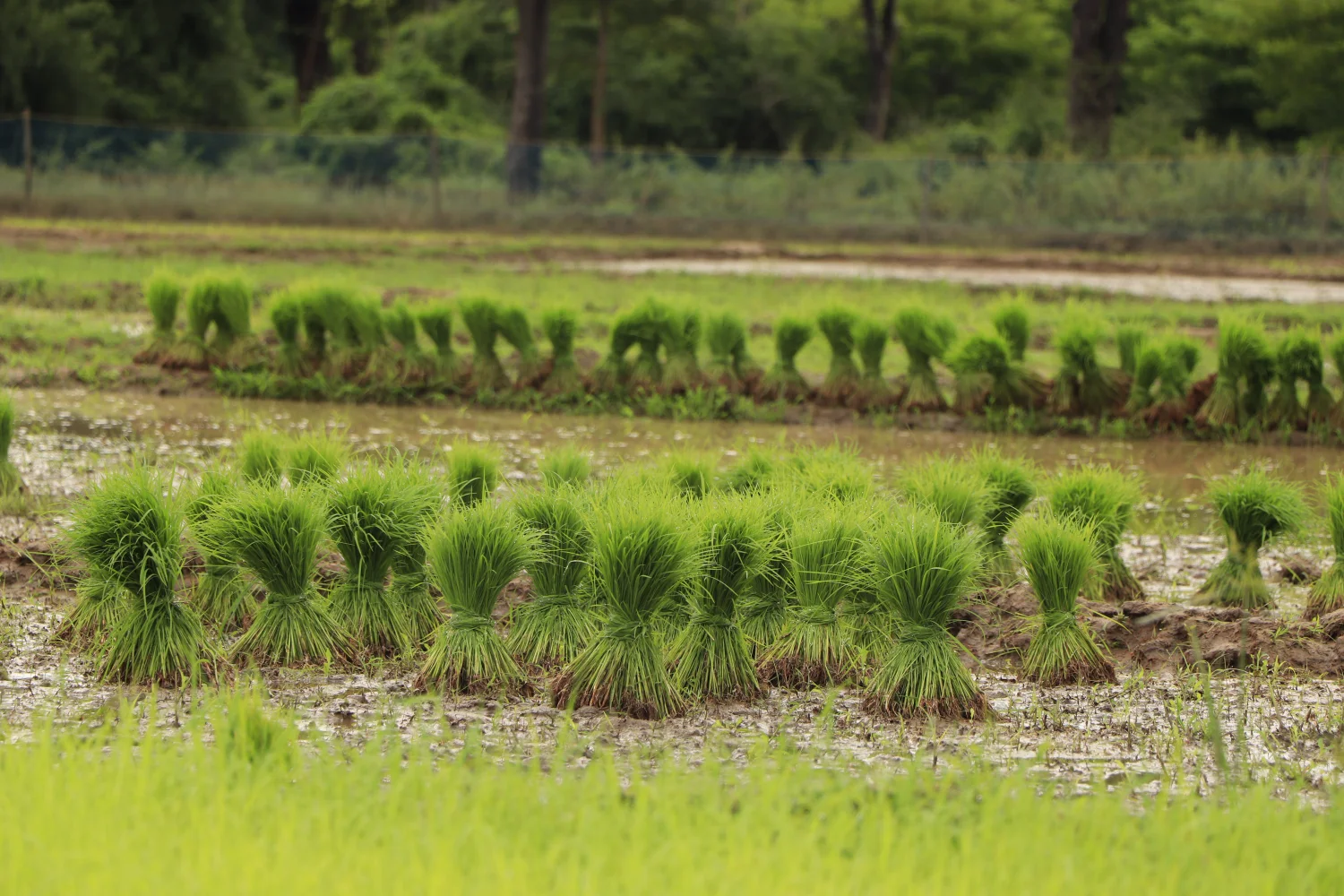
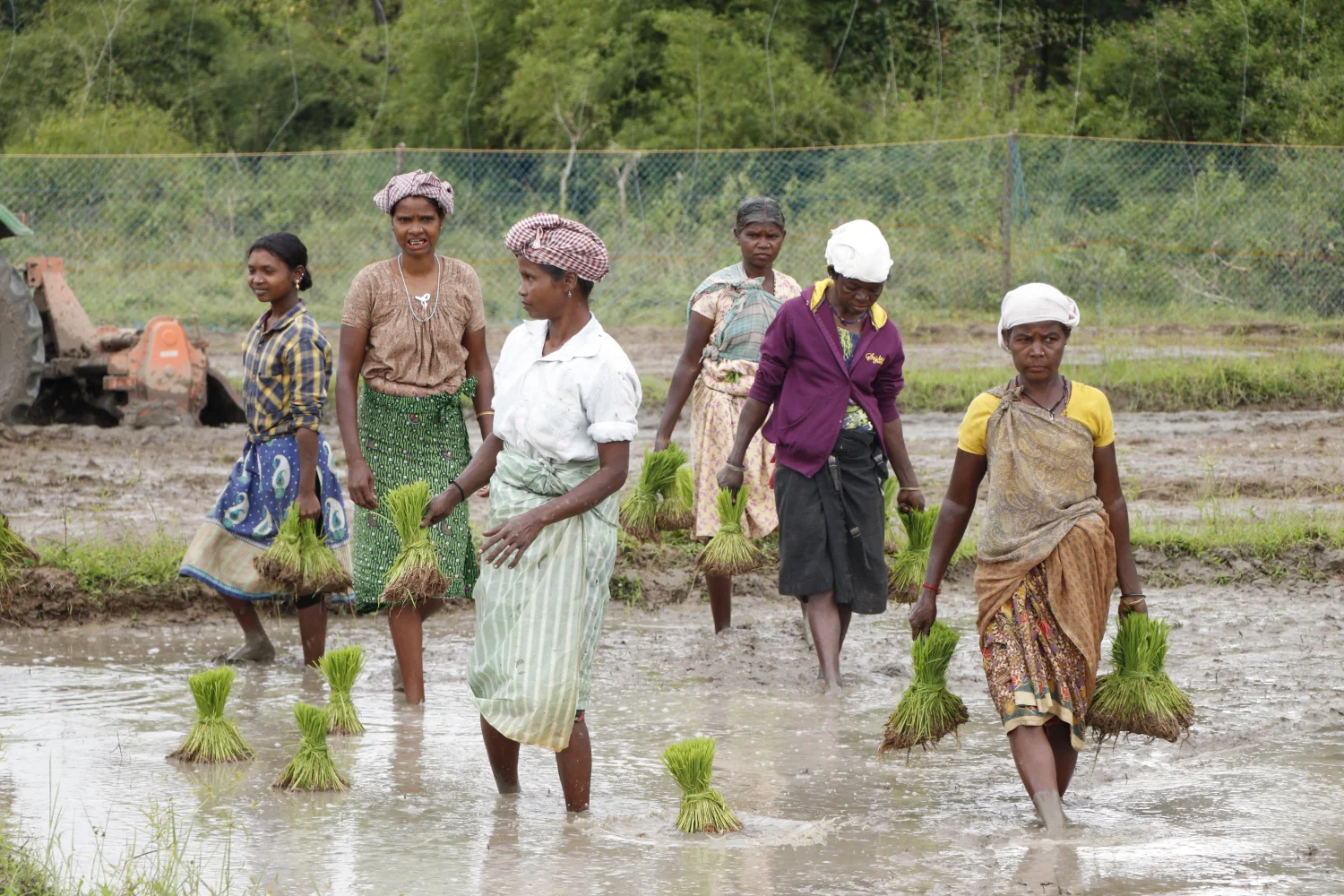
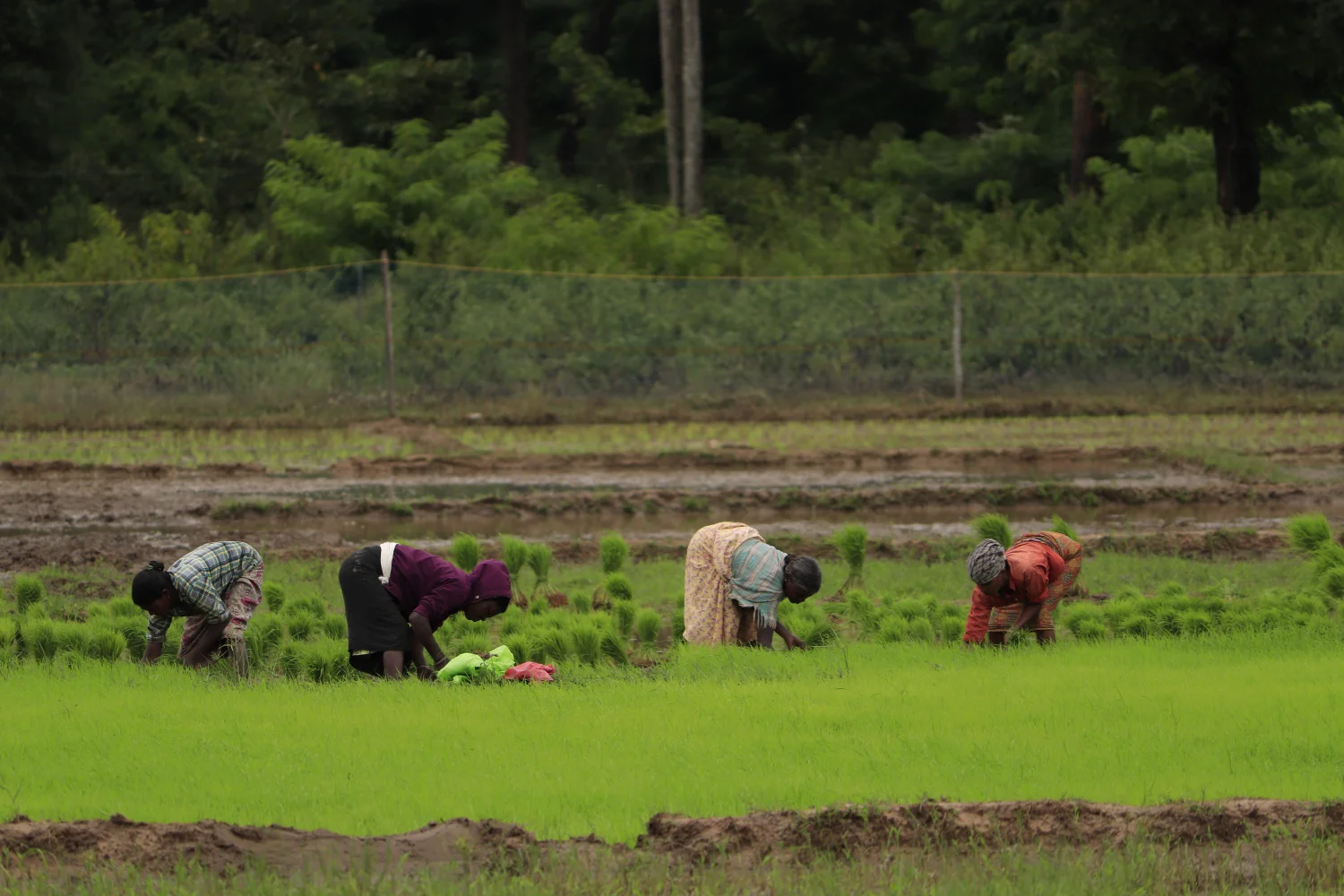
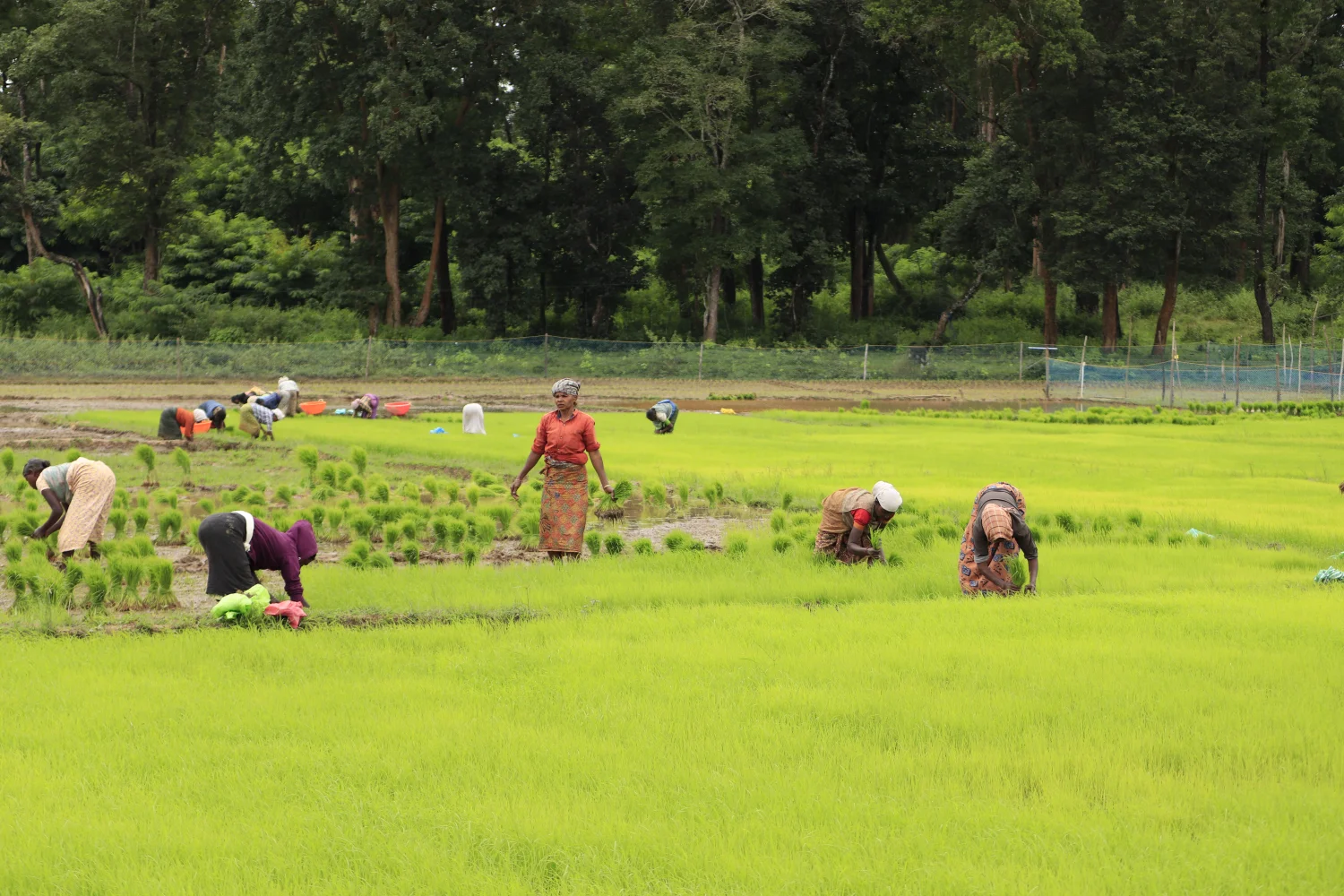
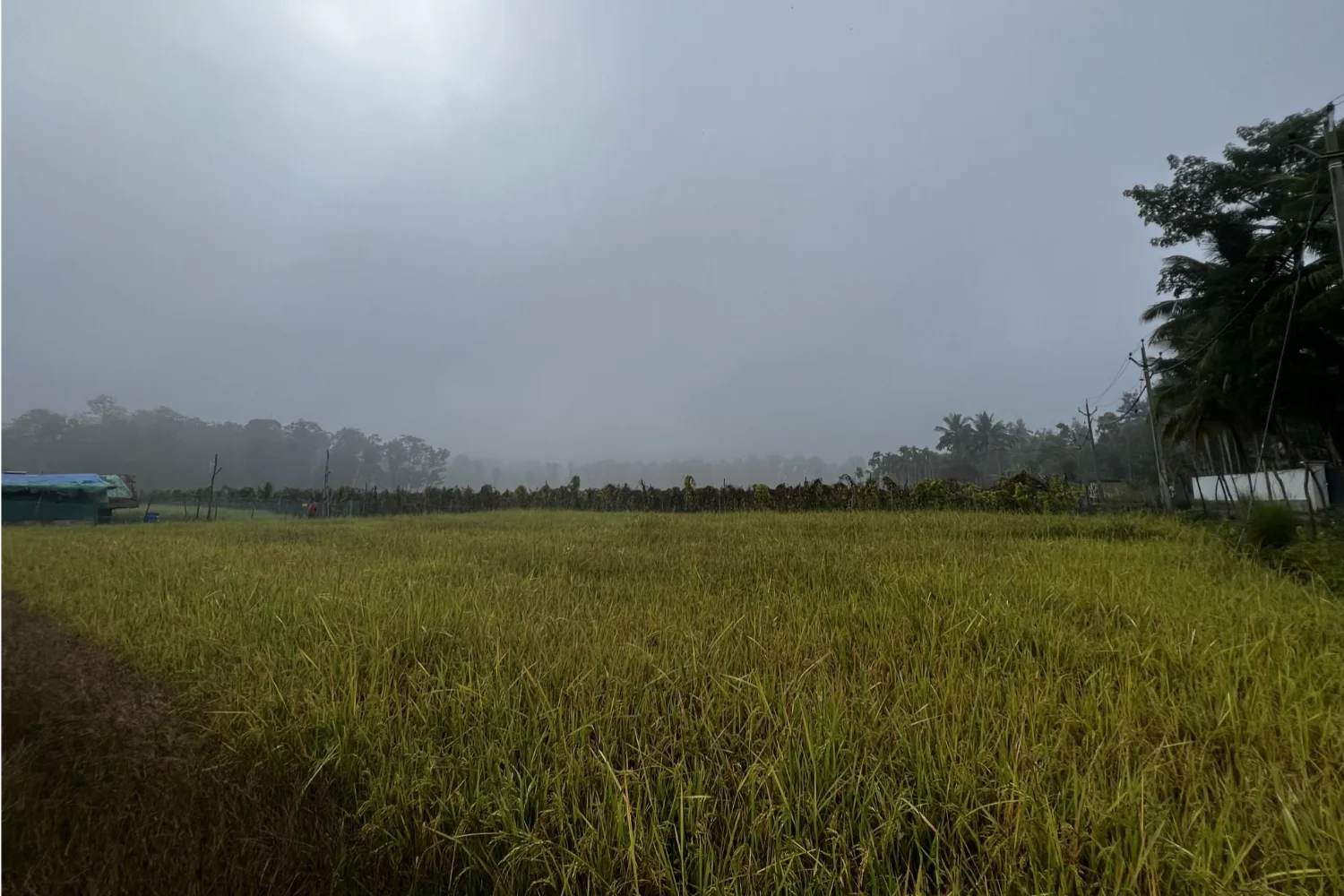
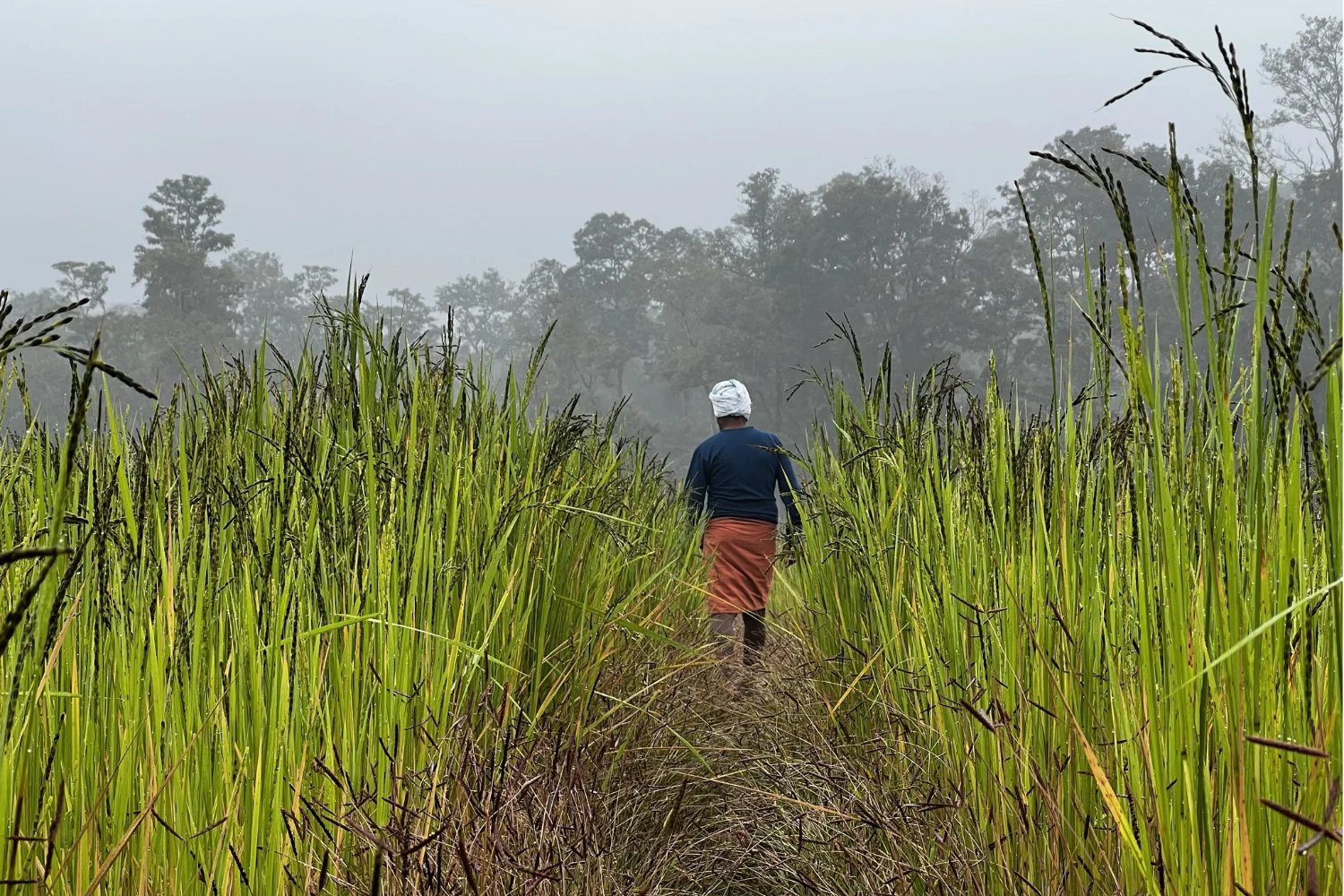
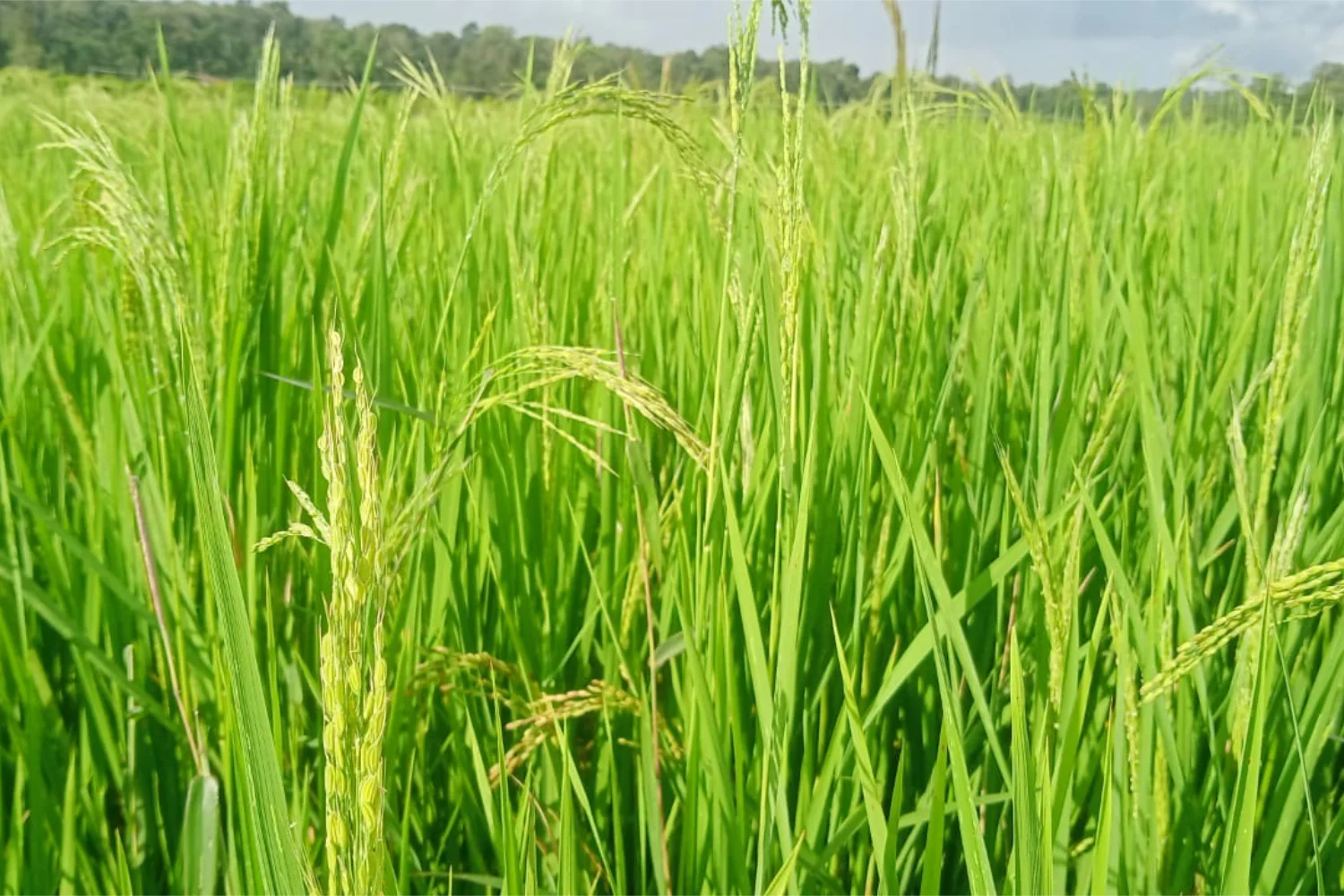
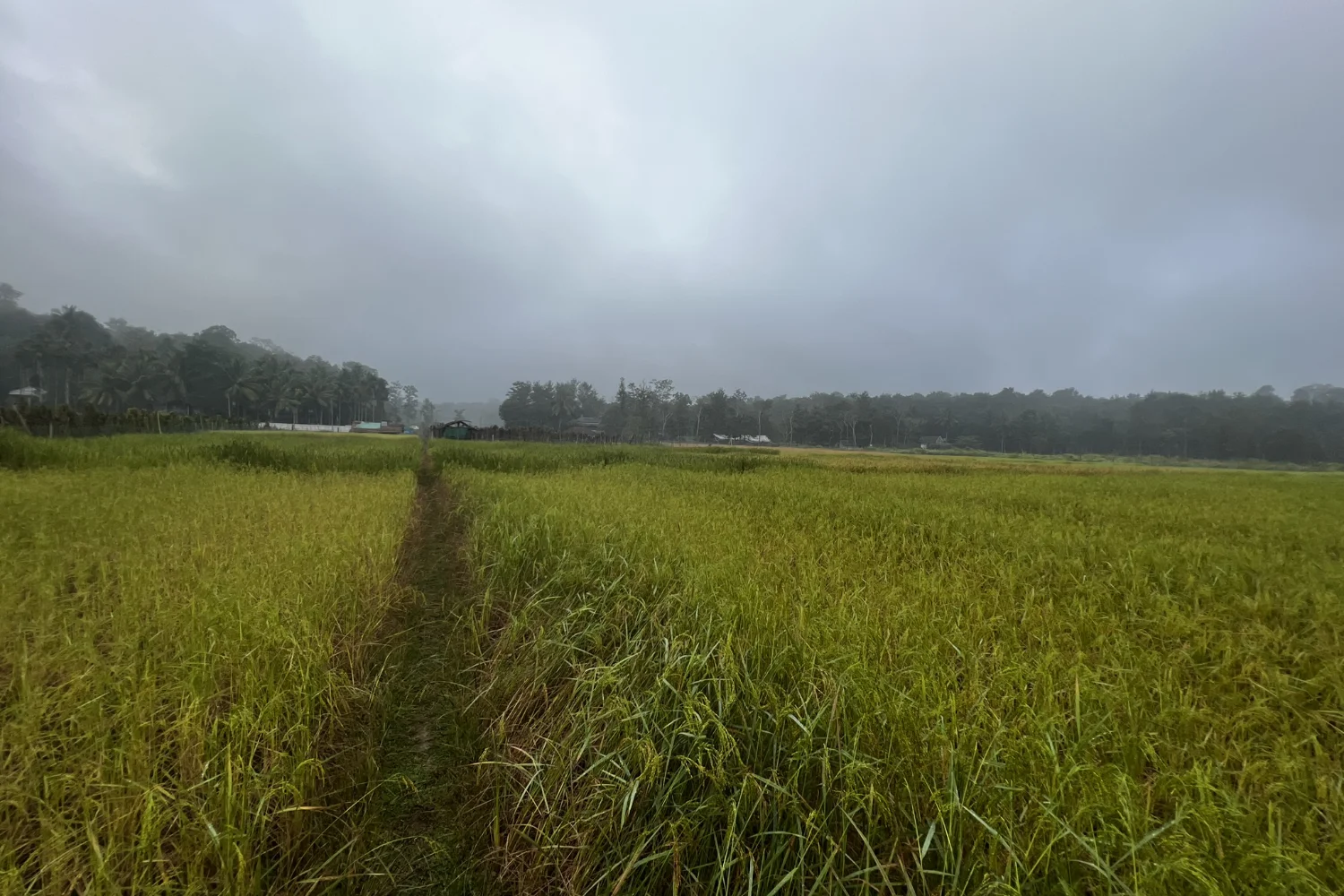


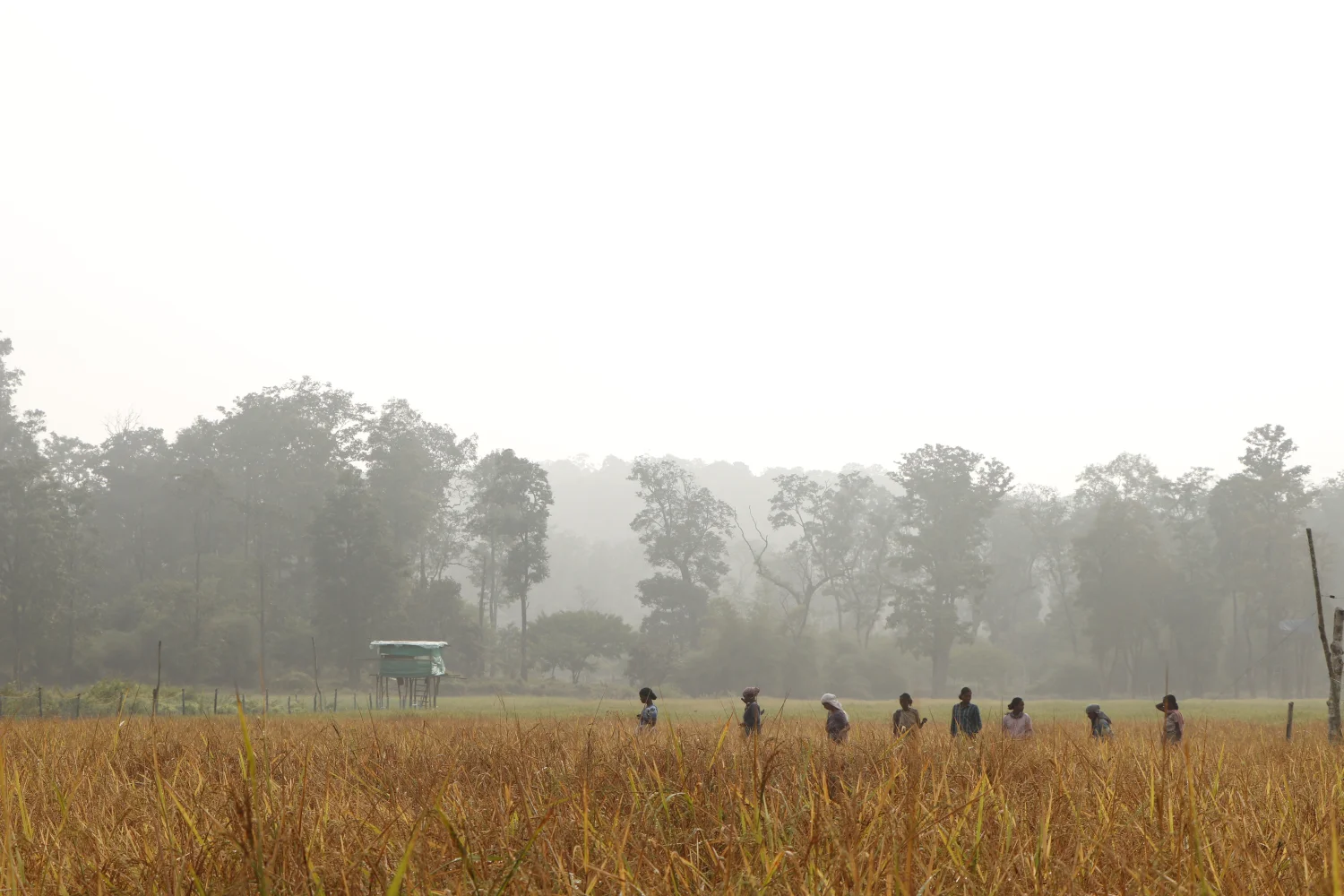
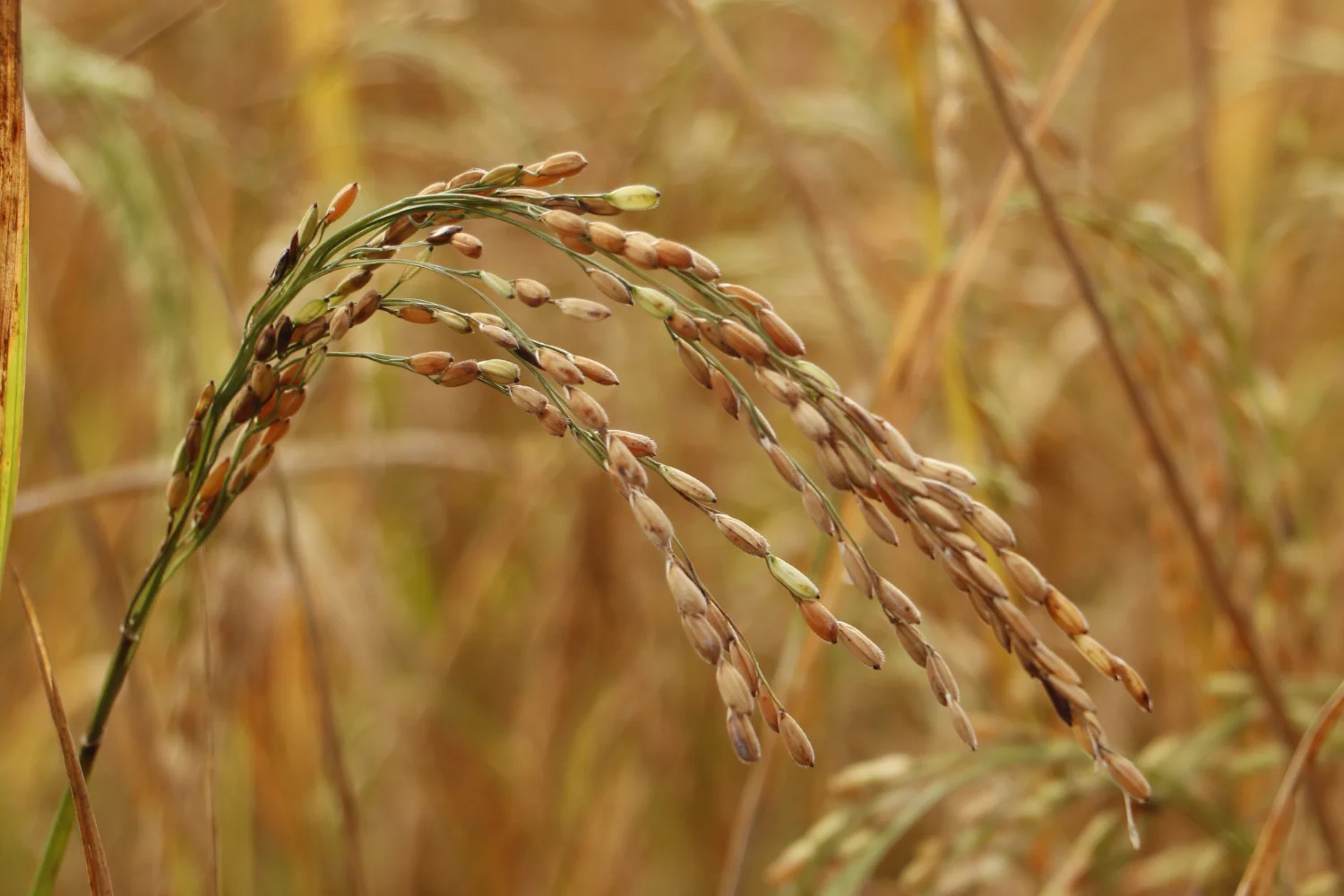
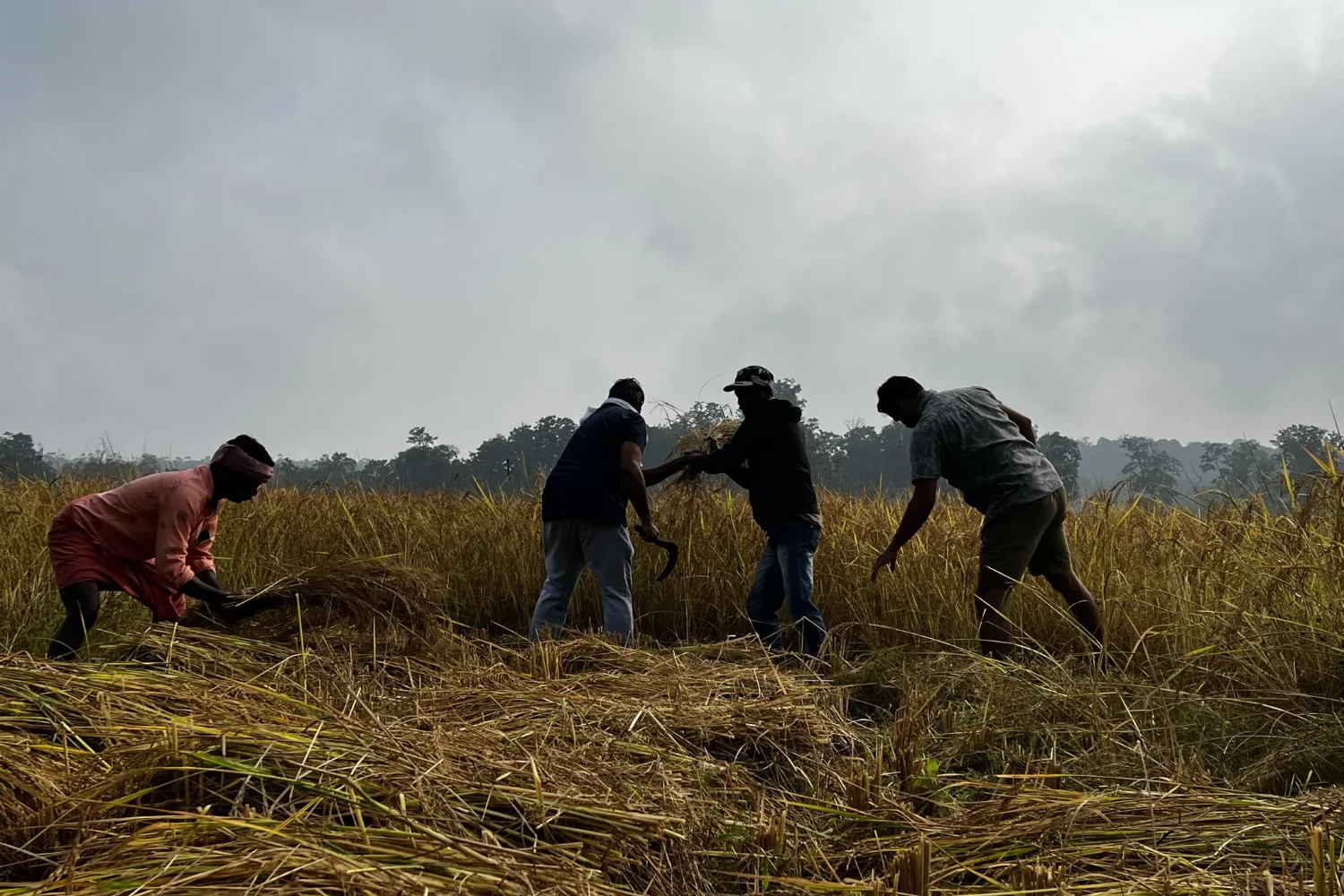
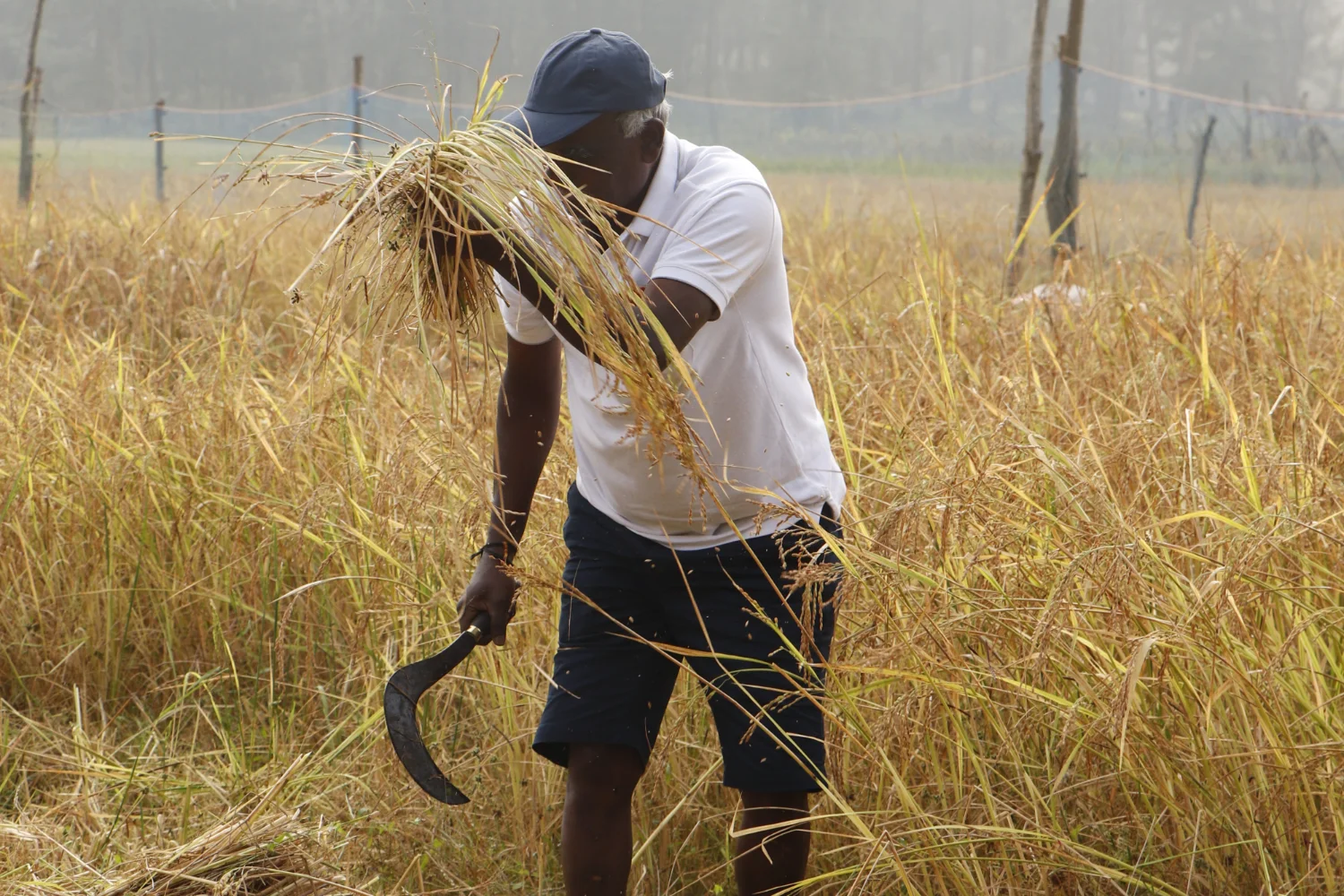
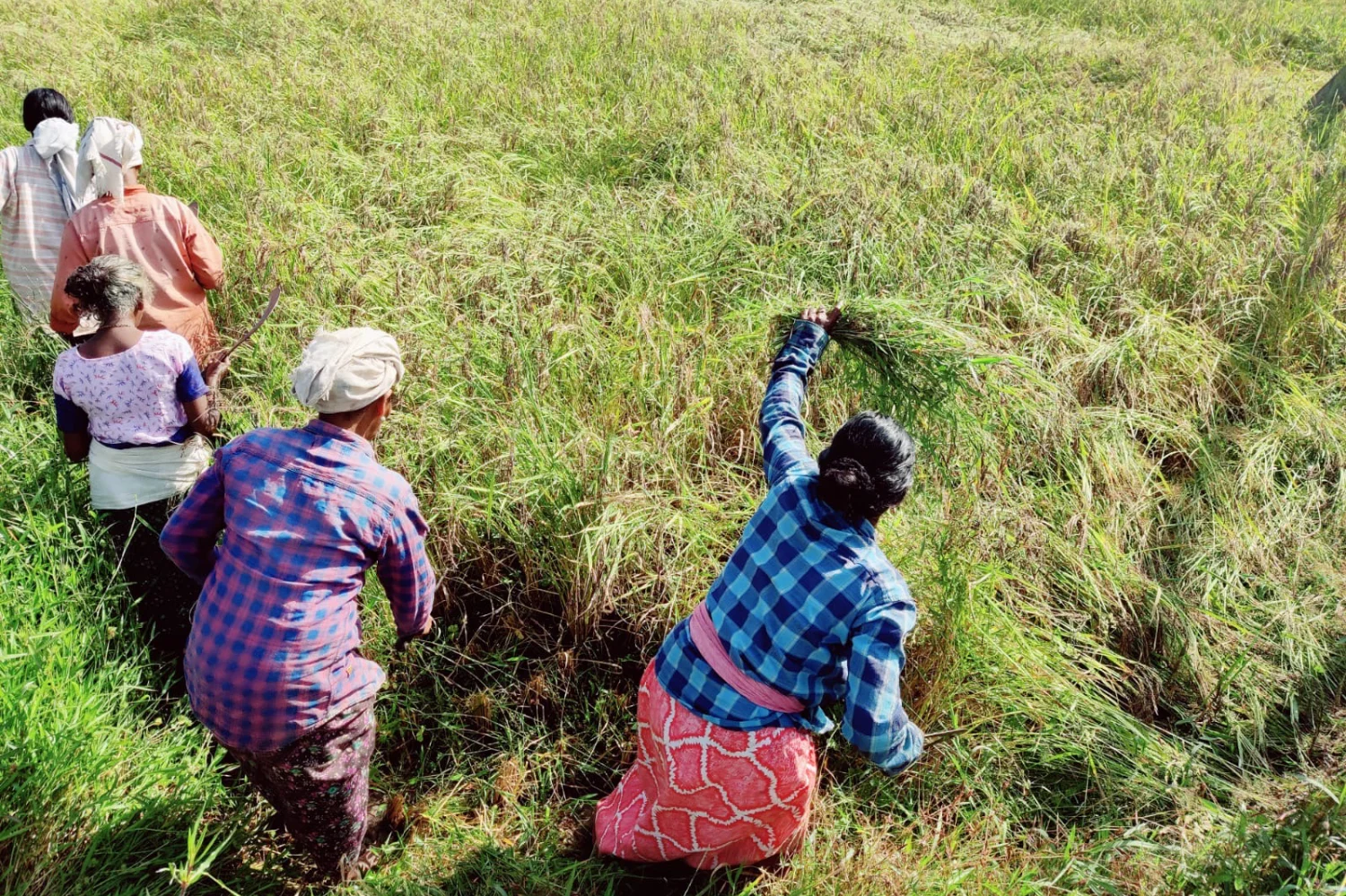
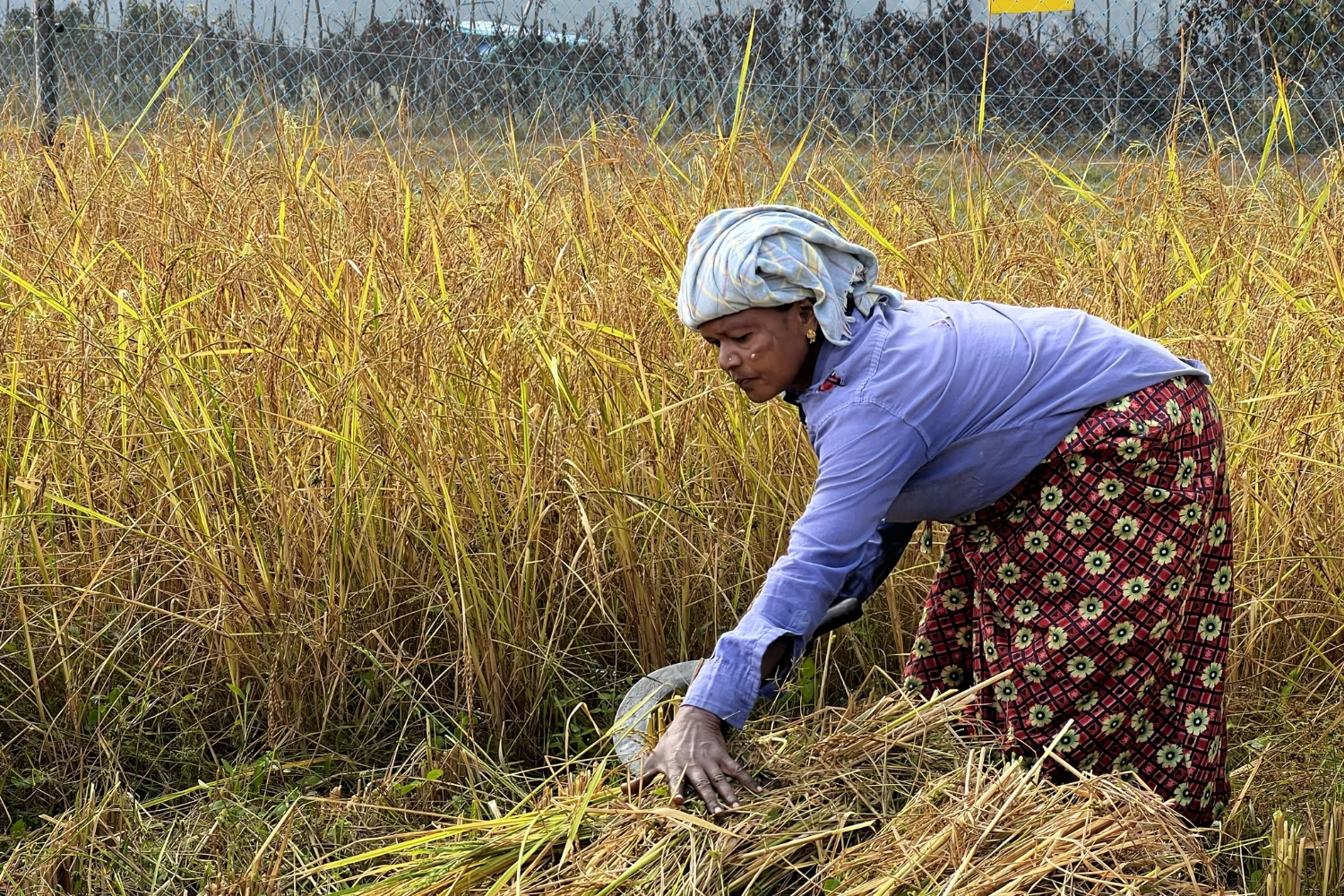
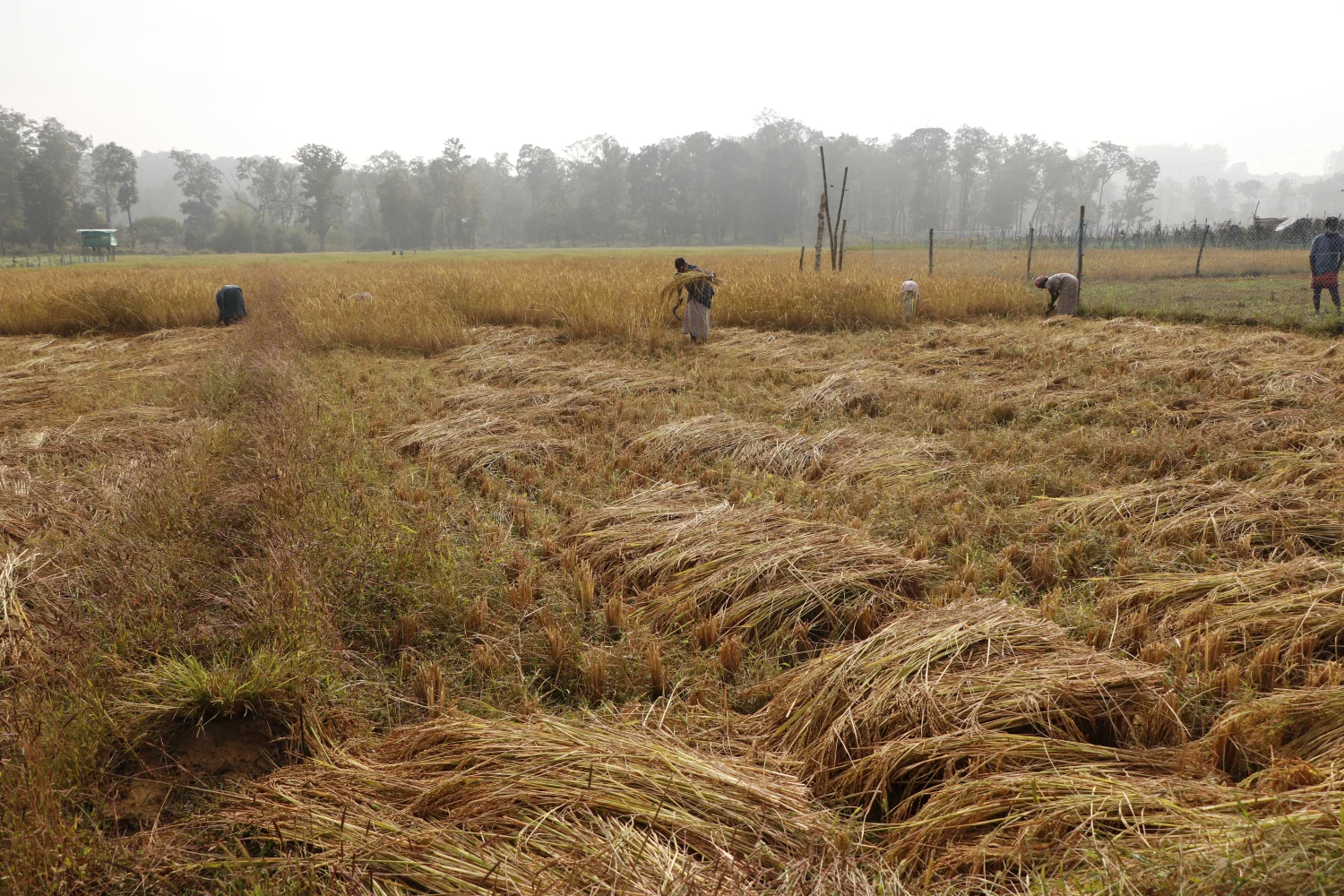
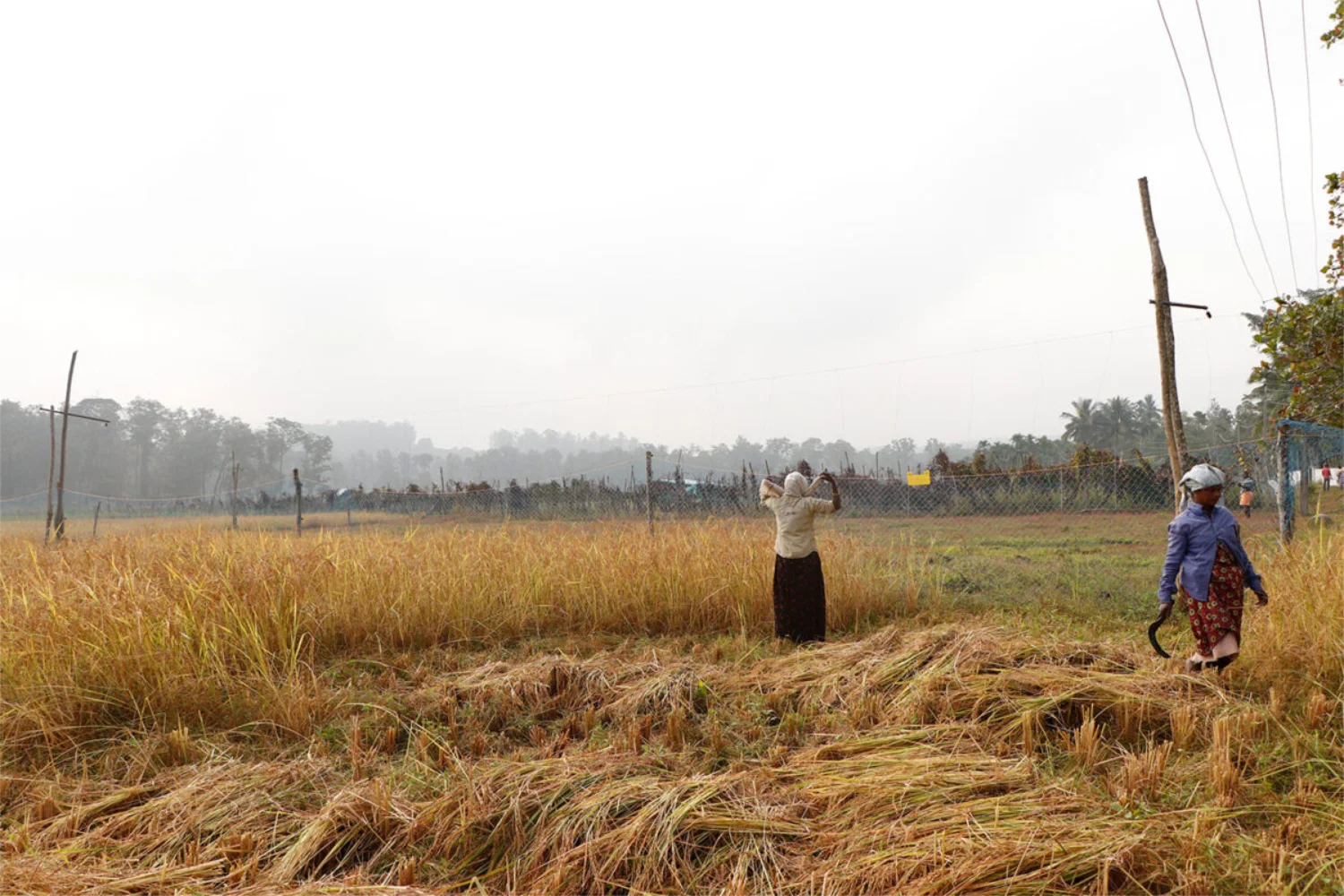
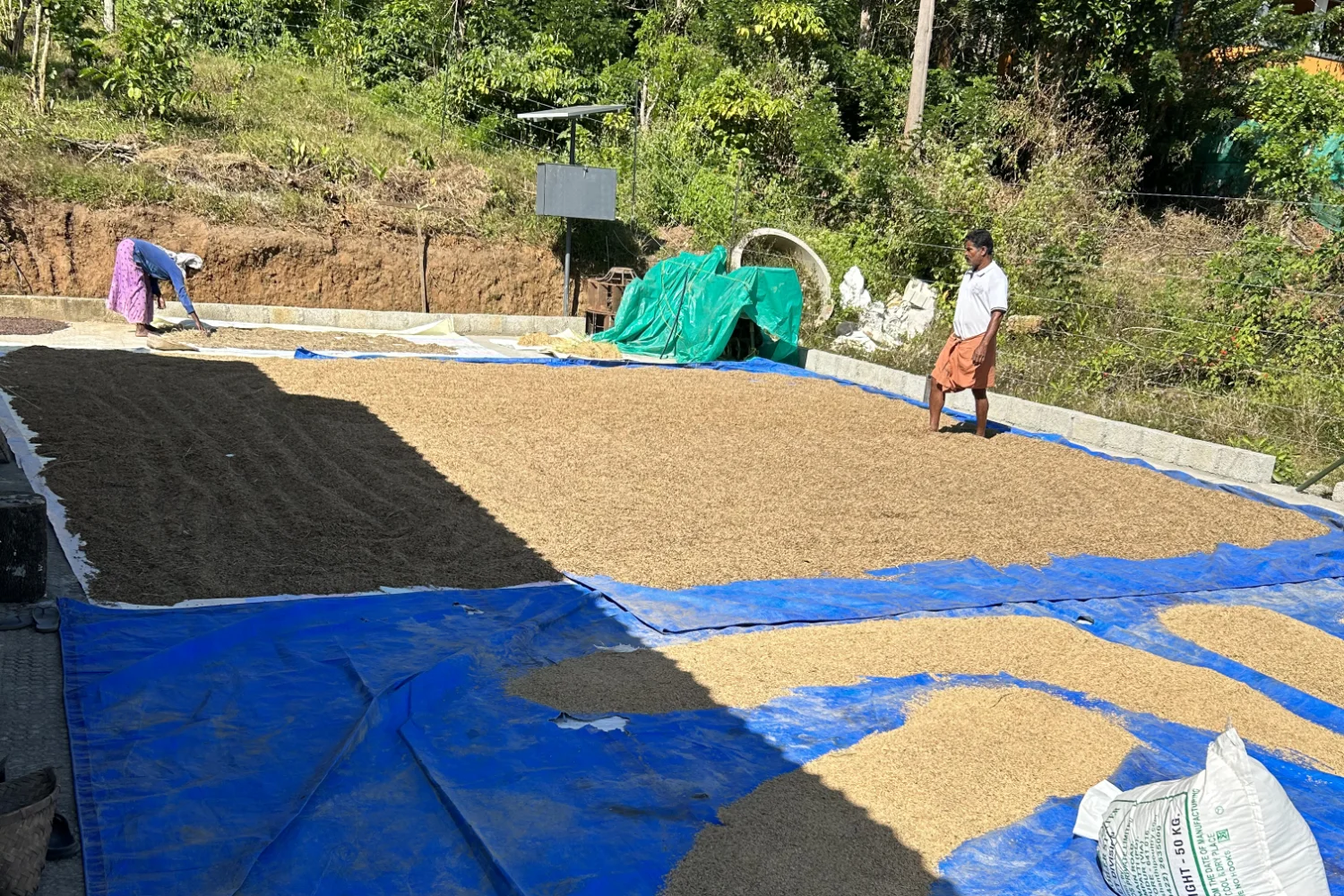
Previous image
Next image
Our Farms
Sulivara
Doddabele
Hunnigere
Maddur
Gundlupete
Maloor
Muthanga
Sulivara
Sulivara Farm (Karnataka)
Farm area : 04 acres
India is the largest producer of rice in the world, after China. Historically known for growing more than a lakh varieties of rice, today India is left with nearly 50 varieties, with many on the verge of extinction. To this day rice continues to be the staple food for more than 50 percent of the population in India.
Thus, in a bid to revive the traditional varieties of paddy, and thereby rejuvenate the soil in the process, we transplanted two varieties of paddy in two of the four acres in Sulivara, near Doddaladamara, Bangalore rural.
We cultivated Kakisala (black rice) and Mallikuruva, both indigenous varieties, in one acre each in August 2022. In four months we harvested paddy, in December, oblivious to the heavy rains that lashed and tried to play a spoilsport. We have also grown sugarcane.











Previous image
Next image
Doddabele
Doddabele Farm (Karnataka)
Farm area : 2.5 acres
A farm land that was once arid with a few coconut trees, is today a land where a variety of vegetables are grown and greens are harvested fresh every day. Liquid manure and compost prepared at the farm, scientific use of drip irrigation, mulching to cut evaporation loss from the soil have slowly transformed the once infertile soil into live and humus-rich soil. Poultry, ducks and fishes transform the land into an integrated farm. Guava, banana, drumstick, curry leaves and colocasia too are grown. We also produce our own native seeds at the farm. The white picket fence, bougainvillea with its myriad-coloured soft flowers and a host of flowering trees make Doddabele farm, a picture-perfect postcard image.













Previous image
Next image
Hunnigere
Hunnigere Farm (Karnataka)
Farm area : 04 acres
Hunnigere farm in Bangalore rural, nearer to the city, was a vegetable patch before. Intensive chemical farming had degraded the soil. To transform the soil into a live one, we are using compost enriched with beneficial microbes, and mulching to retain moisture in the soil. With the soil coming alive, we are growing as many as 13 vegetables from tomatoes, brinjal, ginger, to broccoli, chillies on three acres. On less than an acre we are engaged in seed production. While papaya and banana are grown in the border, Agase is grown for biomass.


























Previous image
Next image
Maddur
Maddur Farm (Karnataka)
Farm area : 20 acres
The Maddur farm is about 20 acres in an arid region. Rampant soil erosion had left the land degraded. Reckless drilling of the borewells, a phenomenon widespread across the state and the country, depleted the groundwater table in the region. However, coconut and mango trees formed a part of the farm. The initial effort, thus, was to control soil erosion with a series of contour bunds and trenches and that produced results. We completed one cycle of vegetables as inter crop between coconuts and mangoes. Also various gourds such as Ridge, Ash, Bottle, Bitter, and Sponge, squashes such as pumpkin, and water melons are grown along the way. A portion of the land has been allocated to grow rain-fed crops, comprising millets and pluses such as Pigeon pea, Green gram, Ground nut, Cow pea, Castor, Mustard, Niger, Ragi, Sesame, Field beans... We have sheep, goats other than poultry. Composting, enriched microbial application and mulching are practised to accelerate the regeneration of the soil. Animal grazing in rain-fed areas help soil regeneration, as their droppings meet the nutrients requirement of the soil.














Previous image
Next image
Gundlupete
Gundlupete Farm (Karnataka)
Farm area : 17 acres
Cereals and pulses are largely grown in this belt which falls in the rain shadow region of the Western Ghats. Taking the process of regenerating the soil slow and steady, we will grow rain-fed crops while taking care of the soil, nurturing it through composting, enriched microbes, mulching… Agase, drumstick and curry leaves are planted along the bunds for biomass and soil enrichment. Castor, niger, mustard etc will be planted as border crops. A portion of the land has been set aside for the fodder area, as plan is afoot to rear native varieties of cattle. Thus, an integrated farm will accelerate the regeneration processes of the degraded land.












Previous image
Next image
Maloor
Maloor Farm (Kerala)
Farm area : 12 acres
Once a rubber plantation, it is now being transformed into a food forest and a farm. The transformation is an ongoing process where the soil which was degraded due to years of mono culture is being regenerated to its full life and vigour. To ensure sustainable food production we have planted and nurturing a diverse range of fruit-bearing saplings, edible plants...such as Mangosteen, Rambutan, Nutmeg, Coconut, Jackfruit, Lemon, Allspices, Noni, Star fruit, Lakshmanphal, Ramphal, Ralina, Chikoo, Java Plum, Garcia, Mosambi, Bilimbi plant, Bread fruit, Cocoa, Curry leaf, Banana, Yams, Papaya, and Tapioca. Leguminous plants like Drumstick, Erythrina indica and pulses are integrated in the design to improve soil nitrogen. Poultry, animal husbandry, aqua culture and api culture will be an integral part of the farm.
A wild patch will be maintained along the stream edge that encircles the farm to rejuvenate the natural ecosystem.
We hope our farm will serve as a model for transforming mono crop plantations across the globe, in hilly terrains with heavy rainfall, into biodiversity-rich food forests.














Previous image
Next image
Muthanga
Muthanga Farm (Kerala) - Petrichor's own rice bowl
Farm area : 20 acres
Growing traditional and native varieties of rice in the tribal hamlet of Kumizhi, in Wayanad, ridden with man-animal conflict was a challenge. We embraced the challenge to create a rice bowl of our own. We transplanted as many as eight native varieties of paddy – Adukkan, Chenthady, Kunjootty, Gandhakasala, Jeerakasala, Mullan Khaima, Chennellu, and Chomala in the ten-acre field. We harvested our first paddy and others too with the tribal men and women of Kumizhi reviving traditional practices, bringing alive native varieties and reviving a whole new culinary experience. We aim to bring many more native varieties of paddy into the ambit of cultivation. The effort paved the path for many neighbouring farmers to join hands with us.





















Previous image
Next image